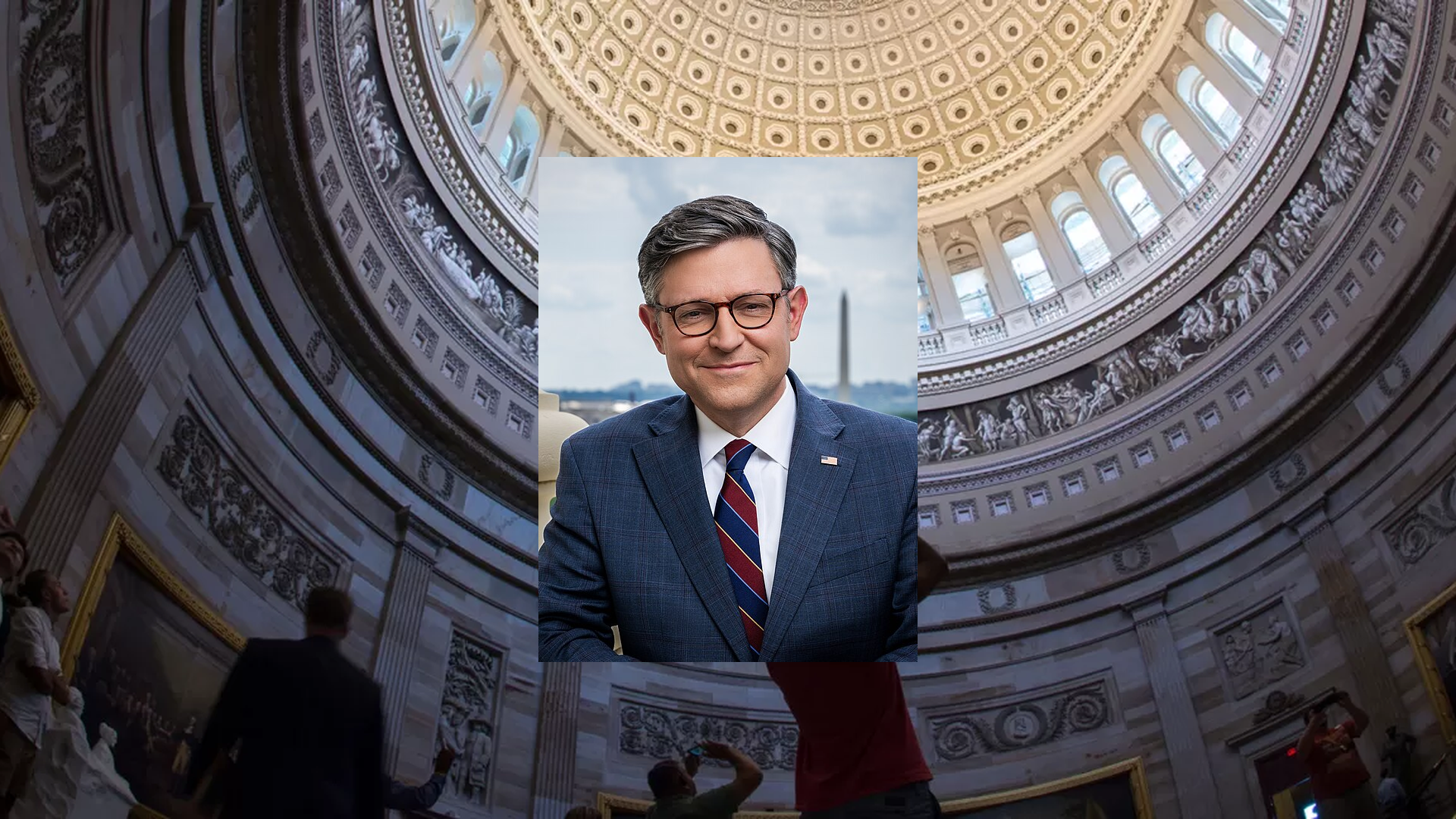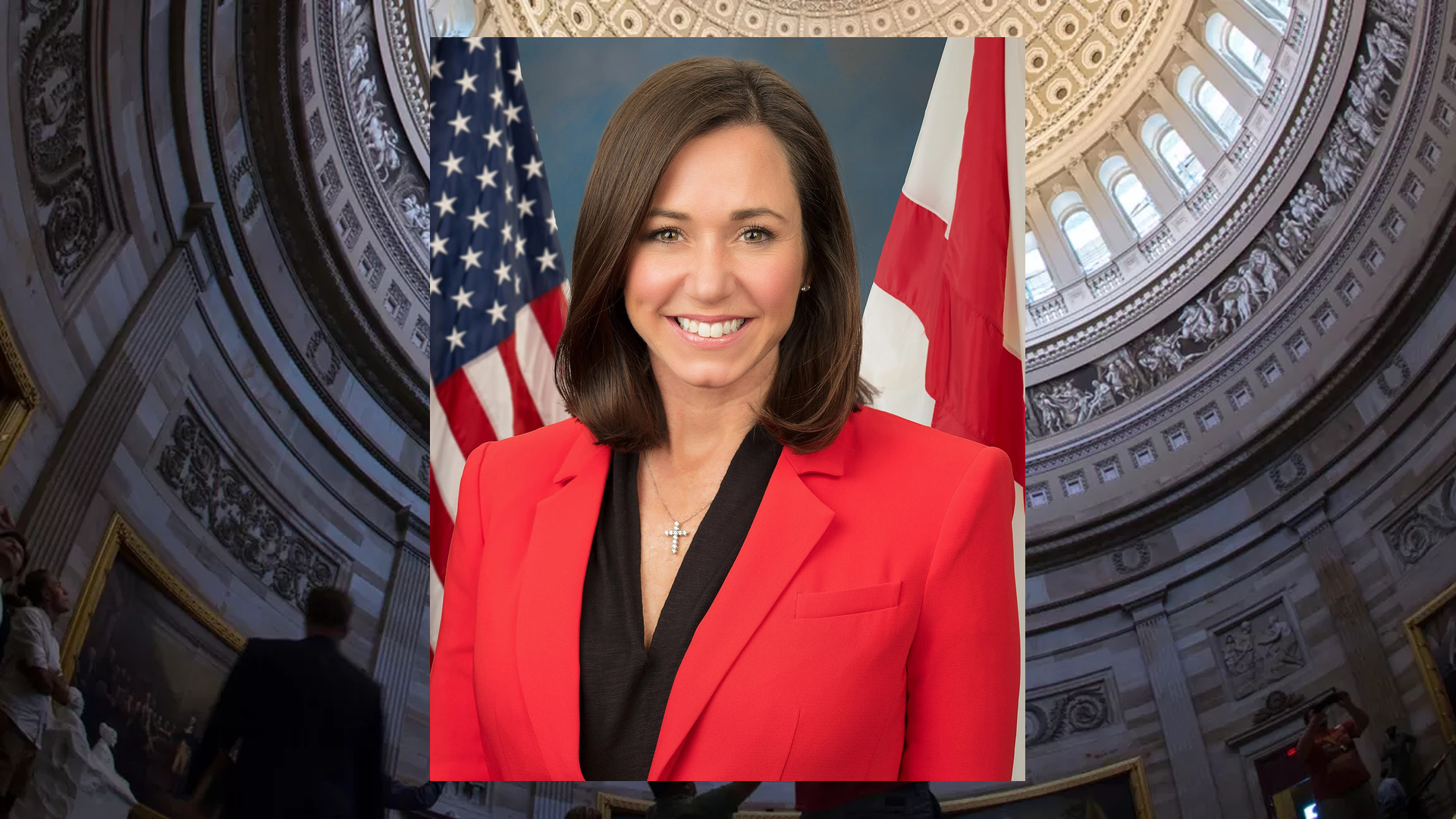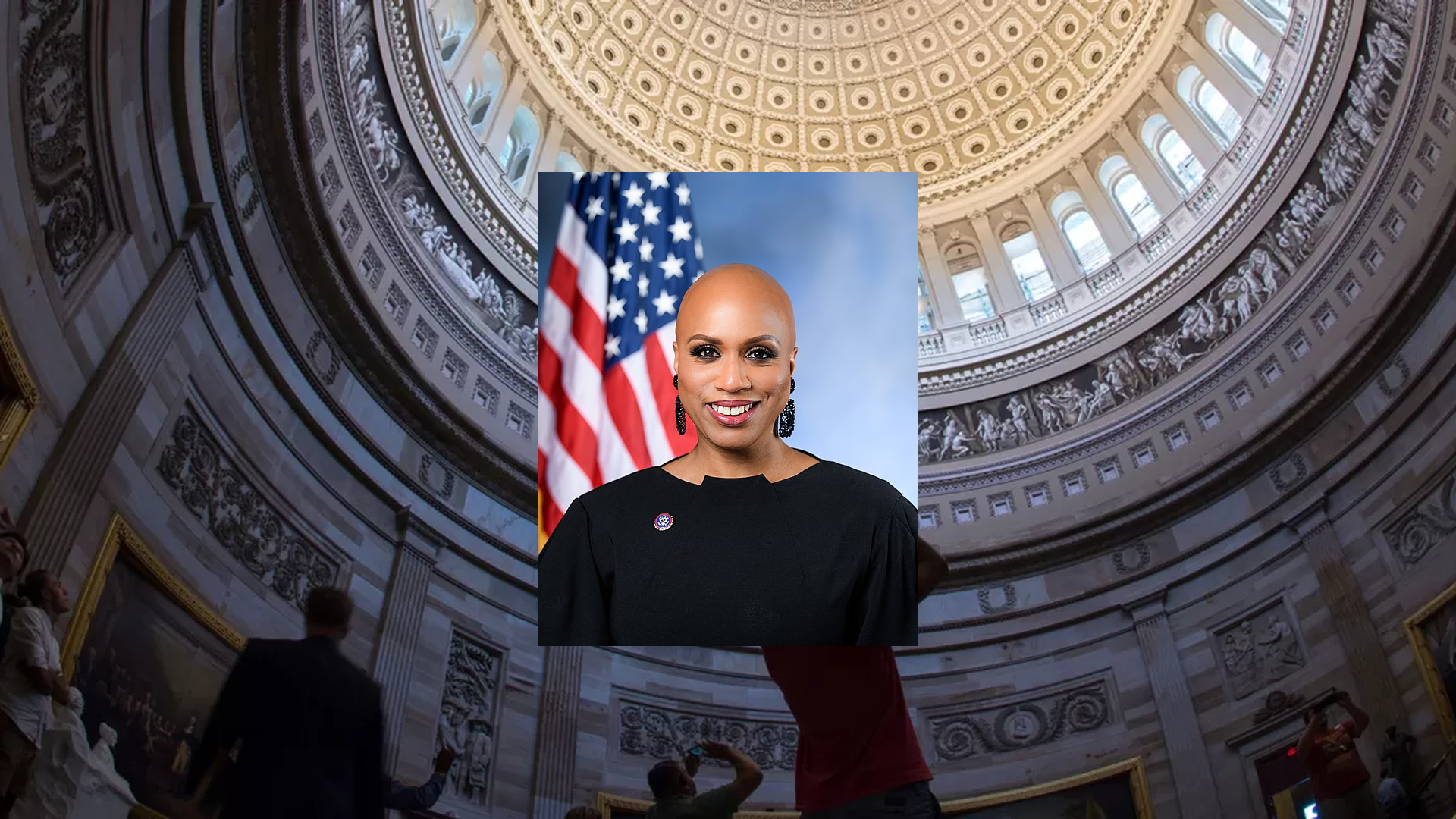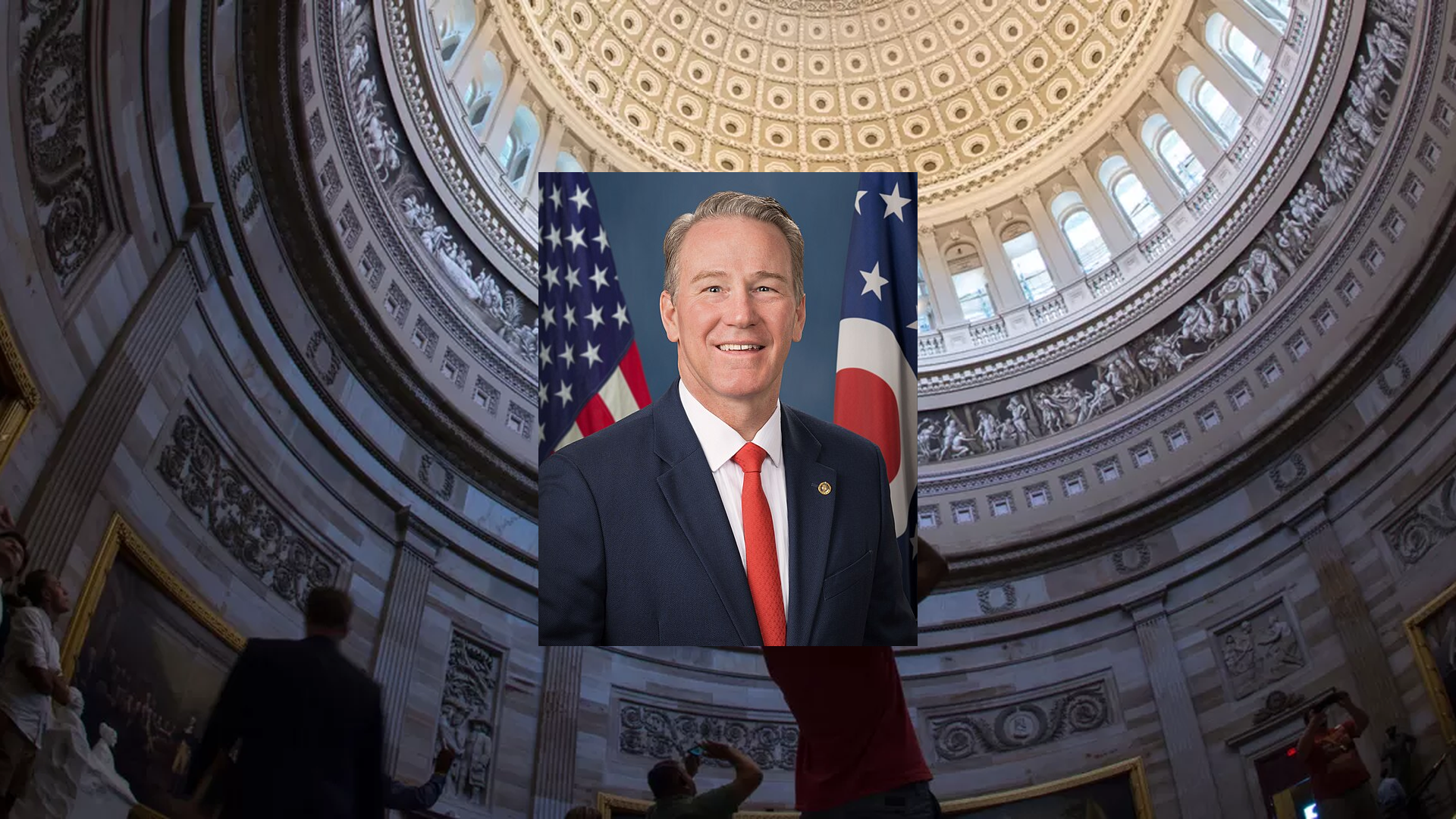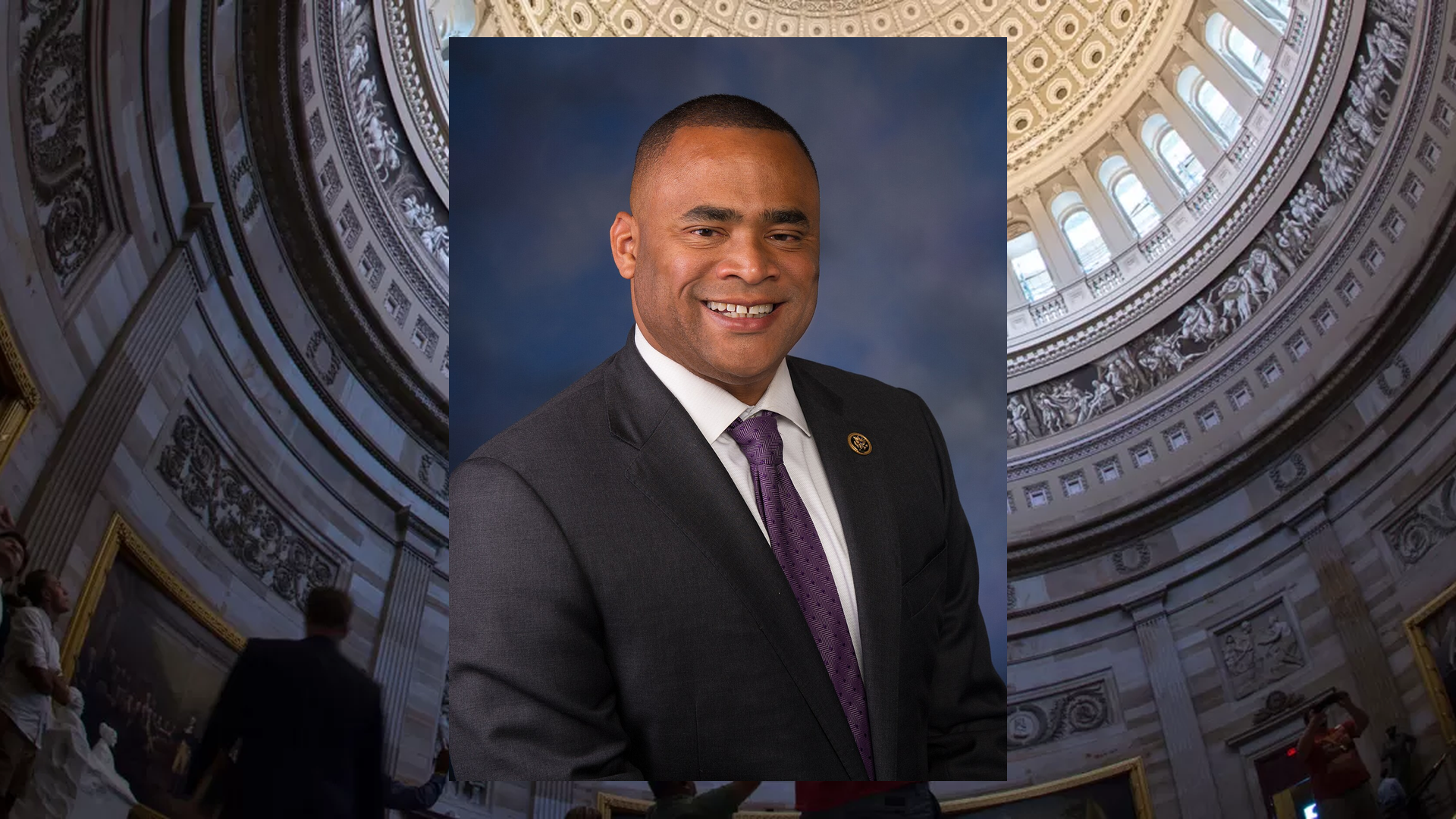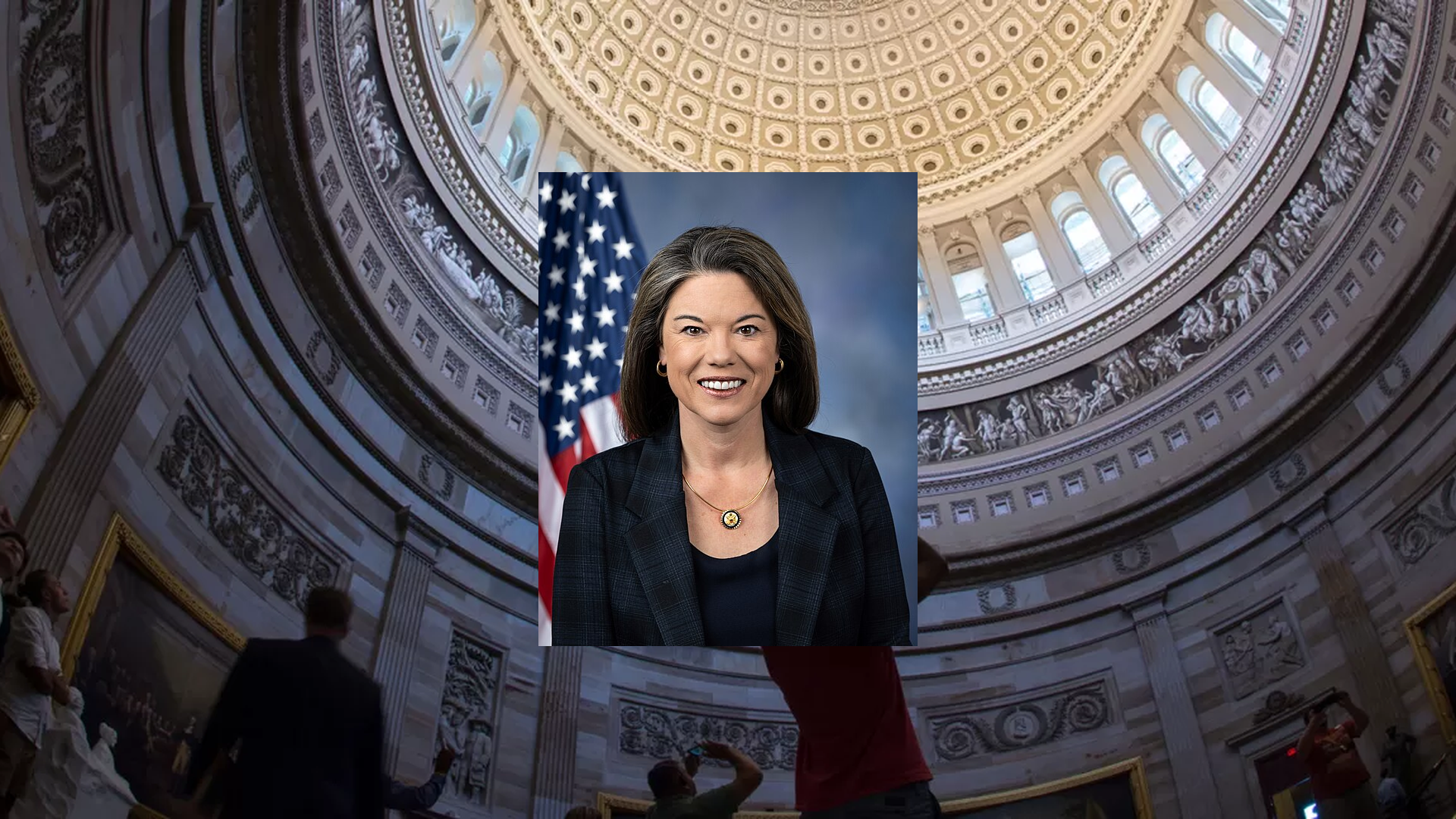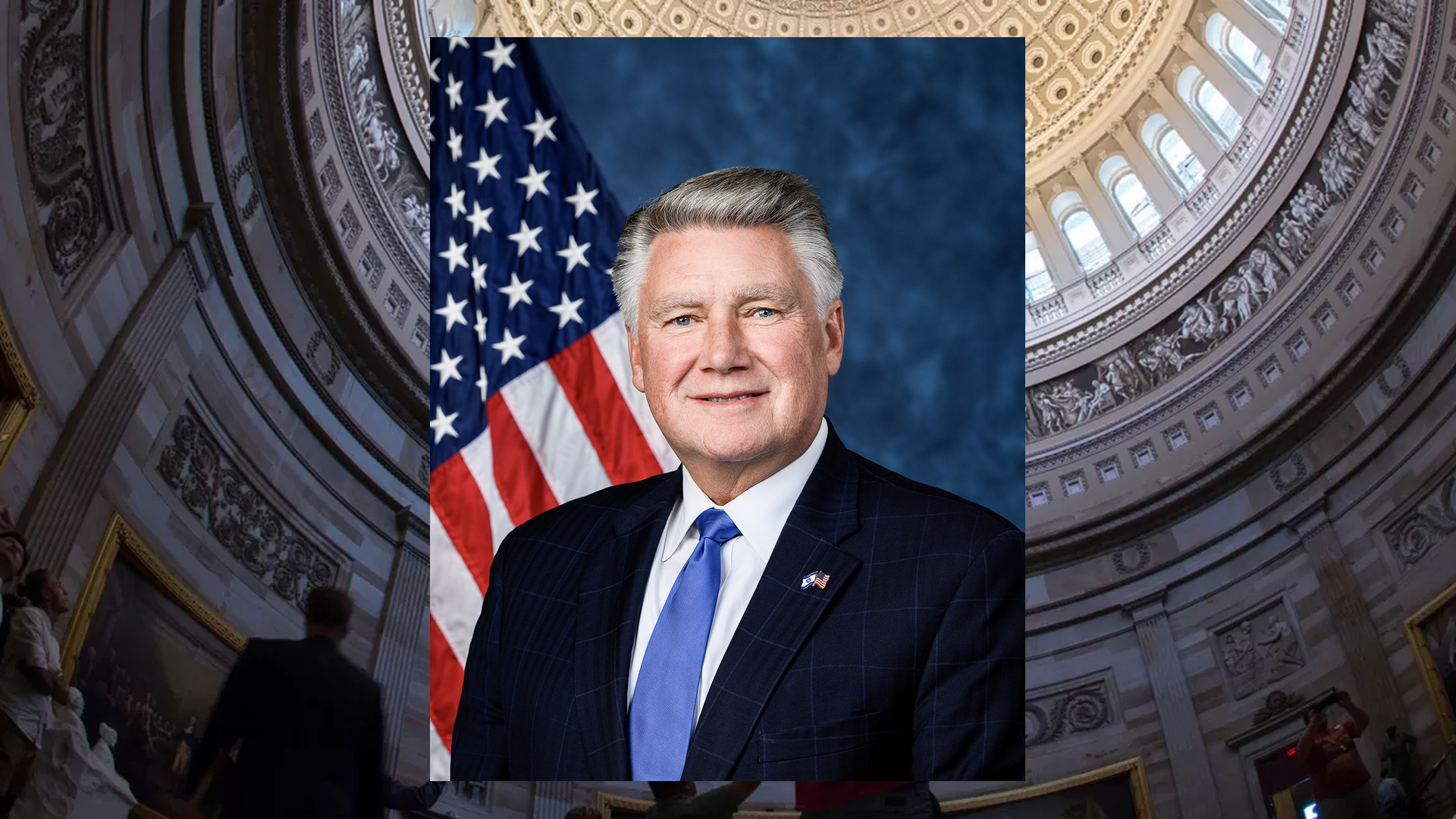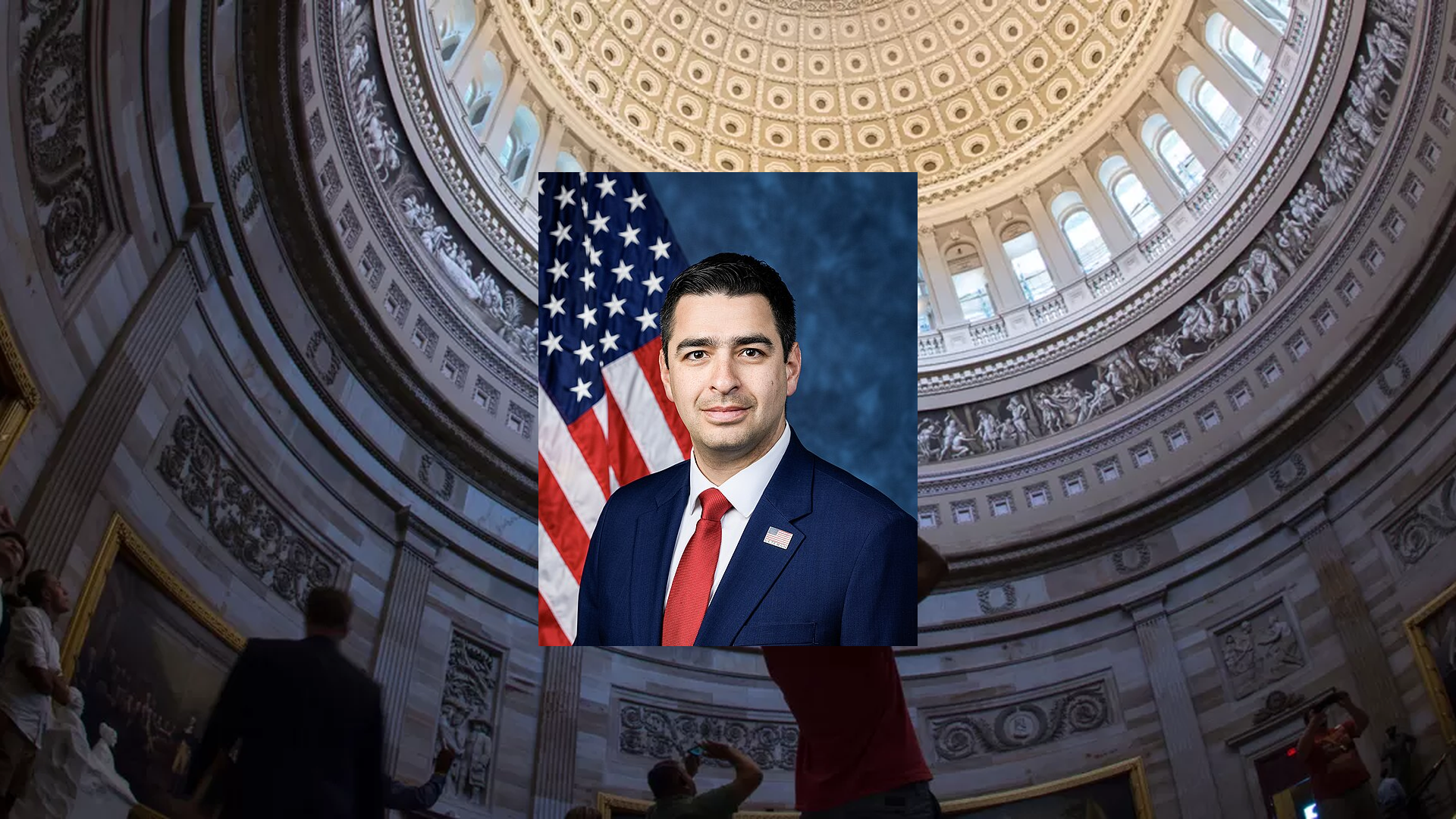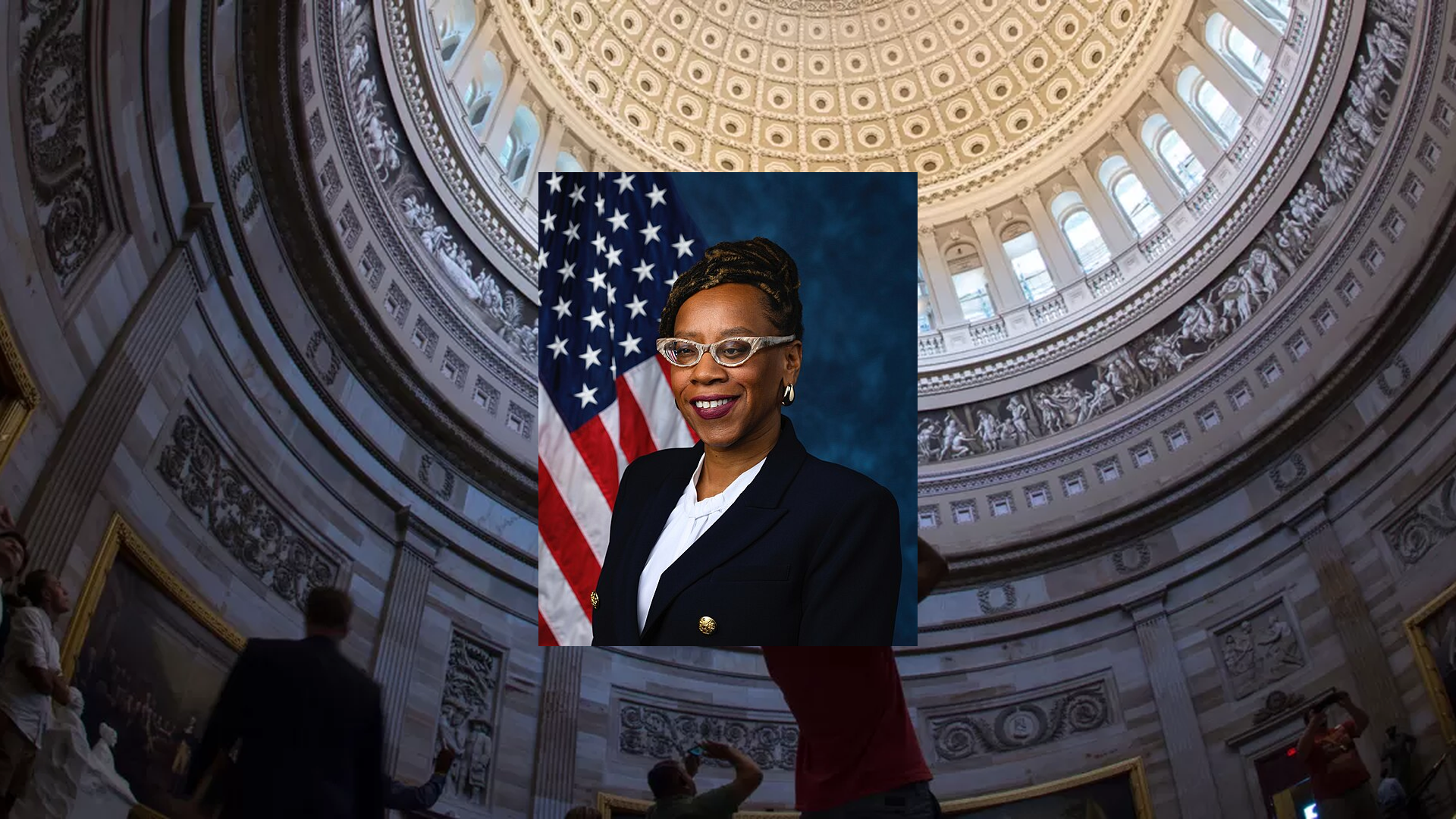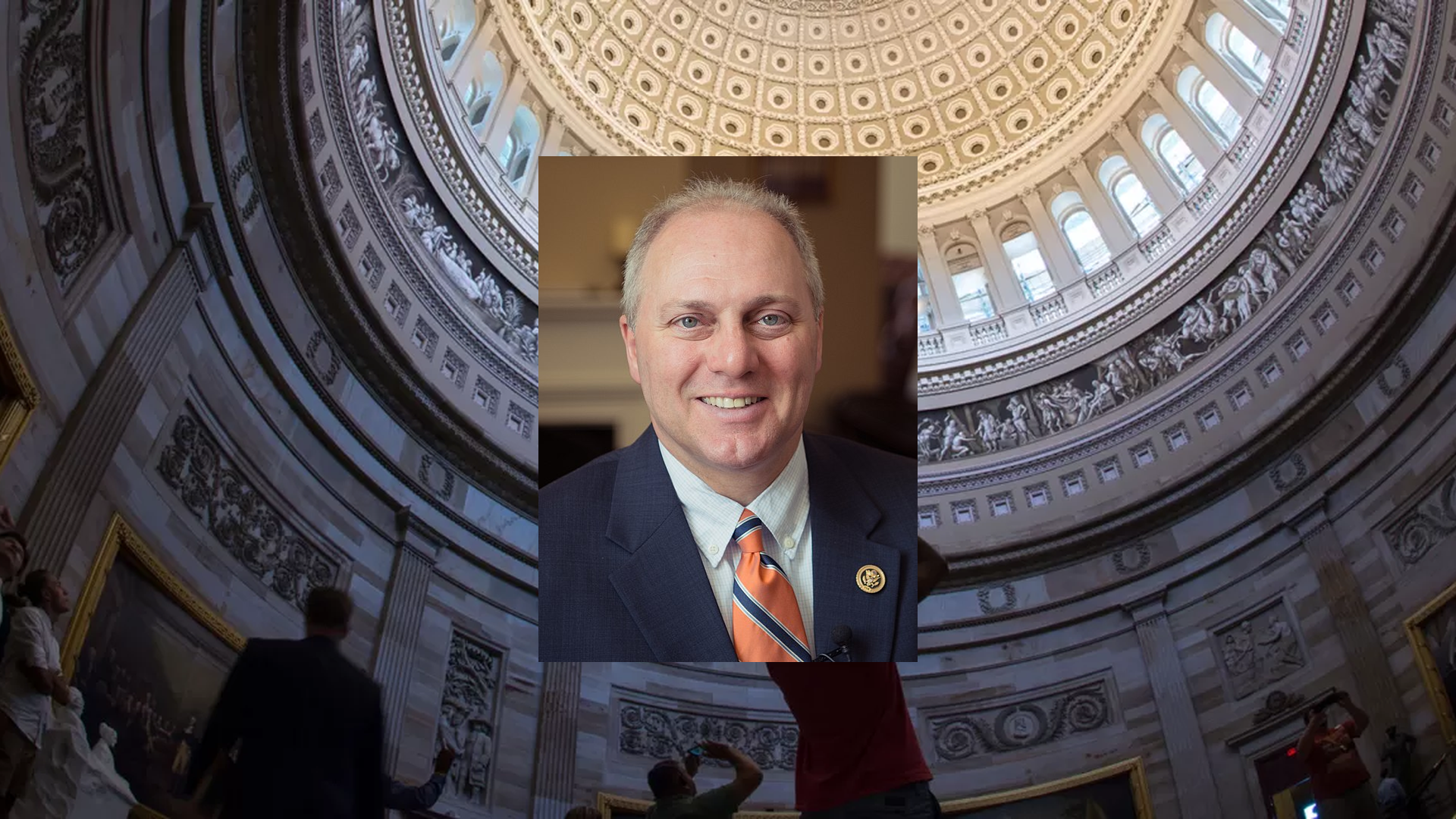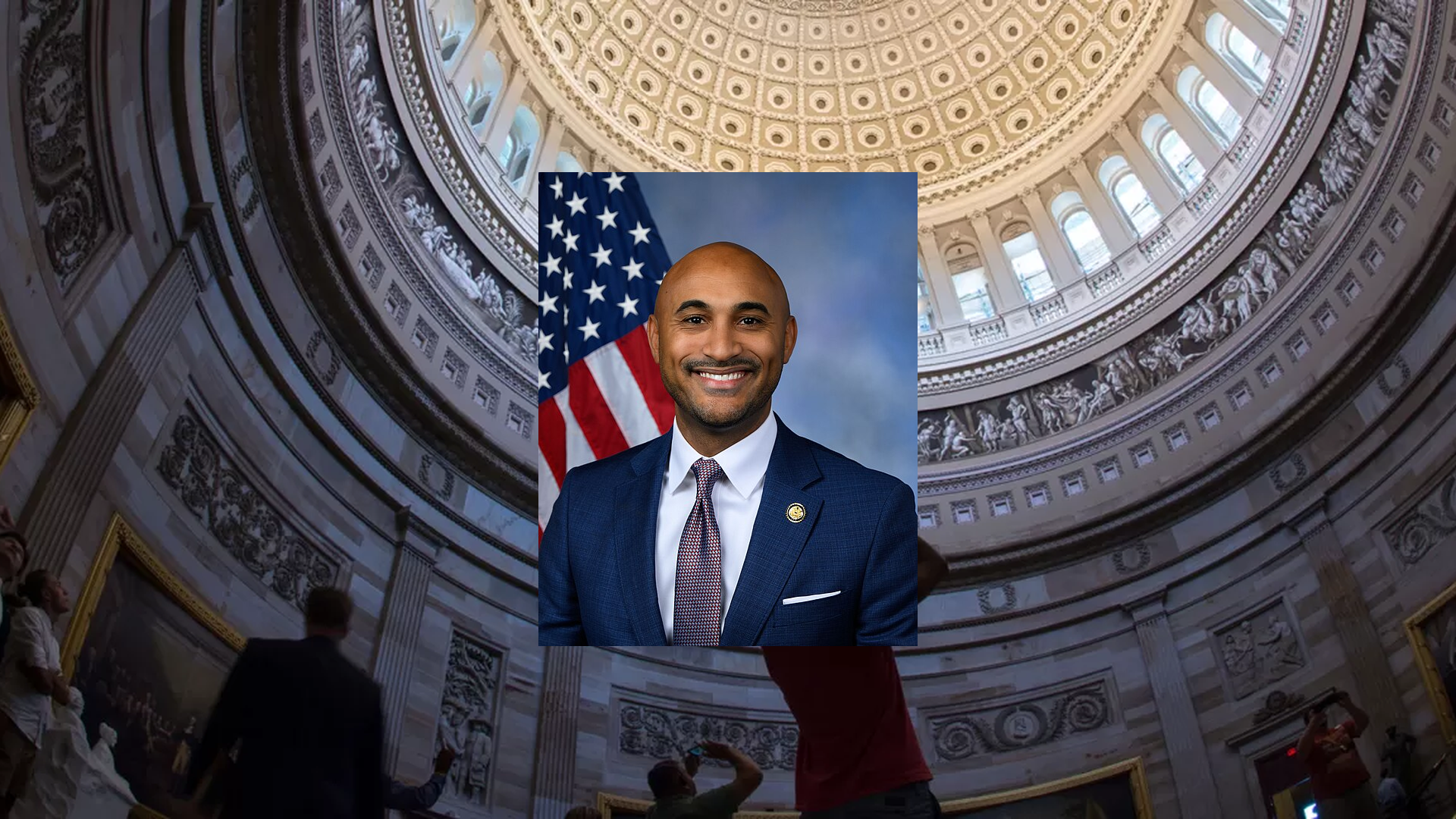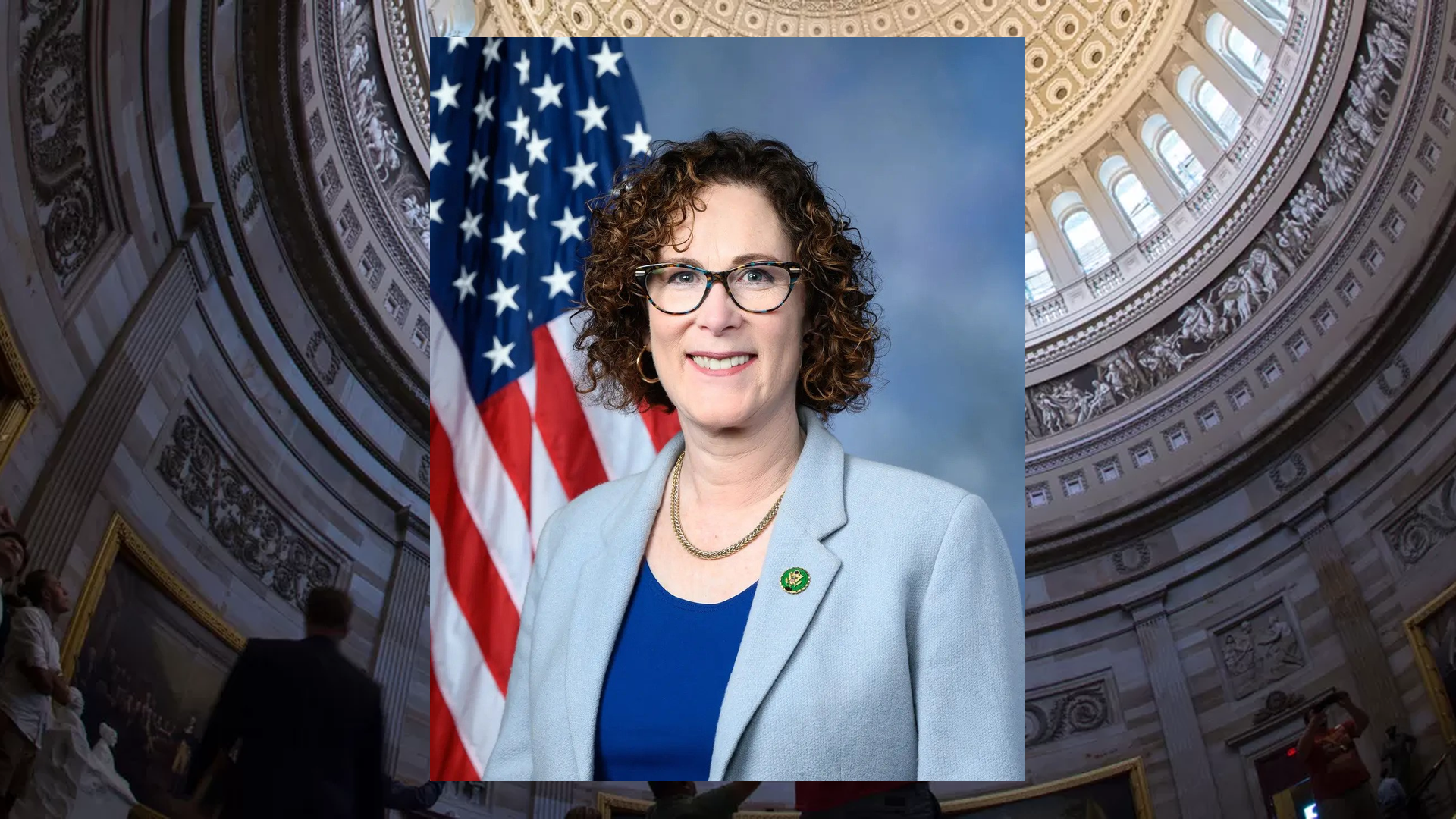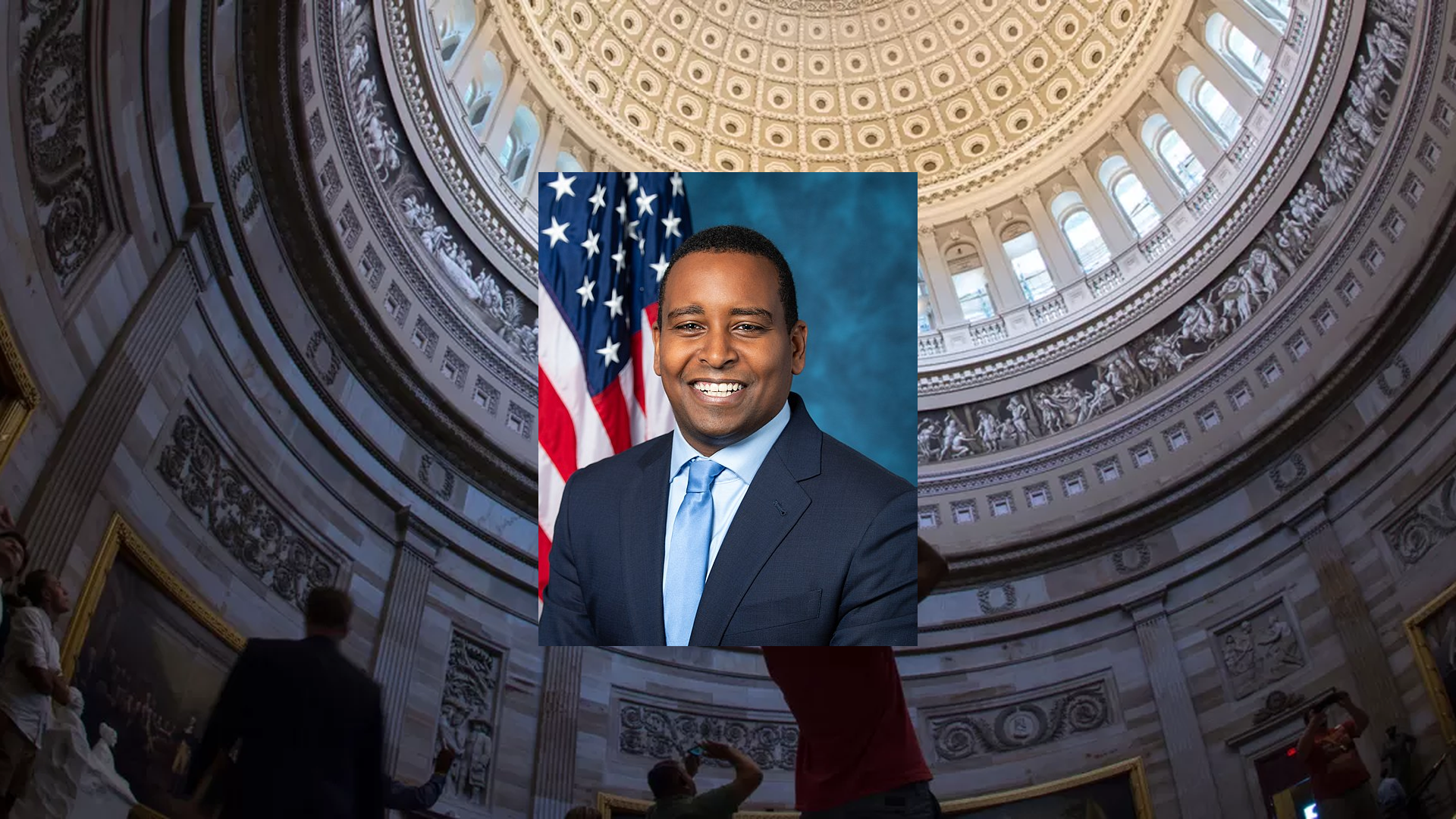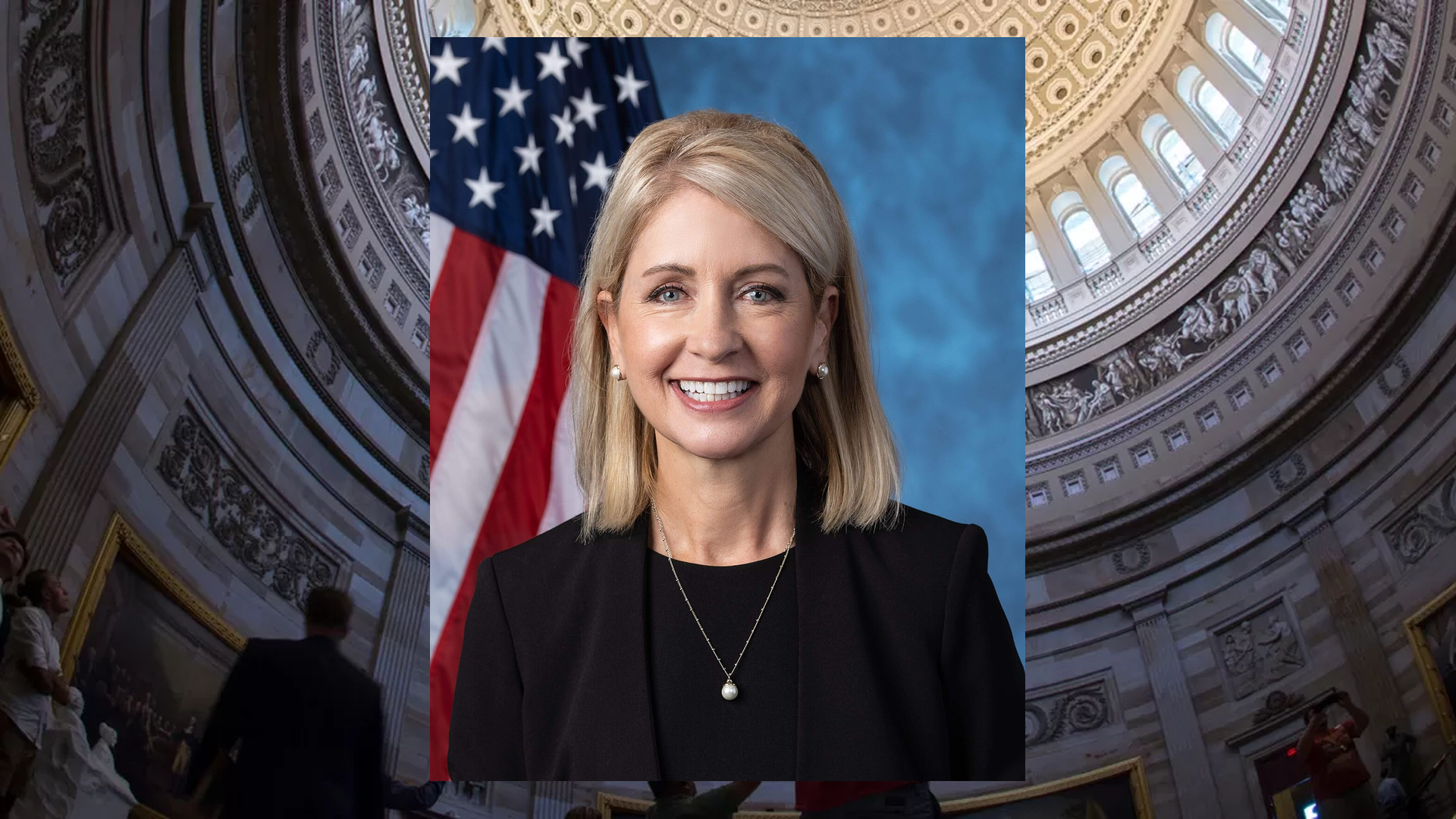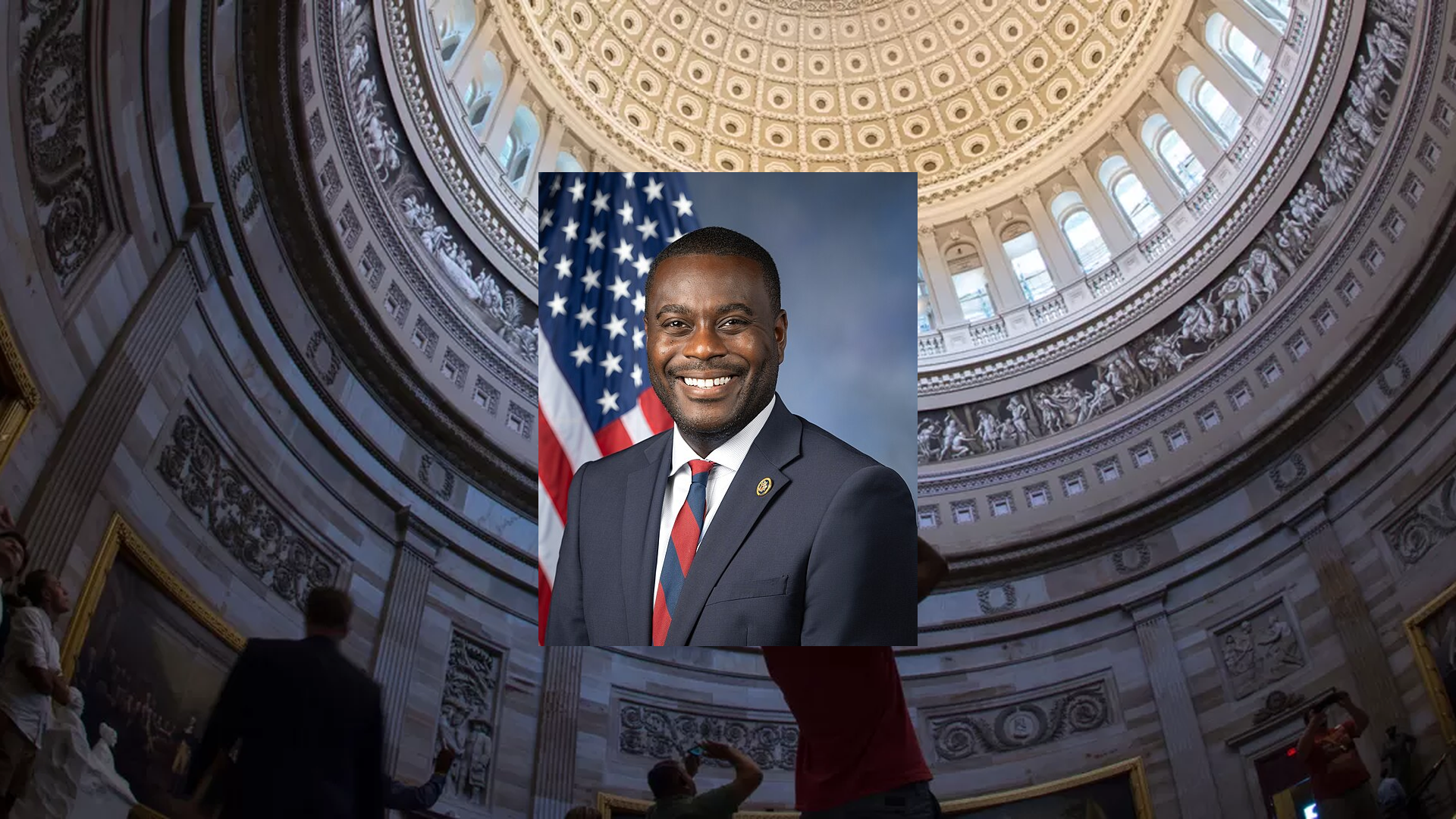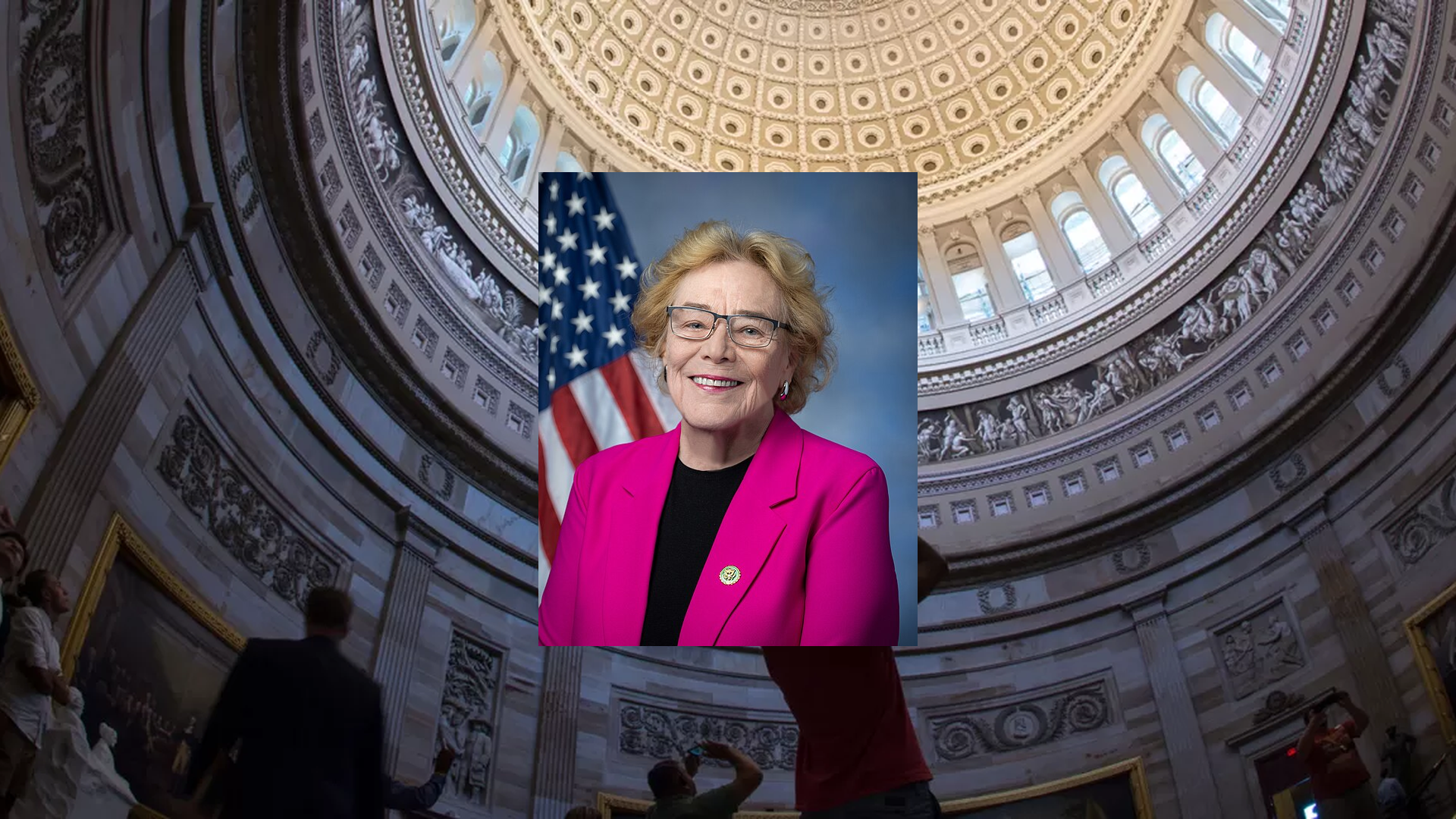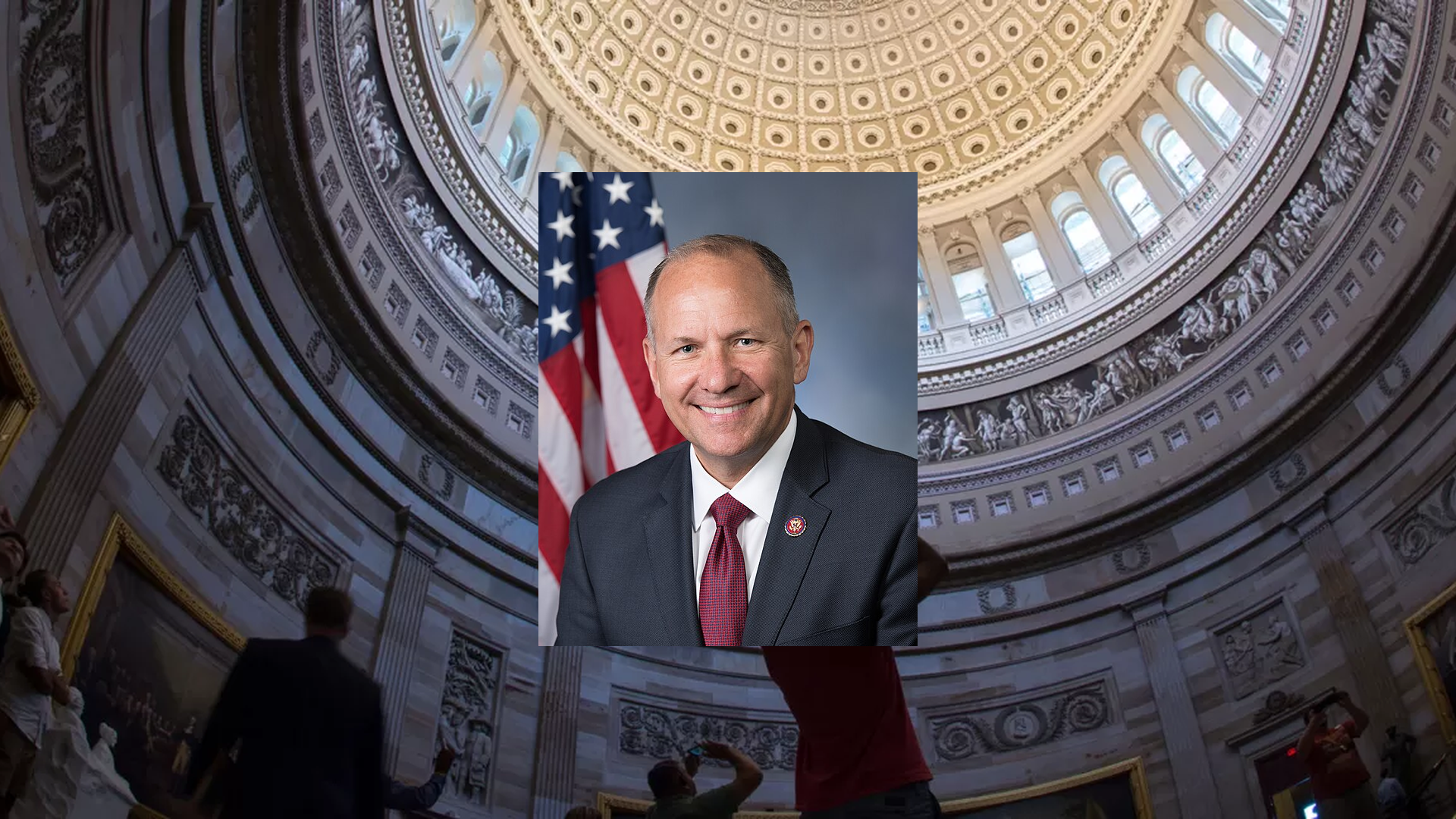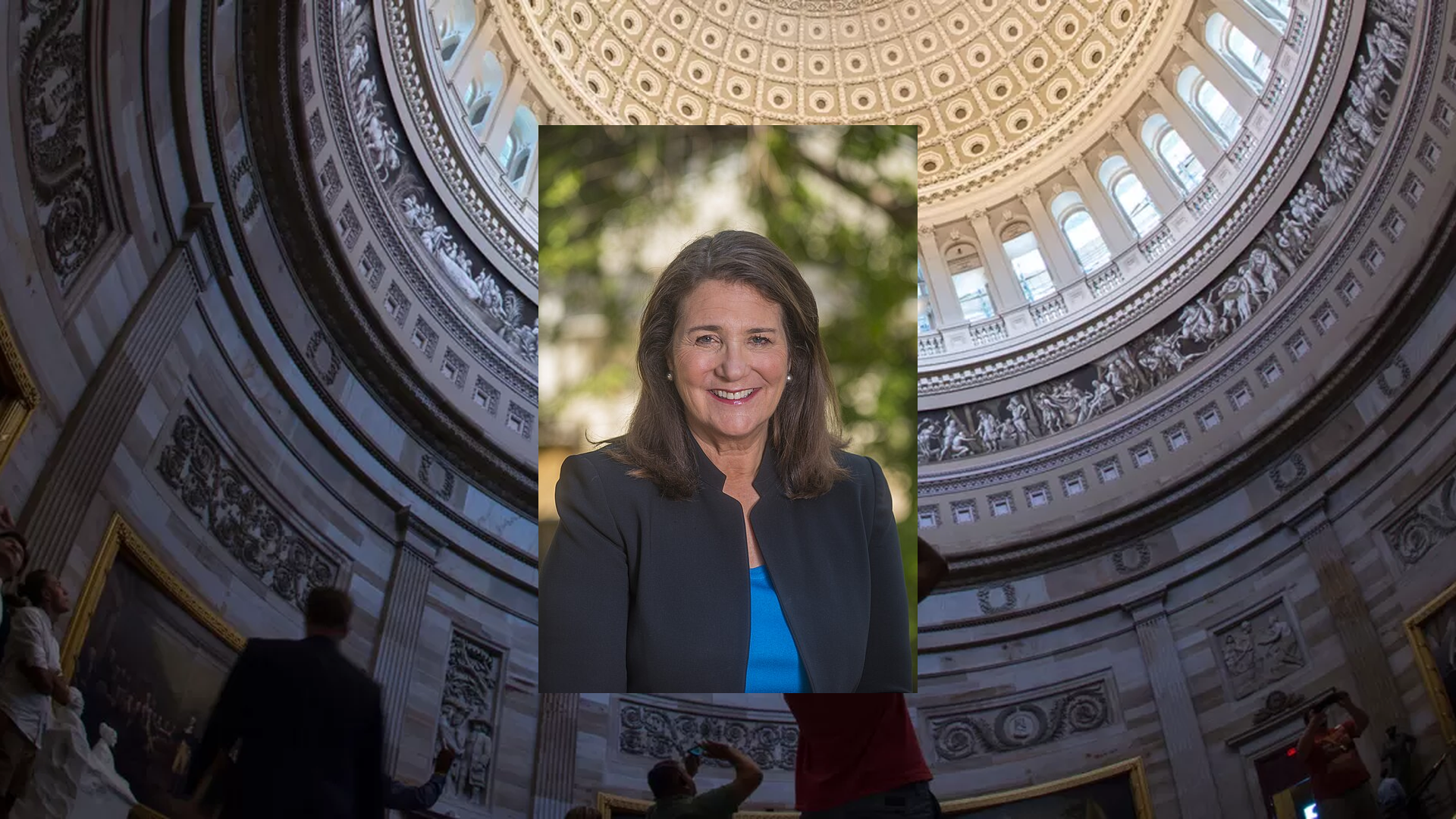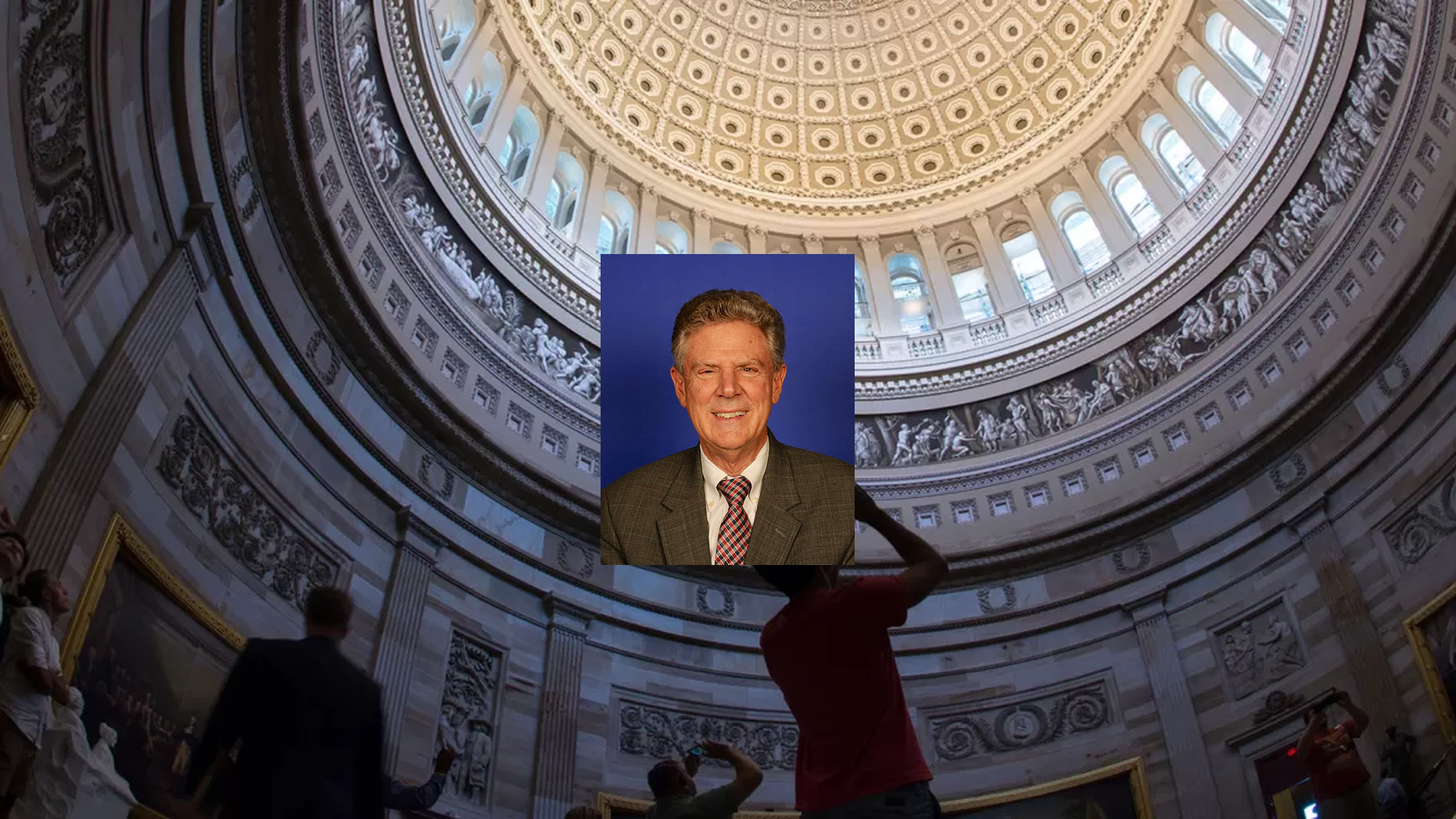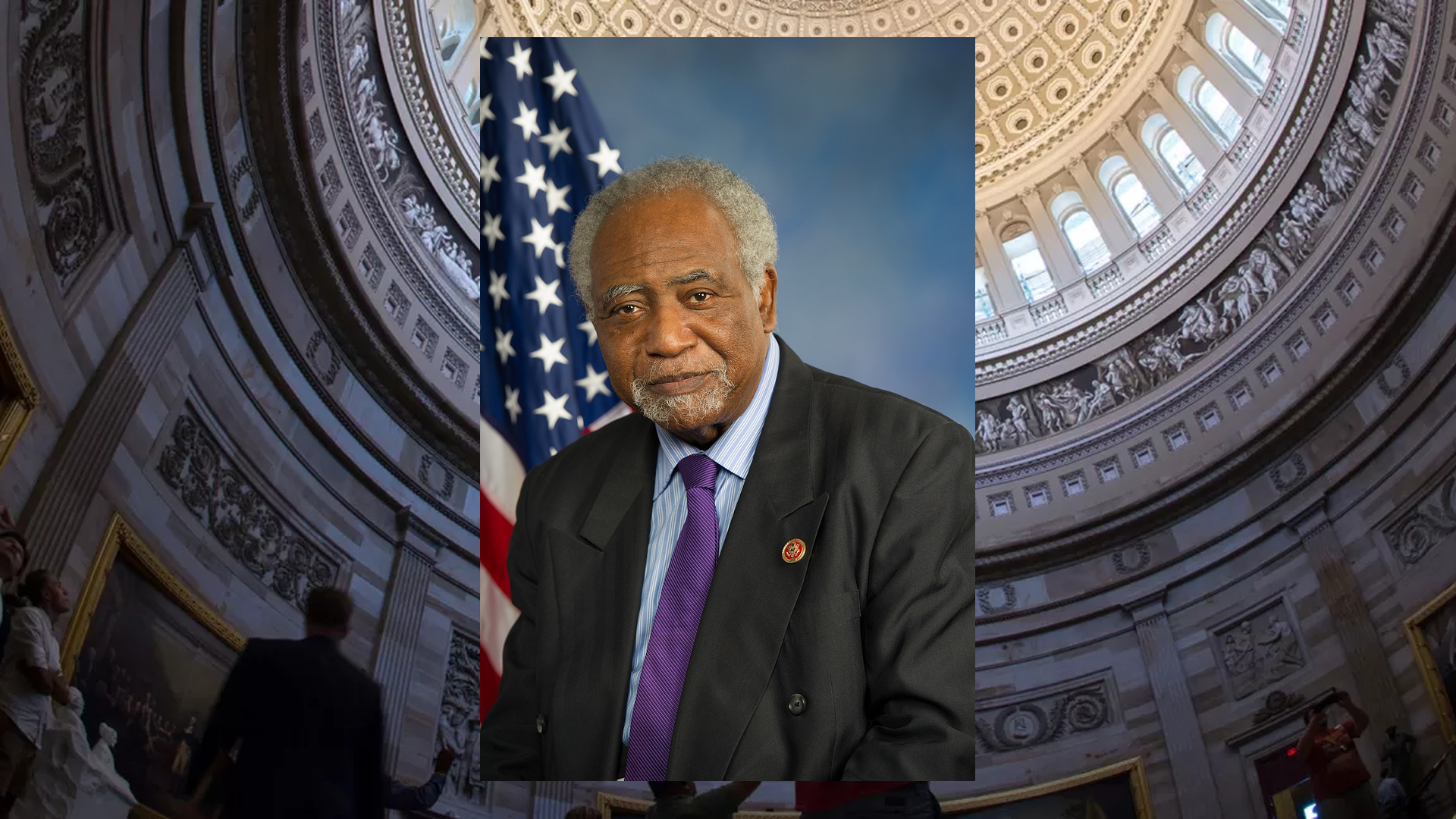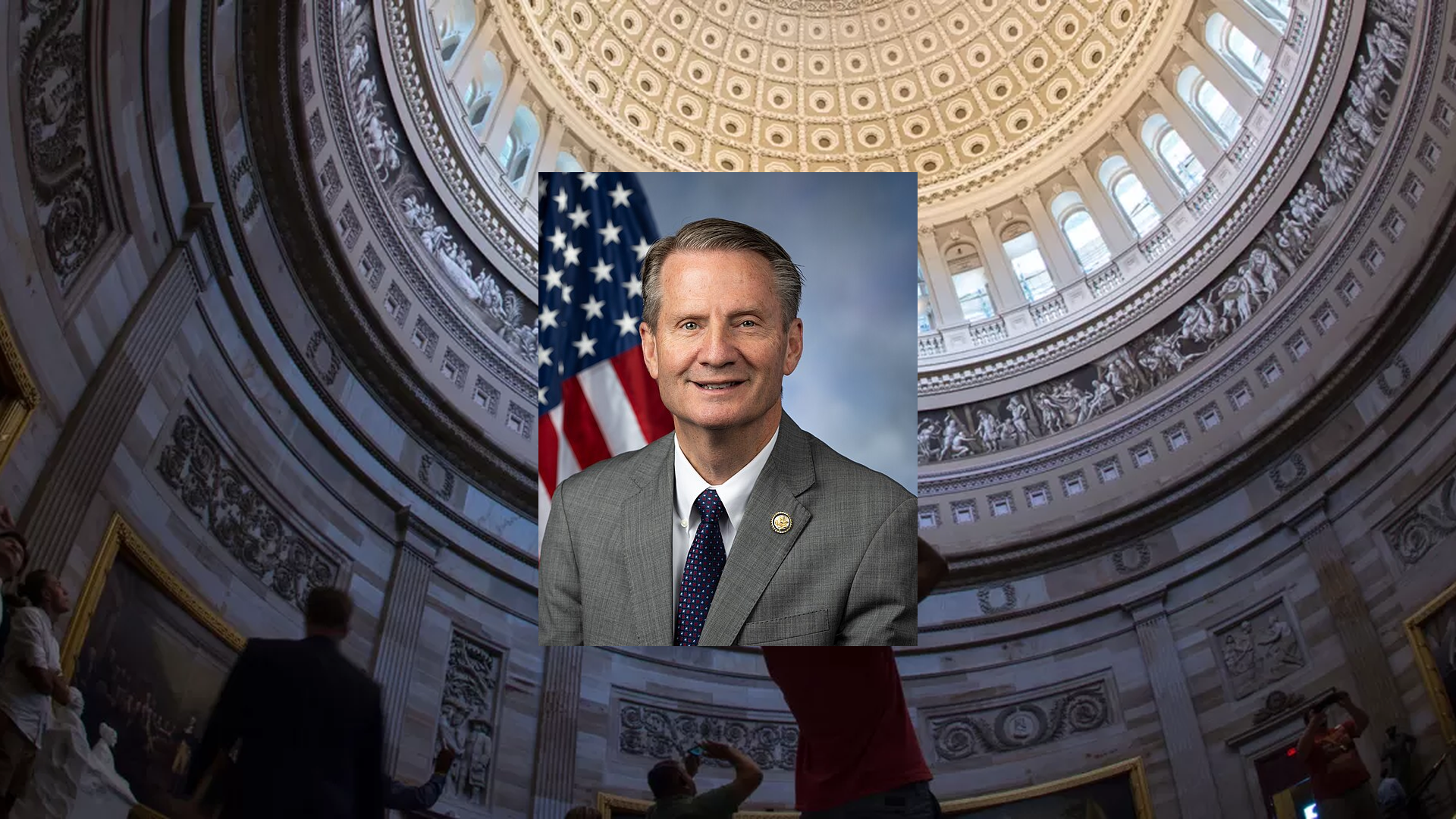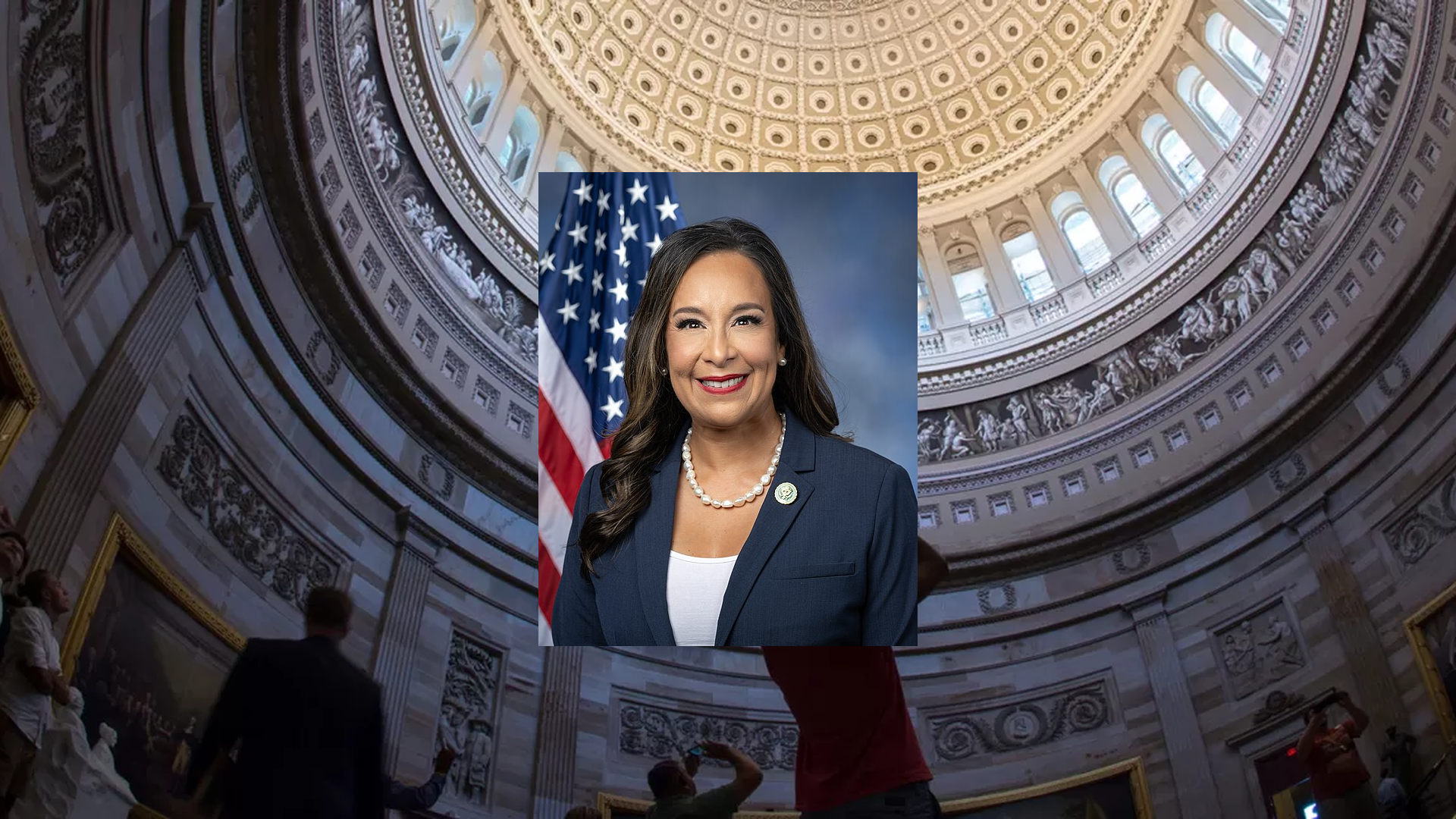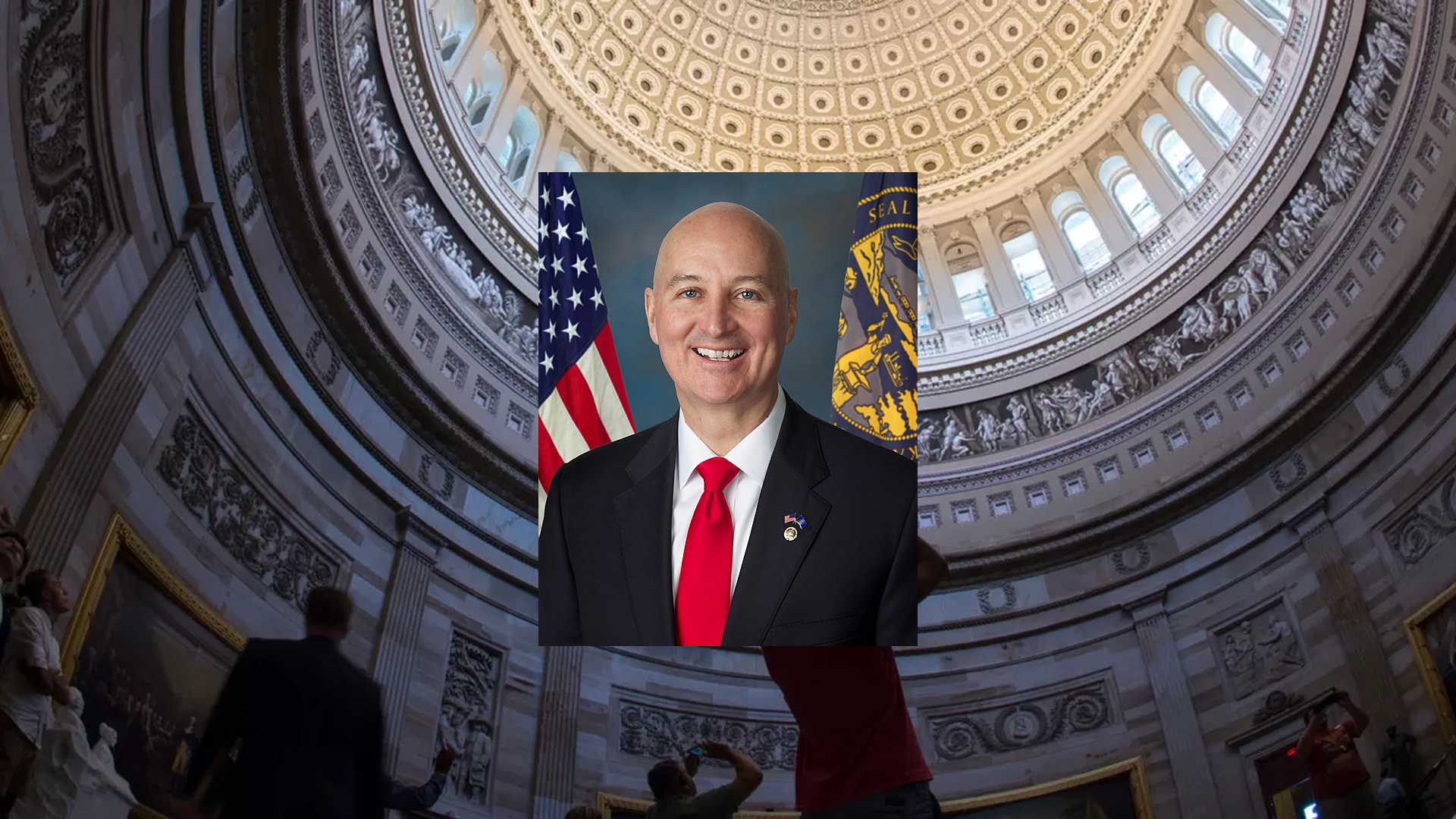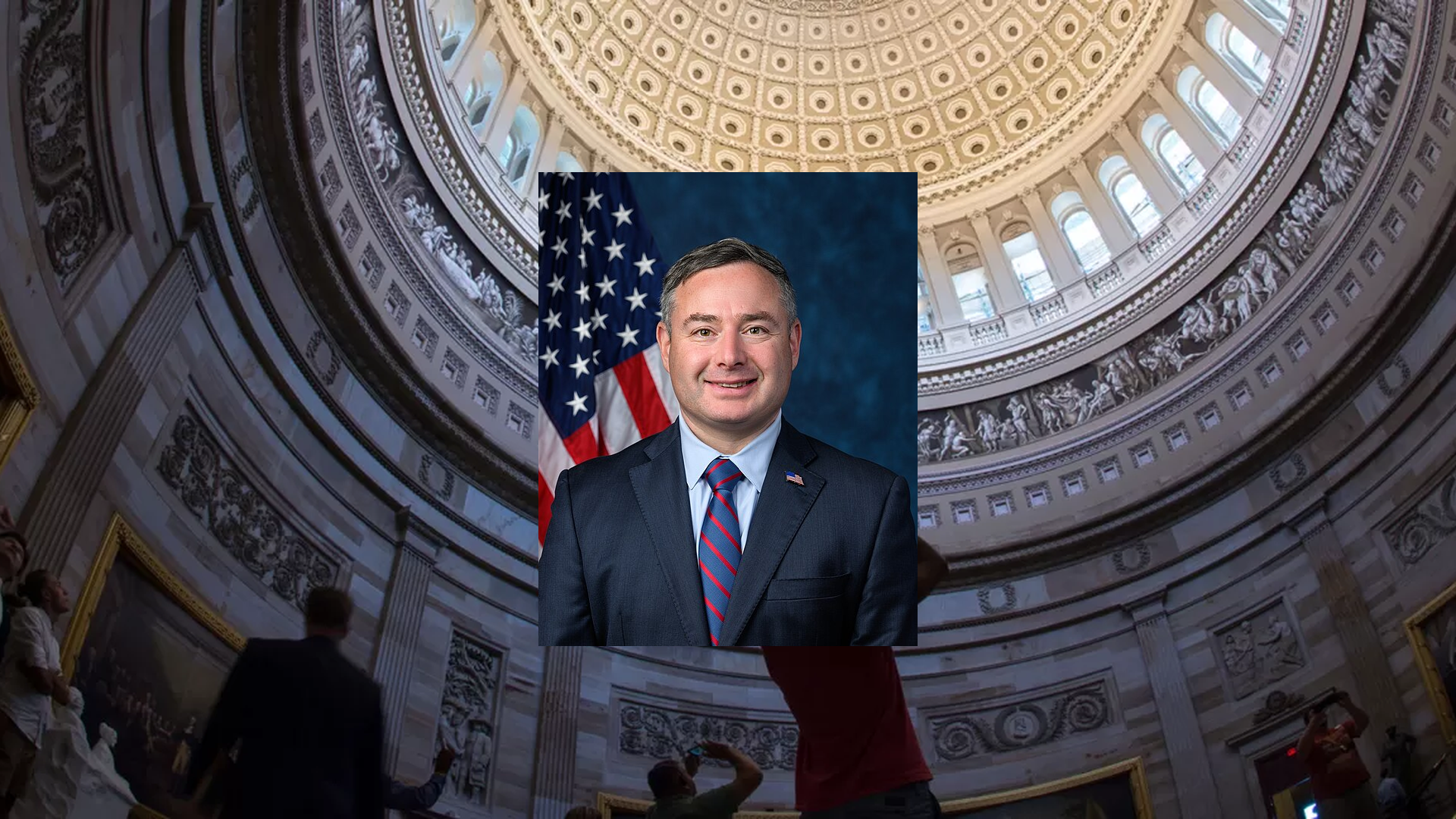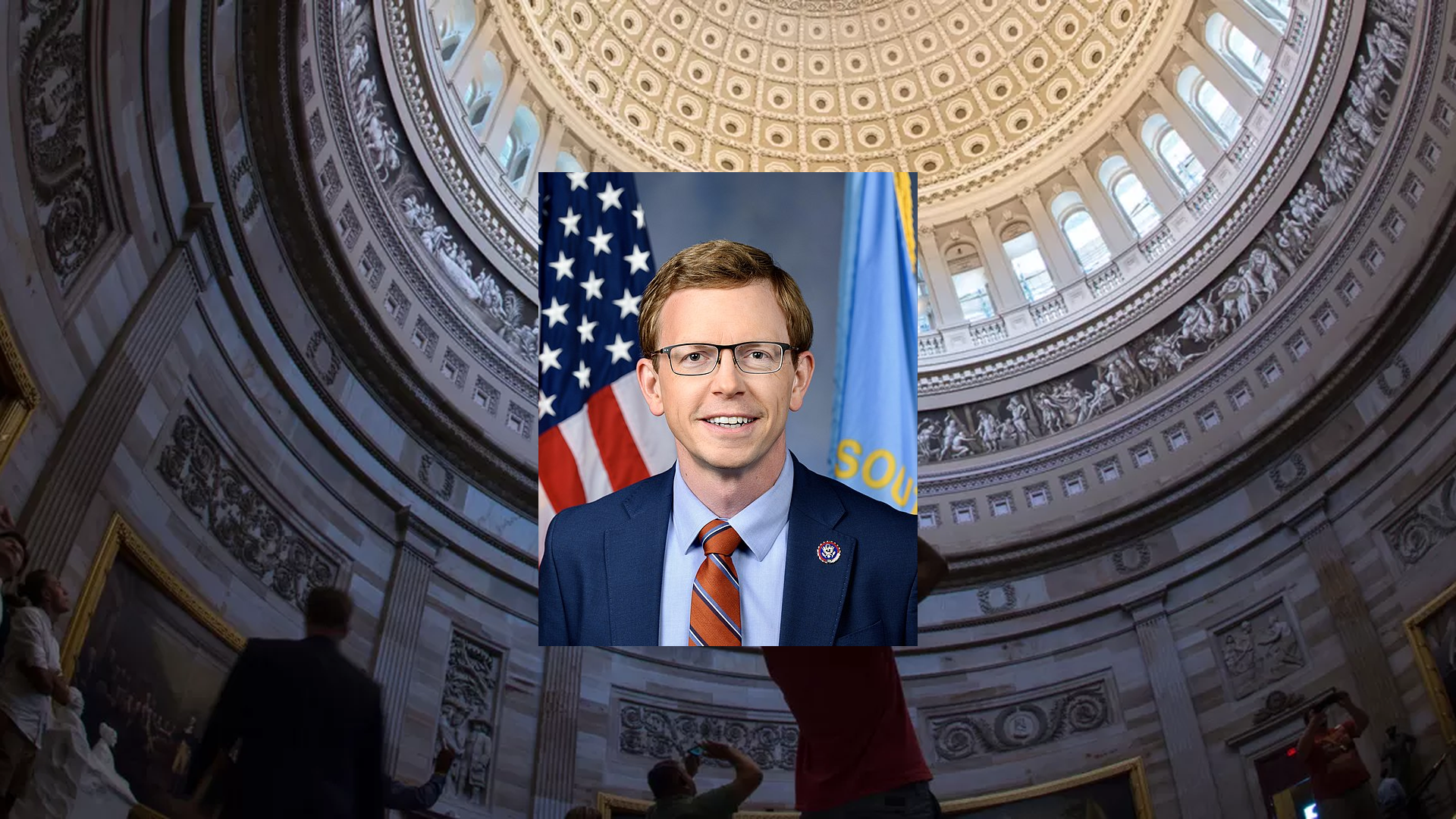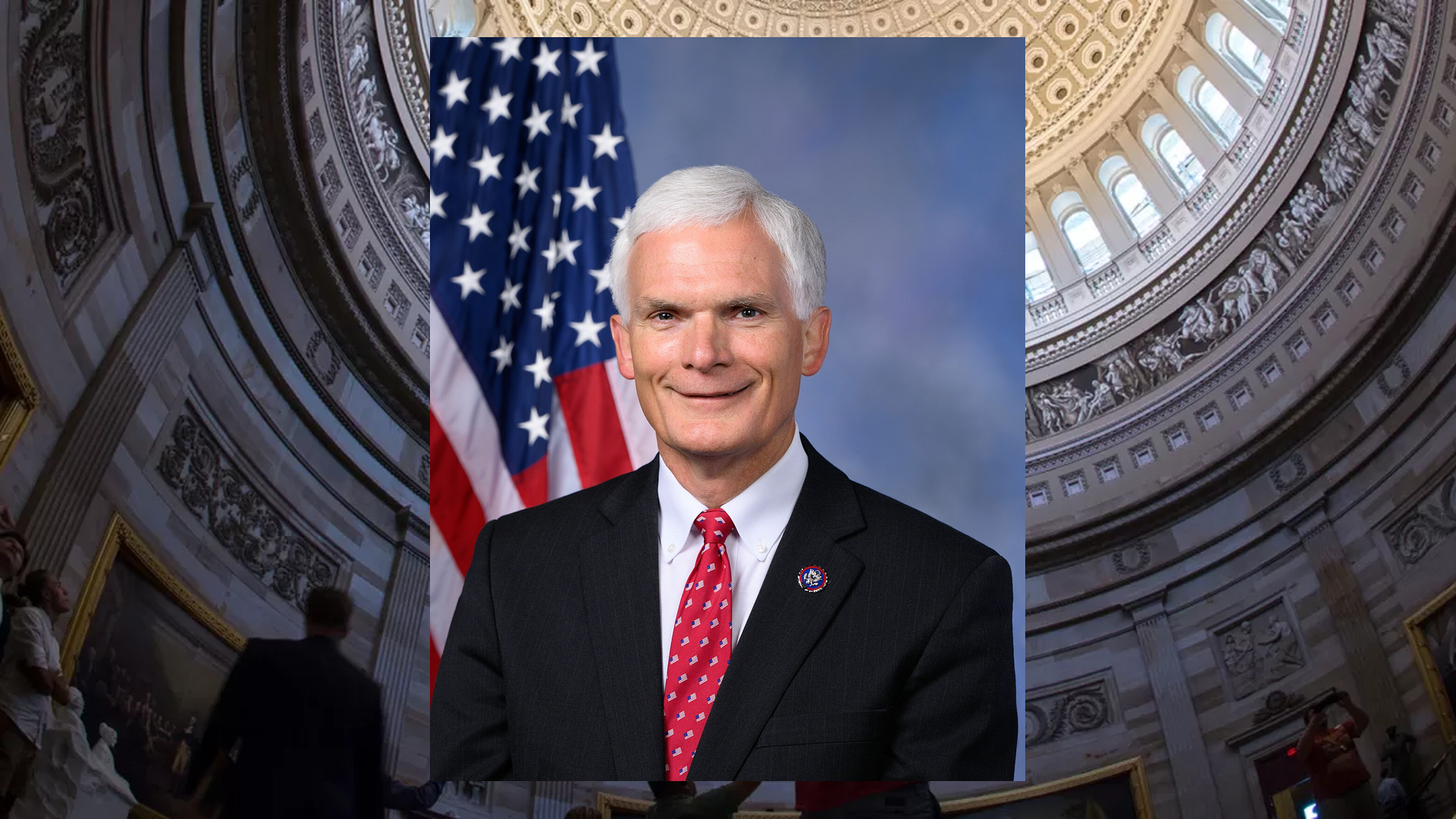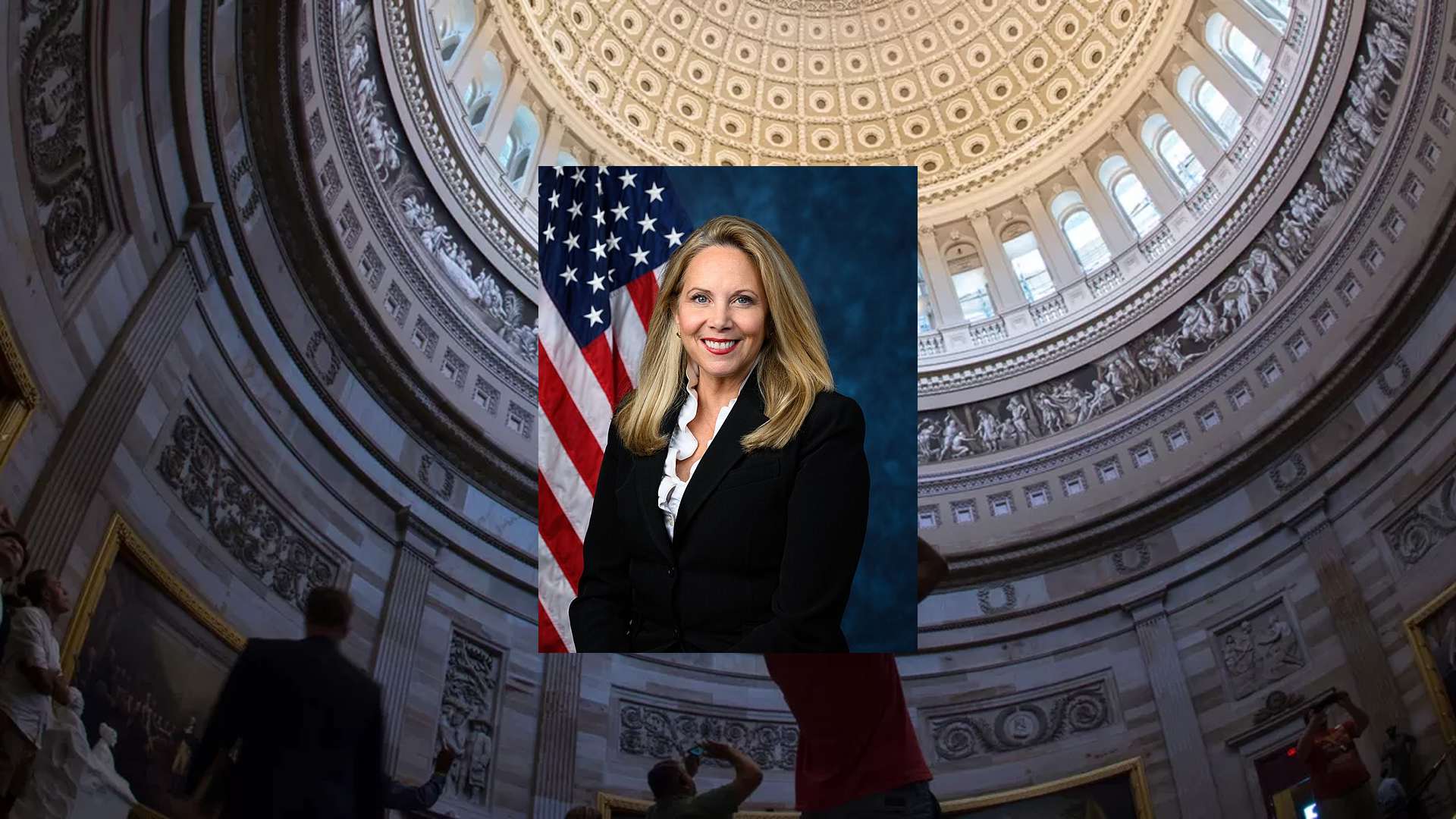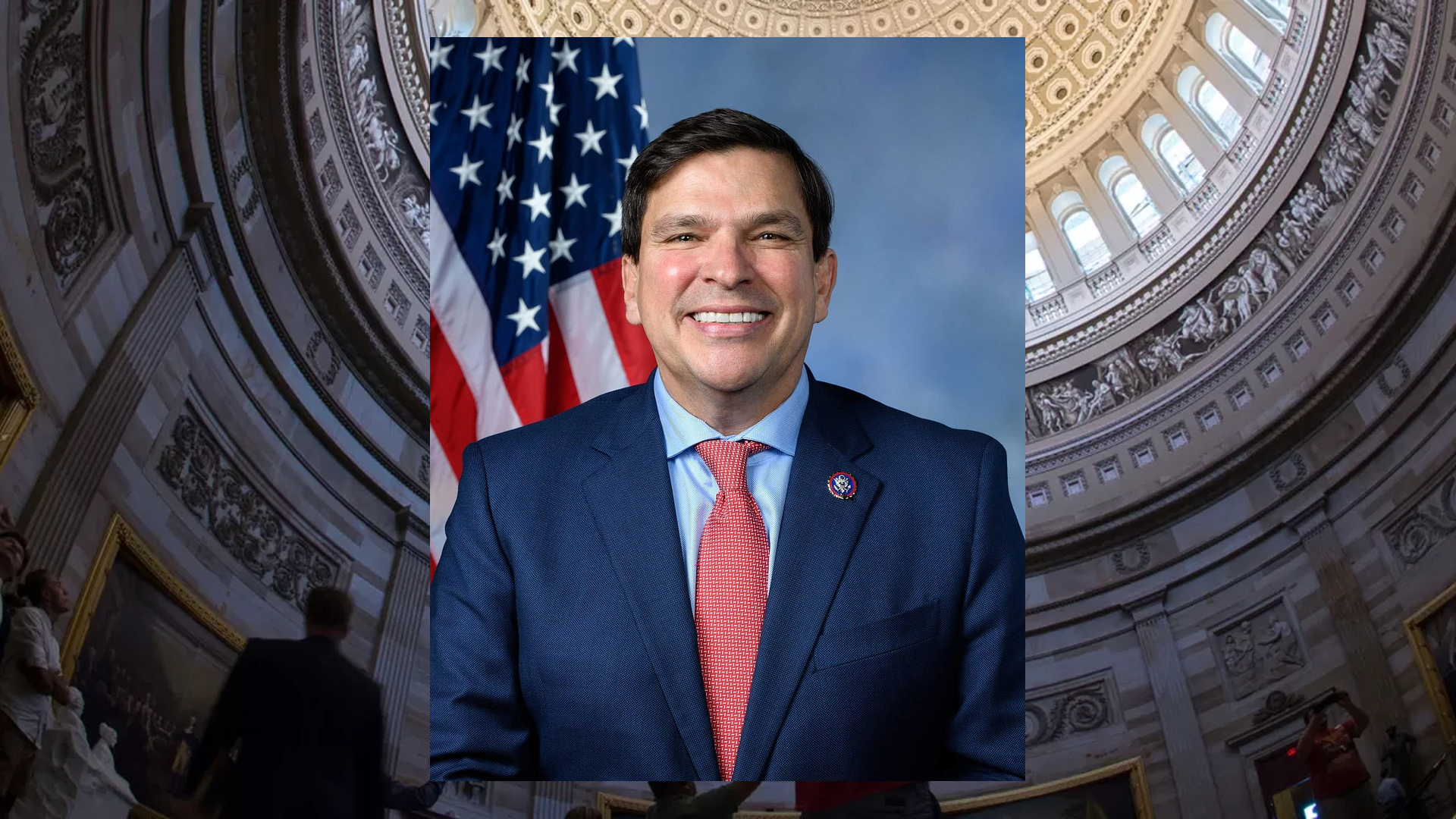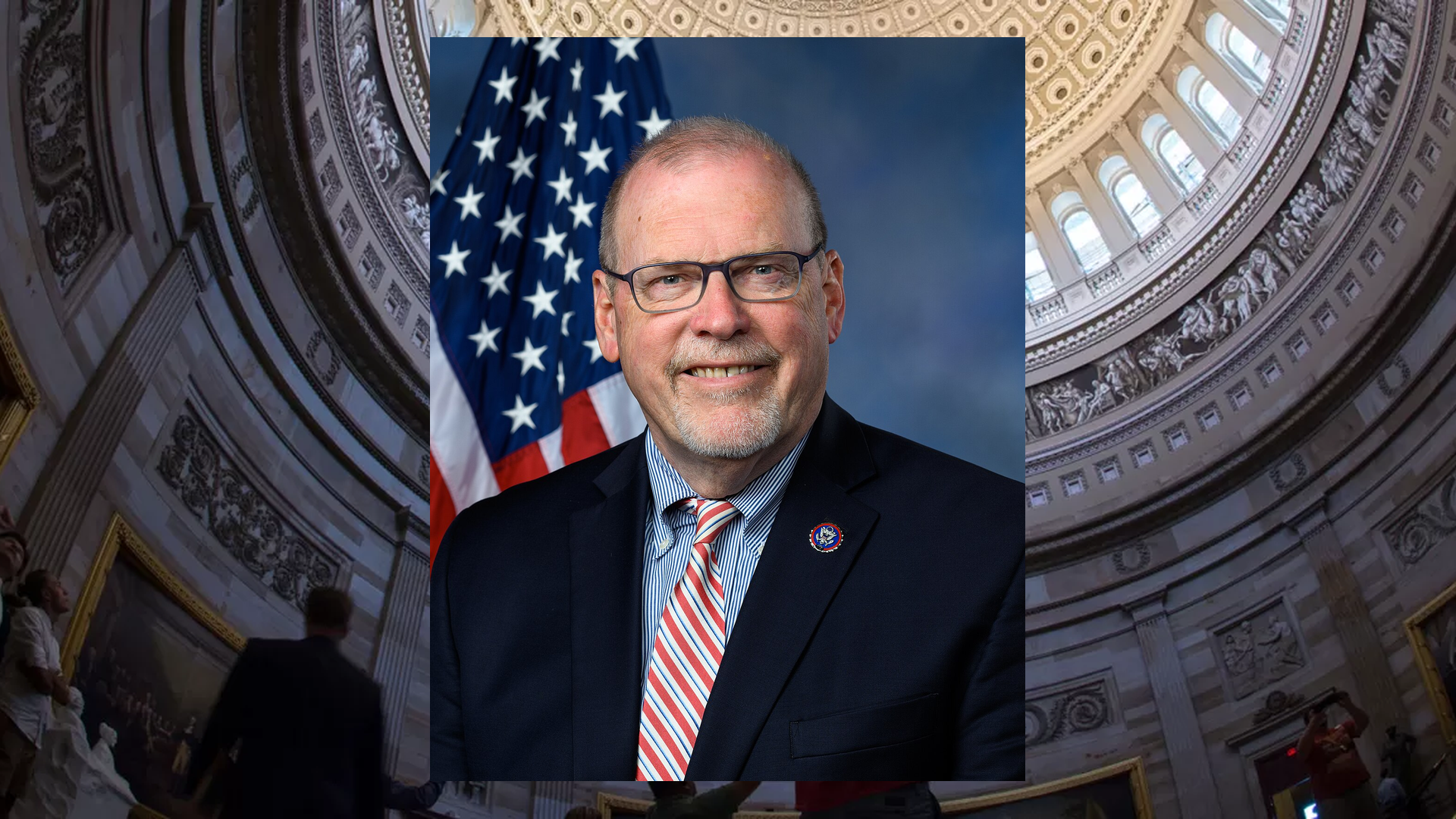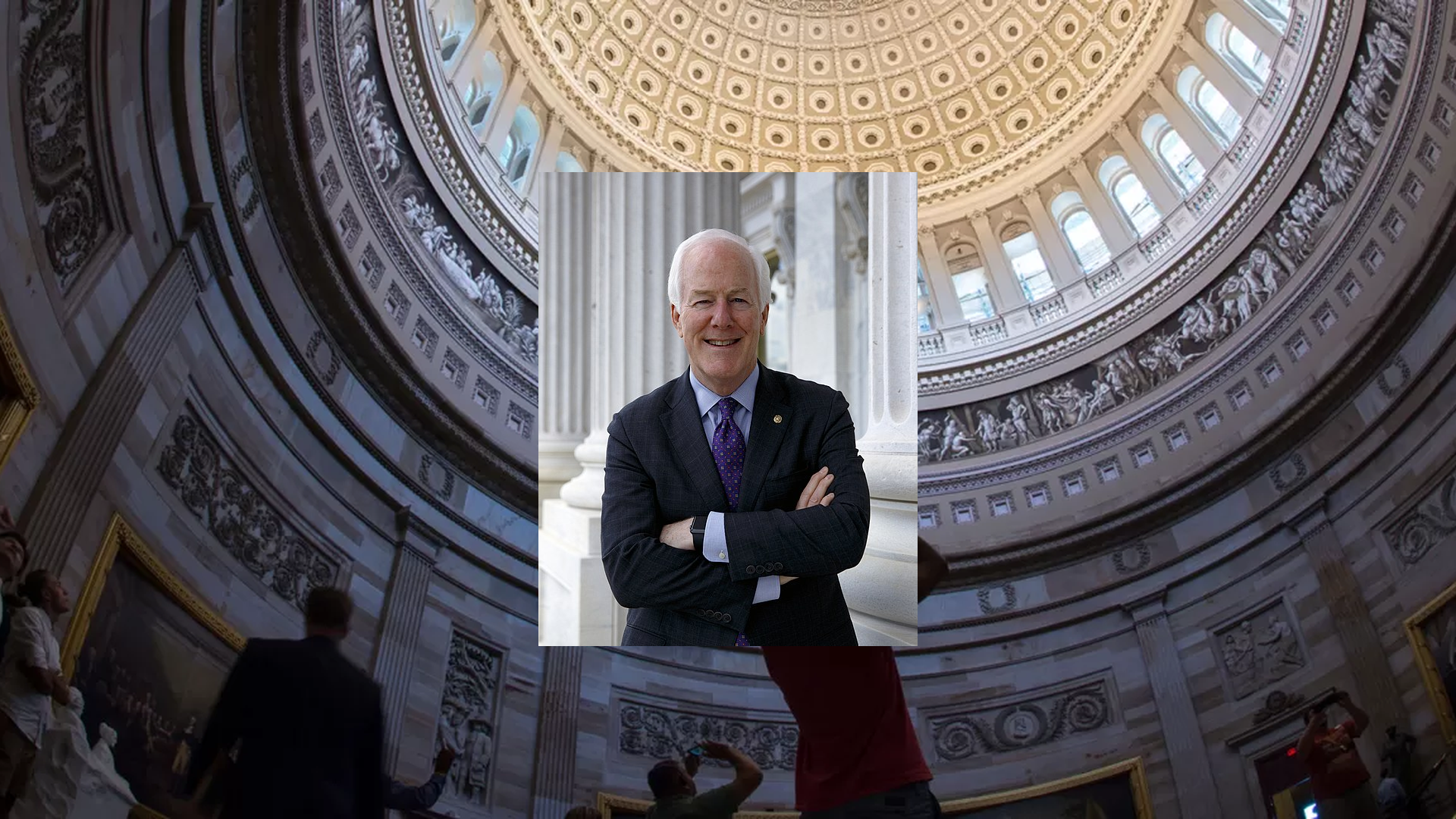Quiver News
The latest insights and financial news from Quiver Quantitative
Speaker Johnson and Senator Thune address consequences of the Democrat-led government shutdown at Capitol press conference.
Quiver AI Summary
Speaker of the House Mike Johnson and Senate Majority Leader John Thune held a press conference at the U.S. Capitol to address the implications of what they termed a "reckless Democrat-led government shutdown." Johnson stated that the closure affects numerous federal workers and essential services, claiming it was avoidable if Democrats had cooperated.
Johnson criticized the Democrats for prioritizing certain benefits over keeping government operations running, asserting that their refusal to pass a proposed bipartisan continuing resolution, which had garnered Democratic support in the past, led to the shutdown. He urged Democrats to reconsider their stance and pass the resolution to prevent further disruption.
Disclaimer: This is an AI-generated summary of a press release. The model used to summarize this release may make mistakes. See the full release here.
Mike Johnson Bill Proposals
Here are some bills which have recently been proposed by Mike Johnson:
- H.R.5488: Protecting Our Courts from Foreign Manipulation Act of 2023
- H.R.4872: Securing Our Borders and Wilderness Act
- H.R.4491: Solving an Overlooked Loophole in Votes for Executives (SOLVE) Act
- H.R.1580: CEASE Overdose Act of 2023
- H.R.1183: Asylum Reform and Border Protection Act of 2023
- H.R.792: Child Interstate Abortion Notification Act
You can track bills proposed by Mike Johnson on Quiver Quantitative's politician page for Johnson.
Senator Rick Scott criticizes Democrats for the government shutdown, advocating for accountability with his No Budget, No Pay Act.
Quiver AI Summary
Senator Rick Scott criticized Democrats during a recent appearance on Fox News for the government shutdown, attributing it to their "liberal trillion dollar wish-list." He emphasized the need for accountability in Congress, proposing the "No Budget, No Pay Act," which would prevent lawmakers from receiving pay if they fail to pass a budget.
Scott also discussed his collaboration with Senator Johnson on the "Eliminate Shutdowns Act," aiming to prevent future shutdowns. He has been advocating for the budget accountability measure since 2019 as part of his broader plan to reform Washington.
Disclaimer: This is an AI-generated summary of a press release. The model used to summarize this release may make mistakes. See the full release here.
Rick Scott Net Worth
Quiver Quantitative estimates that Rick Scott is worth $503.9M, as of October 1st, 2025. This is the 3rd highest net worth in Congress, per our live estimates.
Scott has approximately $51.9M invested in publicly traded assets which Quiver is able to track live.
You can track Rick Scott's net worth on Quiver Quantitative's politician page for Scott.
Rick Scott Bill Proposals
Here are some bills which have recently been proposed by Rick Scott:
- S.2936: A bill to designate Antifa as a domestic terrorist organization, to counter domestic terrorism and organized political violence, and for other purposes.
- S.2935: A bill to prohibit State and local law enforcement officers from arresting foreign nationals within the United States solely on the basis of an indictment, warrant, or request issued by the International Criminal Court, and for other purposes.
- S.2908: A bill to ensure equal treatment for religious organizations in the Federal provision of social services programs, grantmaking, and contracting, and for other purposes.
- S.2843: A bill to require congressional approval for all capital expenditures requested by the Federal Reserve, and for other purposes.
- S.2744: Federal Disaster Tax Relief Act of 2025
- S.2670: STOP Scammers Act
You can track bills proposed by Rick Scott on Quiver Quantitative's politician page for Scott.
Rick Scott Fundraising
Rick Scott recently disclosed $242.1K of fundraising in a Q2 FEC disclosure filed on July 15th, 2025. This was the 356th most from all Q2 reports we have seen this year. 37.2% came from individual donors.
Scott disclosed $343.5K of spending. This was the 134th most from all Q2 reports we have seen from politicians so far this year.
Scott disclosed $732.9K of cash on hand at the end of the filing period. This was the 368th most from all Q2 reports we have seen this year.
You can see the disclosure here, or track Rick Scott's fundraising on Quiver Quantitative.
Senator Katie Britt discusses government shutdown consequences and criticizes Democrats on Fox News with Sean Hannity.
Quiver AI Summary
U.S. Senator Katie Britt (R-Ala.) appeared on Fox News' show "Hannity," discussing the potential impacts of a government shutdown, which she attributes to Democratic leaders. Britt criticized Democrats for allegedly prioritizing their far-left agenda over the needs of the American public, stating, "Look, there’s no doubt why [Democrats] have a 54% disapproval rating..."
She emphasized the urgency for government continuity, asserting that Democrats risk holding essential services "hostage." Britt expressed confidence that they would ultimately cooperate for the American people, adding, "Elections have consequences," in reference to the current political climate.
To view the full interview, a link is provided for viewers interested in hearing Britt’s complete remarks.
Disclaimer: This is an AI-generated summary of a press release. The model used to summarize this release may make mistakes. See the full release here.
Katie Boyd Britt Net Worth
Quiver Quantitative estimates that Katie Boyd Britt is worth $6.7M, as of October 1st, 2025. This is the 141st highest net worth in Congress, per our live estimates.
Britt has approximately $3.7M invested in publicly traded assets which Quiver is able to track live.
You can track Katie Boyd Britt's net worth on Quiver Quantitative's politician page for Britt.
Katie Boyd Britt Bill Proposals
Here are some bills which have recently been proposed by Katie Boyd Britt:
- S.2924: A bill to require the Securities and Exchange Commission to carry out a study and rulemaking on the definition of the term "small entity" under the securities laws for purposes of chapter 6 of title 5, United States Code, and for other purposes.
- S.2636: A bill to prohibit individuals who are not citizens of the United States from voting in elections in the District of Columbia and to repeal the Local Resident Voting Rights Amendment Act of 2022.
- S.2544: GUARD Act
- S.2352: PROTECTED Act
- S.1885: Stop the Scroll Act
- S.1750: Poarch Band of Creek Indians Parity Act
You can track bills proposed by Katie Boyd Britt on Quiver Quantitative's politician page for Britt.
Katie Boyd Britt Fundraising
Katie Boyd Britt recently disclosed $779.5K of fundraising in a Q2 FEC disclosure filed on July 12th, 2025. This was the 69th most from all Q2 reports we have seen this year. 79.2% came from individual donors.
Britt disclosed $207.4K of spending. This was the 254th most from all Q2 reports we have seen from politicians so far this year.
Britt disclosed $5.1M of cash on hand at the end of the filing period. This was the 46th most from all Q2 reports we have seen this year.
You can see the disclosure here, or track Katie Boyd Britt's fundraising on Quiver Quantitative.
Congresswoman Maxine Dexter criticizes Trump, attributing the government shutdown to Republican mismanagement and advocating for responsible governance.
Quiver AI Summary
Congresswoman Maxine Dexter (OR-03) issued a statement regarding the first government shutdown in seven years, which she attributes to failures by President Trump and congressional Republicans to govern effectively. She remarked that instead of improving life for Americans, they have focused on helping billionaires and undermining vital services.
Dexter criticized Trump's actions, stating, "he is choosing authoritarianism over governance" by sending troops into Portland instead of collaborating with Congress to reopen the government. She pledged to fight for a government funding bill that safeguards healthcare and limits Trump's powers.
During the shutdown, Dexter's office will remain operational, and she encourages constituents in need of assistance to reach out. For additional information, she has prepared a guide addressing common questions related to government shutdowns.
Disclaimer: This is an AI-generated summary of a press release. The model used to summarize this release may make mistakes. See the full release here.
Maxine Dexter Net Worth
Quiver Quantitative estimates that Maxine Dexter is worth $5.2M, as of October 1st, 2025. This is the 167th highest net worth in Congress, per our live estimates.
Dexter has approximately $0 invested in publicly traded assets which Quiver is able to track live.
You can track Maxine Dexter's net worth on Quiver Quantitative's politician page for Dexter.
Maxine Dexter Bill Proposals
Here are some bills which have recently been proposed by Maxine Dexter:
- H.R.4976: Shielding Students from Wildfire Smoke Act
- H.R.4844: Farmworker Smoke and Excessive Heat Protection Act of 2025
- H.R.4493: Climate Health Emergency Act of 2025
- H.R.4446: FAST VETS Act
- H.R.3869: Every Veteran Housed Act
- H.R.994: Stop Musk Act
You can track bills proposed by Maxine Dexter on Quiver Quantitative's politician page for Dexter.
Maxine Dexter Fundraising
Maxine Dexter recently disclosed $166.4K of fundraising in a Q2 FEC disclosure filed on July 15th, 2025. This was the 497th most from all Q2 reports we have seen this year. 64.5% came from individual donors.
Dexter disclosed $140.8K of spending. This was the 398th most from all Q2 reports we have seen from politicians so far this year.
Dexter disclosed $189.4K of cash on hand at the end of the filing period. This was the 672nd most from all Q2 reports we have seen this year.
You can see the disclosure here, or track Maxine Dexter's fundraising on Quiver Quantitative.
Congresswoman Claudia Tenney criticizes Senate Democrats for blocking a funding resolution, leading to a government shutdown.
Quiver AI Summary
Congresswoman Claudia Tenney (NY-24) addressed the recent government shutdown following Senate Democrats' rejection of a clean Continuing Resolution (CR) intended to extend government funding. She criticized the Democrats for prioritizing what she termed "political theater" over the needs of citizens, claiming their actions jeopardize paychecks for essential workers.
In her statement, Tenney asserted that by voting against the CR, Democrats abandoned service members and federal law enforcement, demanding instead a $1.5 trillion partisan spending agenda. She emphasized the Republicans' commitment to responsible governance and challenged Democrats to explain their decision-making during the shutdown.
Tenney concluded her remarks by reaffirming the Republican commitment to keep government services funded and protect taxpayer interests, urging Democrats to reconsider their approach.
Disclaimer: This is an AI-generated summary of a press release. The model used to summarize this release may make mistakes. See the full release here.
Claudia Tenney Net Worth
Quiver Quantitative estimates that Claudia Tenney is worth $1.3M, as of October 1st, 2025. This is the 296th highest net worth in Congress, per our live estimates.
Tenney has approximately $51.8K invested in publicly traded assets which Quiver is able to track live.
You can track Claudia Tenney's net worth on Quiver Quantitative's politician page for Tenney.
Claudia Tenney Bill Proposals
Here are some bills which have recently been proposed by Claudia Tenney:
- H.R.5495: To require the denial of admission to the United States for individuals subject to sanctions pursuant to Executive Order 13876, and for other purposes.
- H.R.5413: To deny pretrial release for certain individuals, and for other purposes.
- H.R.4943: Safeguarding Trust in Our Politics Act
- H.R.4823: Promoting Free and Fair Elections Act of 2025
- H.R.4822: FORKS Made in America Permanency Act of 2025
- H.R.4741: Constitutional Citizenship Clarification Act of 2025
You can track bills proposed by Claudia Tenney on Quiver Quantitative's politician page for Tenney.
Claudia Tenney Fundraising
Claudia Tenney recently disclosed $431.1K of fundraising in a Q2 FEC disclosure filed on July 15th, 2025. This was the 192nd most from all Q2 reports we have seen this year. 60.3% came from individual donors.
Tenney disclosed $312.4K of spending. This was the 155th most from all Q2 reports we have seen from politicians so far this year.
Tenney disclosed $916.7K of cash on hand at the end of the filing period. This was the 320th most from all Q2 reports we have seen this year.
You can see the disclosure here, or track Claudia Tenney's fundraising on Quiver Quantitative.
Pressley rallies against government shutdown, urging Republicans to protect healthcare and support impacted families.
Quiver AI Summary
In a rally held hours before a potential government shutdown, Congresswoman Ayanna Pressley demanded that Republicans protect healthcare and avoid layoffs. She stated, "I’m not going quietly into the night while Republicans make our families poor, sicker, hunger and more vulnerable," highlighting fears of increased health insurance costs and loss of coverage for thousands in her district.
Pressley warned that if the Affordable Care Act tax credits expire, 29,000 individuals in Massachusetts could face higher health care costs, and over 35,000 could lose their coverage due to anticipated Republican cuts. The rally was co-sponsored by several advocacy organizations, signaling widespread concern about the impact of the upcoming shutdown.
Throughout her address, Pressley emphasized solidarity and empathy, framing the potential shutdown as a "Republican-manufactured crisis" detrimental to families and the economy. She urged Republicans to collaborate with Democrats on a budget that protects healthcare and keeps the government operational.
Disclaimer: This is an AI-generated summary of a press release. The model used to summarize this release may make mistakes. See the full release here.
Ayanna Pressley Net Worth
Quiver Quantitative estimates that Ayanna Pressley is worth $5.2M, as of October 1st, 2025. This is the 166th highest net worth in Congress, per our live estimates.
Pressley has approximately $0 invested in publicly traded assets which Quiver is able to track live.
You can track Ayanna Pressley's net worth on Quiver Quantitative's politician page for Pressley.
Ayanna Pressley Bill Proposals
Here are some bills which have recently been proposed by Ayanna Pressley:
- H.R.5657: To provide back pay to Federal contractors, and for other purposes.
- H.R.4719: Freedom to Move Act
- H.R.4611: EACH Act of 2025
- H.R.4524: Equity in Government Act
- H.R.4111: MASS Act
- H.R.3603: Andrew Kearse Accountability for Denial of Medical Care Act of 2025
You can track bills proposed by Ayanna Pressley on Quiver Quantitative's politician page for Pressley.
Ayanna Pressley Fundraising
Ayanna Pressley recently disclosed $106.3K of fundraising in a Q2 FEC disclosure filed on July 15th, 2025. This was the 602nd most from all Q2 reports we have seen this year. 92.0% came from individual donors.
Pressley disclosed $163.2K of spending. This was the 339th most from all Q2 reports we have seen from politicians so far this year.
Pressley disclosed $125.1K of cash on hand at the end of the filing period. This was the 749th most from all Q2 reports we have seen this year.
You can see the disclosure here, or track Ayanna Pressley's fundraising on Quiver Quantitative.
Senator Jon Husted comments on the government shutdown, urging Congress to reopen it promptly for Ohioans.
Quiver AI Summary
On October 1, 2025, U.S. Senator Jon Husted (R-Ohio) addressed the recent government shutdown, stating, "Ohioans get up and go to work every day, and they get the job done. Congress should do the same." He emphasized the urgency for Congress to cooperate in reopening the government and criticized the Democratic rejection of a proposal for continued funding.
Husted outlined the implications of the shutdown for government services and employees, including military personnel facing pay disruptions. He urged Democrats to join Republicans in a bipartisan effort to resolve the funding deadlock, reiterating, "It’s past time for the Democrats to join us and do what’s right."
Disclaimer: This is an AI-generated summary of a press release. The model used to summarize this release may make mistakes. See the full release here.
Jon Husted Bill Proposals
Here are some bills which have recently been proposed by Jon Husted:
- S.2874: A bill to provide for the reliquidation of certain entries of golf cart tires.
- S.2802: Student Debt Alternative and CTE Awareness Act
- S.2790: Resilient Tire Supply and Jobs Act
- S.2740: RAISE Act of 2025
- S.2714: CHAT Act
- S.2707: FEED Act of 2025
You can track bills proposed by Jon Husted on Quiver Quantitative's politician page for Husted.
Jon Husted Fundraising
Jon Husted recently disclosed $959.8K of fundraising in a Q2 FEC disclosure filed on July 14th, 2025. This was the 43rd most from all Q2 reports we have seen this year. 64.7% came from individual donors.
Husted disclosed $302.4K of spending. This was the 160th most from all Q2 reports we have seen from politicians so far this year.
Husted disclosed $2.7M of cash on hand at the end of the filing period. This was the 108th most from all Q2 reports we have seen this year.
You can see the disclosure here, or track Jon Husted's fundraising on Quiver Quantitative.
On October 1, 2025, the federal government shut down after Republicans blocked healthcare funding, impacting millions of Americans.
Quiver AI Summary
On October 1, 2025, the federal government experienced a shutdown after Republicans blocked a resolution aimed at extending the Affordable Care Act’s Premium Tax Credit. This decision could lead to significant increases in health insurance premiums for millions of Americans, potentially costing families thousands each month.
Congressman Marc Veasey characterized the shutdown as a "Republican-created crisis" that prioritizes tax benefits for the wealthy over the welfare of American families. He called for Republican leaders, who control the House, Senate, and White House, to take action to prevent further strain on constituents' healthcare costs.
Disclaimer: This is an AI-generated summary of a press release. The model used to summarize this release may make mistakes. See the full release here.
Marc A. Veasey Net Worth
Quiver Quantitative estimates that Marc A. Veasey is worth $163.2K, as of October 1st, 2025. This is the 454th highest net worth in Congress, per our live estimates.
Veasey has approximately $8.2K invested in publicly traded assets which Quiver is able to track live.
You can track Marc A. Veasey's net worth on Quiver Quantitative's politician page for Veasey.
Marc A. Veasey Bill Proposals
Here are some bills which have recently been proposed by Marc A. Veasey:
- H.R.4749: Texas Flood Emergency Supplemental Appropriations Act of 2025
- H.R.4621: 320th Barrage Balloon Battalion Gold Medal Act
- H.R.4358: Anti-Rigging Act of 2025
- H.R.2919: PARADE Act
- H.R.2803: Protecting Election Administration from Interference Act of 2025
- H.R.2527: Early Detection of Vision Impairments for Children Act of 2025
You can track bills proposed by Marc A. Veasey on Quiver Quantitative's politician page for Veasey.
Marc A. Veasey Fundraising
Marc A. Veasey recently disclosed $214.6K of fundraising in a Q2 FEC disclosure filed on July 15th, 2025. This was the 401st most from all Q2 reports we have seen this year. 20.8% came from individual donors.
Veasey disclosed $257.6K of spending. This was the 197th most from all Q2 reports we have seen from politicians so far this year.
Veasey disclosed $843.6K of cash on hand at the end of the filing period. This was the 339th most from all Q2 reports we have seen this year.
You can see the disclosure here, or track Marc A. Veasey's fundraising on Quiver Quantitative.
Rep. Angie Craig criticizes President Trump and Republicans for government shutdown due to failed funding negotiations.
Quiver AI Summary
U.S. Representative Angie Craig issued a statement regarding President Trump and Congressional Republicans' inability to fund the government, resulting in the first federal shutdown in nearly seven years. She criticized Republican leadership for failing to negotiate a funding agreement, suggesting it reflects unfulfilled promises to reduce costs and improve healthcare access.
Craig emphasized, "When they are ready to put their money where their mouth is, I’ll be here ready to pass a funding bill that serves every day Minnesotans." She also expressed her intent to hold Trump accountable during the shutdown and ensure taxpayer dollars are not wasted on representatives who do not fulfill their duties.
Disclaimer: This is an AI-generated summary of a press release. The model used to summarize this release may make mistakes. See the full release here.
Angie Craig Bill Proposals
Here are some bills which have recently been proposed by Angie Craig:
- H.R.5173: No Social Media at School Act
- H.R.4588: Supporting Apprenticeship Colleges Act of 2025
- H.R.3955: RAPID Reserve Act
- H.R.3755: Safe Stay Act
- H.R.3275: Small Business Tax Relief Act
- H.R.2909: You Earned It, You Keep It Act
You can track bills proposed by Angie Craig on Quiver Quantitative's politician page for Craig.
Angie Craig Fundraising
Angie Craig recently disclosed $170.0K of fundraising in a Q2 FEC disclosure filed on July 15th, 2025. This was the 494th most from all Q2 reports we have seen this year. 59.7% came from individual donors.
Craig disclosed $1.2M of spending. This was the 23rd most from all Q2 reports we have seen from politicians so far this year.
Craig disclosed $26.0K of cash on hand at the end of the filing period. This was the 972nd most from all Q2 reports we have seen this year.
You can see the disclosure here, or track Angie Craig's fundraising on Quiver Quantitative.
Representative Mark Harris and 10 House Republicans introduce crime-focused legislation for Democrat-run cities following a local murder.
Quiver AI Summary
Representative Mark Harris (NC-08) has introduced legislation aimed at addressing crime in cities governed by Democrats, leading a coalition of 10 House Republicans. According to Harris, "America is facing a crime epidemic," pointing to the recent murder of Iryna Zarutska as a motivation behind the proposed measures.
The legislation includes the "No Funding for Lawless Jurisdictions Act," which seeks to halt federal funding for cities that defund police or implement cashless bail for violent offenders. Another component, the "Cashless Bail Reporting Act," aims to increase transparency regarding local bail policies.
Co-sponsors of the legislation include several Republican representatives from various states. Harris emphasized that cities failing to prioritize public safety should not expect federal financial support, stating, "I'm fighting to ensure that federal taxpayers are not forced to bankroll dangerous, pro-crime policies."
Disclaimer: This is an AI-generated summary of a press release. The model used to summarize this release may make mistakes. See the full release here.
Mark Harris Net Worth
Quiver Quantitative estimates that Mark Harris is worth $1.8M, as of October 1st, 2025. This is the 265th highest net worth in Congress, per our live estimates.
Harris has approximately $373.5K invested in publicly traded assets which Quiver is able to track live.
You can track Mark Harris's net worth on Quiver Quantitative's politician page for Harris.
Mark Harris Bill Proposals
Here are some bills which have recently been proposed by Mark Harris:
- H.R.5625: To direct the Attorney General to make publicly available a list of each State and unit of local government that permits cashless bail, and for other purposes.
- H.R.5624: To amend the Omnibus Crime Control and Safe Streets Act of 1968 with respect to eligibility for certain crime control grants.
- H.R.4499: To make technical amendments to update statutory references to provisions reclassified to title 34, United States Code, and to correct related technical errors.
- H.R.4450: National Education Association Charter Repeal Act
- H.R.2501: Free Speech Fairness Act
- H.R.1312: No Asylum for Criminals Act of 2025
You can track bills proposed by Mark Harris on Quiver Quantitative's politician page for Harris.
Mark Harris Fundraising
Mark Harris recently disclosed $97.3K of fundraising in a Q2 FEC disclosure filed on July 14th, 2025. This was the 618th most from all Q2 reports we have seen this year. 66.9% came from individual donors.
Harris disclosed $59.3K of spending. This was the 652nd most from all Q2 reports we have seen from politicians so far this year.
Harris disclosed $198.7K of cash on hand at the end of the filing period. This was the 660th most from all Q2 reports we have seen this year.
You can see the disclosure here, or track Mark Harris's fundraising on Quiver Quantitative.
Senator Jerry Moran addressed the Senate after a failed vote to pass a continuing resolution, risking a government shutdown.
Quiver AI Summary
U.S. Senator Jerry Moran addressed the Senate after a failure to pass a continuing resolution aimed at funding the government until November 21, which ended in a 55-45 vote, falling short of the necessary 60 votes. Moran highlighted that while most appropriations bills have been approved, the Senate's inability to pass the resolution leads to uncertainty and dysfunction.
Moran emphasized that local governments regularly pass and adhere to budgets, arguing that the Senate should fulfill its responsibility to appropriate funds without introducing unrelated issues. He asserted that a government shutdown exacerbates existing problems and called for cooperation to ensure continued government functionality.
Despite the setback, the Senate Committee on Appropriations has successfully passed 11 of the annual 12 appropriations bills, marking progress in the legislative process compared to previous years.
Disclaimer: This is an AI-generated summary of a press release. The model used to summarize this release may make mistakes. See the full release here.
Jerry Moran Net Worth
Quiver Quantitative estimates that Jerry Moran is worth $3.0M, as of October 1st, 2025. This is the 222nd highest net worth in Congress, per our live estimates.
Moran has approximately $1.2M invested in publicly traded assets which Quiver is able to track live.
You can track Jerry Moran's net worth on Quiver Quantitative's politician page for Moran.
Jerry Moran Bill Proposals
Here are some bills which have recently been proposed by Jerry Moran:
- S.2957: A bill to increase the apportionment of formula grants for small transit intensive cities.
- S.2909: A bill to require the Secretary of Transportation to revise certain regulations with respect to farm-related service industry restricted commercial driver's licenses, and for other purposes.
- S.2906: A bill to amend the Investment Company Act of 1940 to address entities that are not considered to be investment companies for the purposes of that Act, and for other purposes.
- S.2853: A bill to amend title 38, United States Code, to extend certain authorities and requirements relating to health care and benefits furnished by the Department of Veterans Affairs, and for other purposes.
- S.2423: Streamlining Rural Housing Act of 2025
- S.2393: Fiscal Year 2025 Veterans Affairs Major Medical Facility Authorization Act
You can track bills proposed by Jerry Moran on Quiver Quantitative's politician page for Moran.
Jerry Moran Fundraising
Jerry Moran recently disclosed $86.3K of fundraising in a Q2 FEC disclosure filed on July 14th, 2025. This was the 641st most from all Q2 reports we have seen this year. 17.2% came from individual donors.
Moran disclosed $59.2K of spending. This was the 657th most from all Q2 reports we have seen from politicians so far this year.
Moran disclosed $5.0M of cash on hand at the end of the filing period. This was the 49th most from all Q2 reports we have seen this year.
You can see the disclosure here, or track Jerry Moran's fundraising on Quiver Quantitative.
Congresswoman April McClain Delaney criticizes the government shutdown and its effects on federal workers and services.
Quiver AI Summary
Congresswoman April McClain Delaney issued a statement following the recent government shutdown, which occurred at midnight. She noted that "thousands of federal employees are now being sent home or forced to work without pay," and expressed concern over closures of national parks and potential impacts on food security and Social Security services.
Delaney emphasized the need for bipartisan dialogue, stating, "This shutdown is anything but good governance," and criticized the legislature for failing to compromise. She called for a united effort to better serve the American people during this challenging time.
McClain Delaney reaffirmed her commitment to finding common-sense solutions and expressed appreciation for federal workers, stating, "They strive to make America stronger, safer, and more resilient." She urged constituents to reach out for assistance, highlighting the importance of community and collaboration in overcoming the shutdown crisis.
Disclaimer: This is an AI-generated summary of a press release. The model used to summarize this release may make mistakes. See the full release here.
April McClain Delaney Net Worth
Quiver Quantitative estimates that April McClain Delaney is worth $152.7M, as of October 1st, 2025. This is the 12th highest net worth in Congress, per our live estimates.
McClain Delaney has approximately $2.9M invested in publicly traded assets which Quiver is able to track live.
You can track April McClain Delaney's net worth on Quiver Quantitative's politician page for McClain Delaney.
April McClain Delaney Bill Proposals
Here are some bills which have recently been proposed by April McClain Delaney:
- H.R.5326: FLAME Act
- H.R.5150: Protecting Agricultural Borrower Information Act
- H.R.4702: National Fire Academy Reporting Act
- H.R.3296: MIL FMLA Act
- H.R.3159: Improving SCRA Benefit Utilization Act
- H.R.2947: Deafblind DATA Act
You can track bills proposed by April McClain Delaney on Quiver Quantitative's politician page for McClain Delaney.
April McClain Delaney Fundraising
April McClain Delaney recently disclosed $120.9K of fundraising in a Q2 FEC disclosure filed on July 15th, 2025. This was the 581st most from all Q2 reports we have seen this year. 59.4% came from individual donors.
McClain Delaney disclosed $184.4K of spending. This was the 292nd most from all Q2 reports we have seen from politicians so far this year.
McClain Delaney disclosed $323.3K of cash on hand at the end of the filing period. This was the 566th most from all Q2 reports we have seen this year.
You can see the disclosure here, or track April McClain Delaney's fundraising on Quiver Quantitative.
Congressman Jefferson Shreve will forgo his salary during a potential government shutdown, donating it to the Johnson County Boys and Girls Club.
Quiver AI Summary
Congressman Jefferson Shreve (R-IN) announced that he will refuse his congressional salary if a government shutdown occurs. He stated that once funding legislation is enacted, he will donate the equivalent of his shutdown pay to the Johnson County Boys and Girls Club in Franklin, which serves the community by providing educational environments for youth.
In a statement, Shreve criticized Democrats for allegedly delaying a bipartisan funding bill, asserting that "Hoosiers should not have to pay the price" for political standoffs. He emphasized his commitment to holding himself accountable and supporting community initiatives.
Disclaimer: This is an AI-generated summary of a press release. The model used to summarize this release may make mistakes. See the full release here.
Jefferson Shreve Net Worth
Quiver Quantitative estimates that Jefferson Shreve is worth $600.6M, as of October 1st, 2025. This is the 2nd highest net worth in Congress, per our live estimates.
Shreve has approximately $50.5M invested in publicly traded assets which Quiver is able to track live.
You can track Jefferson Shreve's net worth on Quiver Quantitative's politician page for Shreve.
Jefferson Shreve Bill Proposals
Here are some bills which have recently been proposed by Jefferson Shreve:
- H.R.5490: To establish an interagency Task Force to dismantle and shut down transnational criminal syndicates perpetuating mass online scam operations against Americans.
- H.R.4531: BANNED in Latin America Act
- H.R.3934: Water Quality Standards Attainability Act
- H.R.3523: To require the Secretary of the Treasury to designate certain covered organizations as Foreign Financial Threat Organizations, and for other purposes.
- H.R.3426: Courthouse Affordability and Space Efficiency (CASE) Act of 2025
- H.R.1501: Protecting Domestic Mining Act of 2025
You can track bills proposed by Jefferson Shreve on Quiver Quantitative's politician page for Shreve.
Jefferson Shreve Fundraising
Jefferson Shreve recently disclosed $60.5K of fundraising in a Q2 FEC disclosure filed on July 15th, 2025. This was the 696th most from all Q2 reports we have seen this year. 39.7% came from individual donors.
Shreve disclosed $73.7K of spending. This was the 590th most from all Q2 reports we have seen from politicians so far this year.
Shreve disclosed $93.2K of cash on hand at the end of the filing period. This was the 806th most from all Q2 reports we have seen this year.
You can see the disclosure here, or track Jefferson Shreve's fundraising on Quiver Quantitative.
Senator Tammy Duckworth calls for Defense Secretary Pete Hegseth's resignation over a controversial speech to military leaders.
Quiver AI Summary
U.S. Senator Tammy Duckworth has called for Defense Secretary Pete Hegseth to resign following his recent speech to military leaders, which she describes as "unprecedented, wasteful and insulting." Duckworth criticized Hegseth and President Trump's remarks, claiming they misuse taxpayer resources and undermine national security.
In her statement, she expressed concern over Hegseth's commentary on military hazing and diversity, suggesting they discredit the service of various groups. Duckworth concluded that "none of the ideas presented...make our military stronger or our nation safer."
Disclaimer: This is an AI-generated summary of a press release. The model used to summarize this release may make mistakes. See the full release here.
Tammy Duckworth Net Worth
Quiver Quantitative estimates that Tammy Duckworth is worth $1.3M, as of October 1st, 2025. This is the 297th highest net worth in Congress, per our live estimates.
Duckworth has approximately $806.7K invested in publicly traded assets which Quiver is able to track live.
You can track Tammy Duckworth's net worth on Quiver Quantitative's politician page for Duckworth.
Tammy Duckworth Bill Proposals
Here are some bills which have recently been proposed by Tammy Duckworth:
- S.2943: A bill to amend chapter 17 of title 38, United States Code, to direct the Secretary of Veterans Affairs to allow a veteran to receive a full-year supply of contraceptive pills, transdermal patches, vaginal rings, and other contraceptive products, and for other purposes.
- S.2863: A bill to amend the Omnibus Crime Control and Safe Streets Act of 1968 with respect to eligibility under the Edward Byrne Memorial Justice Assistance Grant Program, and for other purposes.
- S.2862: A bill to amend the Child Care Access Means Parents In School Program under the Higher Education Act of 1965.
- S.2738: ESP, Paraprofessional, and Education Support Staff Family Leave Act
- S.2377: EACH Act of 2025
- S.2239: Improving Access to Prenatal Care for Military Families Act
You can track bills proposed by Tammy Duckworth on Quiver Quantitative's politician page for Duckworth.
Tammy Duckworth Fundraising
Tammy Duckworth recently disclosed $961.0K of fundraising in a Q2 FEC disclosure filed on July 15th, 2025. This was the 42nd most from all Q2 reports we have seen this year. 98.2% came from individual donors.
Duckworth disclosed $711.5K of spending. This was the 52nd most from all Q2 reports we have seen from politicians so far this year.
Duckworth disclosed $3.4M of cash on hand at the end of the filing period. This was the 78th most from all Q2 reports we have seen this year.
You can see the disclosure here, or track Tammy Duckworth's fundraising on Quiver Quantitative.
Congresswoman Luz Rivas criticizes Republicans for causing a government shutdown and jeopardizing healthcare for millions.
Quiver AI Summary
Congresswoman Luz Rivas (CA-29) criticized Republicans for their decision not to return to Washington to prevent a government shutdown, stating, “Republicans own this shutdown and the pain and hardship it will cause for millions of Americans.” She expressed concern over healthcare costs and the impact on working families.
Rivas announced that her offices in Washington and Arleta would remain open during the shutdown, asserting her commitment to protect the healthcare of nearly 60,000 constituents in her district and oppose what she described as a "billionaire-first agenda."
In her statement, Rivas emphasized that the lack of action from Republican leaders has resulted in a healthcare crisis, which she believes is detrimental to American families.
Disclaimer: This is an AI-generated summary of a press release. The model used to summarize this release may make mistakes. See the full release here.
Luz Rivas Net Worth
Quiver Quantitative estimates that Luz Rivas is worth $3.1M, as of October 1st, 2025. This is the 218th highest net worth in Congress, per our live estimates.
Rivas has approximately $0 invested in publicly traded assets which Quiver is able to track live.
You can track Luz Rivas's net worth on Quiver Quantitative's politician page for Rivas.
Luz Rivas Bill Proposals
Here are some bills which have recently been proposed by Luz Rivas:
- H.R.5157: Streamlining American Manufacturing Strategy Act
- H.R.5073: INFORM Act of 2025
- H.R.4048: STEM Pathways for the Future Act
You can track bills proposed by Luz Rivas on Quiver Quantitative's politician page for Rivas.
Luz Rivas Fundraising
Luz Rivas recently disclosed $149.3K of fundraising in a Q2 FEC disclosure filed on July 15th, 2025. This was the 534th most from all Q2 reports we have seen this year. 50.4% came from individual donors.
Rivas disclosed $68.8K of spending. This was the 617th most from all Q2 reports we have seen from politicians so far this year.
Rivas disclosed $277.8K of cash on hand at the end of the filing period. This was the 589th most from all Q2 reports we have seen this year.
You can see the disclosure here, or track Luz Rivas's fundraising on Quiver Quantitative.
Congressman Gabe Evans requests his pay be withheld amid impending government shutdown, urging Senate support for House funding.
Quiver AI Summary
In response to an imminent government shutdown, Congressman Gabe Evans (CO-08) has requested that his pay be withheld until funding is fully restored. He stated, “If Senate Democrats force our troops to work without pay, Congress should be held to the same standard.”
Evans urged the Senate to pass the House's continuing resolution, highlighting the consequences a shutdown could have on Colorado families, including delays in pay for servicemembers and essential services.
In his letter to House officials, he expressed solidarity with federal employees affected by this potential shutdown, emphasizing the need for timely government funding to avoid severe disruptions.
Disclaimer: This is an AI-generated summary of a press release. The model used to summarize this release may make mistakes. See the full release here.
Gabe Evans Net Worth
Quiver Quantitative estimates that Gabe Evans is worth $439.5K, as of October 1st, 2025. This is the 405th highest net worth in Congress, per our live estimates.
Evans has approximately $0 invested in publicly traded assets which Quiver is able to track live.
You can track Gabe Evans's net worth on Quiver Quantitative's politician page for Evans.
Gabe Evans Bill Proposals
Here are some bills which have recently been proposed by Gabe Evans:
- H.R.5573: To amend the Omnibus Crime Control and Safe Streets Act of 1968 to authorize grant programs to combat fentanyl poisonings.
- H.R.3628: State Planning for Reliability and Affordability Act
- H.R.3337: To designate the facility of the United States Postal Service located at 3344 11th Avenue in Evans, Colorado, as the "Deputy Samuel Kent Brownlee Post Office".
- H.R.3143: State Planning for Reliability and Affordability Act
- H.R.2116: Law Enforcement Support and Counter Transnational Repression Act
- H.R.1682: BELO’S Act
You can track bills proposed by Gabe Evans on Quiver Quantitative's politician page for Evans.
Gabe Evans Fundraising
Gabe Evans recently disclosed $464.6K of fundraising in a Q2 FEC disclosure filed on July 15th, 2025. This was the 176th most from all Q2 reports we have seen this year. 52.6% came from individual donors.
Evans disclosed $106.3K of spending. This was the 485th most from all Q2 reports we have seen from politicians so far this year.
Evans disclosed $1.5M of cash on hand at the end of the filing period. This was the 202nd most from all Q2 reports we have seen this year.
You can see the disclosure here, or track Gabe Evans's fundraising on Quiver Quantitative.
Congresswoman Simon criticizes Republicans for government shutdown, urging bipartisan cooperation to protect health care and federal services.
Quiver AI Summary
Congresswoman Lateefah Simon (D-CA-12) expressed concern following the federal government shutdown resulting from Congressional Republicans' refusal to support a bipartisan spending bill intended to extend Affordable Care Act tax credits. She stated, "Republicans control all three branches... yet for months, they have ignored... the need to work with their Democratic colleagues."
In her statement, Simon accused the Republican party of prioritizing chaos over stability, asserting that the government shutdown reflects their governing philosophy. She argued that Democrats are committed to fighting for affordable health care and timely payment for government employees, stating, “This avoidable disaster is solely theirs to own.”
Disclaimer: This is an AI-generated summary of a press release. The model used to summarize this release may make mistakes. See the full release here.
Lateefah Simon Net Worth
Quiver Quantitative estimates that Lateefah Simon is worth $229.1K, as of October 1st, 2025. This is the 440th highest net worth in Congress, per our live estimates.
Simon has approximately $54.1K invested in publicly traded assets which Quiver is able to track live.
You can track Lateefah Simon's net worth on Quiver Quantitative's politician page for Simon.
Lateefah Simon Bill Proposals
Here are some bills which have recently been proposed by Lateefah Simon:
- H.R.5096: Disability and Age in Jury Service Nondiscrimination Act
- H.R.3736: The Small Business Representation in Contracting Rulemaking Act
You can track bills proposed by Lateefah Simon on Quiver Quantitative's politician page for Simon.
Lateefah Simon Fundraising
Lateefah Simon recently disclosed $353.0K of fundraising in a Q2 FEC disclosure filed on July 14th, 2025. This was the 242nd most from all Q2 reports we have seen this year. 88.4% came from individual donors.
Simon disclosed $172.3K of spending. This was the 316th most from all Q2 reports we have seen from politicians so far this year.
Simon disclosed $502.6K of cash on hand at the end of the filing period. This was the 461st most from all Q2 reports we have seen this year.
You can see the disclosure here, or track Lateefah Simon's fundraising on Quiver Quantitative.
Rep. Randy Feenstra cosponsored legislation to ensure payment for U.S. troops and border patrol agents during government shutdowns.
Quiver AI Summary
U.S. Rep. Randy Feenstra (R-Hull) announced his cosponsorship of two legislative measures aimed at ensuring pay continuity for U.S. troops and border patrol agents during a government shutdown. The proposed laws are the Pay Our Troops Act and the Pay Our Border Patrol and Customs Agents Act.
In a statement, Feenstra criticized Democrats for the government shutdown, citing their demands that led to the situation. He asserted, “Our troops and border patrol agents should not have to pay the price for Democrats’ partisan antics.”
Disclaimer: This is an AI-generated summary of a press release. The model used to summarize this release may make mistakes. See the full release here.
Randy Feenstra Net Worth
Quiver Quantitative estimates that Randy Feenstra is worth $89.0K, as of October 1st, 2025. This is the 467th highest net worth in Congress, per our live estimates.
Feenstra has approximately $0 invested in publicly traded assets which Quiver is able to track live.
You can track Randy Feenstra's net worth on Quiver Quantitative's politician page for Feenstra.
Randy Feenstra Bill Proposals
Here are some bills which have recently been proposed by Randy Feenstra:
- H.R.5037: Middle Mile for Rural America Act
- H.R.4793: SOS Act
- H.R.4400: Farmers First Act of 2025
- H.R.4322: Livestock Indemnity Program Improvement Act of 2025
- H.R.4032: Lowering Broadband Costs for Consumers Act of 2025
- H.R.3280: Rural Broadband Modernization Act
You can track bills proposed by Randy Feenstra on Quiver Quantitative's politician page for Feenstra.
Randy Feenstra Fundraising
Randy Feenstra recently disclosed $187.5K of fundraising in a Q2 FEC disclosure filed on July 15th, 2025. This was the 453rd most from all Q2 reports we have seen this year. 42.7% came from individual donors.
Feenstra disclosed $471.4K of spending. This was the 92nd most from all Q2 reports we have seen from politicians so far this year.
Feenstra disclosed $1.5M of cash on hand at the end of the filing period. This was the 203rd most from all Q2 reports we have seen this year.
You can see the disclosure here, or track Randy Feenstra's fundraising on Quiver Quantitative.
Steve Scalise criticizes Chuck Schumer for government shutdown and urges bipartisan cooperation to reopen it.
Quiver AI Summary
House Majority Leader Steve Scalise (R-La.) addressed concerns about a government shutdown, stating, "Today marks day one of the Schumer shutdown." He criticized Senate Majority Leader Chuck Schumer, claiming Democrats are holding the American public "hostage" over "far-left demands" related to healthcare funding for illegal immigrants.
Scalise argued that House Republicans had proposed a straightforward bill to fund the government for another two months. "We are here, ready to get the job done," he stated, urging Schumer to end what he described as a "tantrum" following the election results and collaborate for a resolution.
The remarks were characterized by Scalise as a response to what he sees as partisan tactics by Democrats. He called on Schumer to prioritize negotiations instead of continuing the shutdown, noting it is unsustainable for the American people.
Disclaimer: This is an AI-generated summary of a press release. The model used to summarize this release may make mistakes. See the full release here.
Steve Scalise Net Worth
Quiver Quantitative estimates that Steve Scalise is worth $8.0K, as of October 1st, 2025. This is the 489th highest net worth in Congress, per our live estimates.
Scalise has approximately $0 invested in publicly traded assets which Quiver is able to track live.
You can track Steve Scalise's net worth on Quiver Quantitative's politician page for Scalise.
Steve Scalise Fundraising
Steve Scalise recently disclosed $210.9K of fundraising in a Q2 FEC disclosure filed on July 15th, 2025. This was the 410th most from all Q2 reports we have seen this year. 87.7% came from individual donors.
Scalise disclosed $871.8K of spending. This was the 32nd most from all Q2 reports we have seen from politicians so far this year.
Scalise disclosed $5.8M of cash on hand at the end of the filing period. This was the 43rd most from all Q2 reports we have seen this year.
You can see the disclosure here, or track Steve Scalise's fundraising on Quiver Quantitative.
Rep. Shomari C. Figures condemns the government shutdown, attributing it to Republican leadership failures and outlining its negative impacts.
Quiver AI Summary
Representative Shomari C. Figures (AL-02) issued a statement condemning the government shutdown, attributing its cause to the Republican leadership's "failure to lead and negotiate in a bipartisan manner." He expressed concerns over its impact on healthcare, rural hospitals, and rising costs for American families.
Figures criticized a temporary solution proposed by House Republicans, stating it does not address critical needs such as ensuring funds are allocated as intended and rolling back tariffs he claims are hurting consumers. He urged Republicans to collaborate with Democrats to prioritize the needs of Alabama and the nation.
Disclaimer: This is an AI-generated summary of a press release. The model used to summarize this release may make mistakes. See the full release here.
Shomari Figures Net Worth
Quiver Quantitative estimates that Shomari Figures is worth $1.9M, as of October 1st, 2025. This is the 263rd highest net worth in Congress, per our live estimates.
Figures has approximately $0 invested in publicly traded assets which Quiver is able to track live.
You can track Shomari Figures's net worth on Quiver Quantitative's politician page for Figures.
Shomari Figures Bill Proposals
Here are some bills which have recently been proposed by Shomari Figures:
- H.R.4654: Baby Sleep Tax Relief Act
- H.R.4653: First-Time Parents Tax Credit Act
- H.R.4560: Building Resilient Infrastructure and Communities for All Act of 2025
- H.R.4401: Bridge Investment and Modernization Act of 2025
- H.R.3962: ESTUARIES Act
- H.R.3281: To prohibit the reduction, elimination, or suspension of funding for land-grant colleges and universities.
You can track bills proposed by Shomari Figures on Quiver Quantitative's politician page for Figures.
Shomari Figures Fundraising
Shomari Figures recently disclosed $133.5K of fundraising in a Q2 FEC disclosure filed on July 15th, 2025. This was the 560th most from all Q2 reports we have seen this year. 20.6% came from individual donors.
Figures disclosed $117.5K of spending. This was the 447th most from all Q2 reports we have seen from politicians so far this year.
Figures disclosed $186.1K of cash on hand at the end of the filing period. This was the 676th most from all Q2 reports we have seen this year.
You can see the disclosure here, or track Shomari Figures's fundraising on Quiver Quantitative.
Congresswoman Ashley Hinson comments on the government shutdown, announcing she will withhold her pay during this period.
Quiver AI Summary
Congresswoman Ashley Hinson has publicly expressed her stance regarding the ongoing government shutdown, which she attributes to Senate Democrats, specifically mentioning Chuck Schumer. Hinson stated, “This is the Schumer shutdown,” as she announced her decision to withhold her pay during this period.
Hinson criticized Democrats for not supporting a bipartisan government funding extension and accused them of demanding excessive spending and resources. She emphasized the importance of ensuring that servicemembers and first responders continue to receive their pay.
Several bills Hinson has supported aim to guarantee salary continuity for various law enforcement and military personnel during the shutdown. She urges her colleagues to work towards a solution rather than engage in what she describes as political posturing.
Disclaimer: This is an AI-generated summary of a press release. The model used to summarize this release may make mistakes. See the full release here.
Ashley Hinson Net Worth
Quiver Quantitative estimates that Ashley Hinson is worth $5.0M, as of October 1st, 2025. This is the 168th highest net worth in Congress, per our live estimates.
Hinson has approximately $408.0K invested in publicly traded assets which Quiver is able to track live.
You can track Ashley Hinson's net worth on Quiver Quantitative's politician page for Hinson.
Ashley Hinson Bill Proposals
Here are some bills which have recently been proposed by Ashley Hinson:
- H.R.5397: HEALING Mothers and Fathers Act
- H.R.5268: FAIR Trucking Act
- H.R.5113: PRICE Act
- H.R.4673: Save Our Bacon Act
- H.R.4134: Flood Resiliency and Land Stewardship Act
- H.R.3878: RNs for Rural Health Act of 2025
You can track bills proposed by Ashley Hinson on Quiver Quantitative's politician page for Hinson.
Ashley Hinson Fundraising
Ashley Hinson recently disclosed $745.3K of fundraising in a Q2 FEC disclosure filed on July 15th, 2025. This was the 74th most from all Q2 reports we have seen this year. 59.0% came from individual donors.
Hinson disclosed $255.7K of spending. This was the 199th most from all Q2 reports we have seen from politicians so far this year.
Hinson disclosed $2.8M of cash on hand at the end of the filing period. This was the 101st most from all Q2 reports we have seen this year.
You can see the disclosure here, or track Ashley Hinson's fundraising on Quiver Quantitative.
Rep. Val Hoyle condemns the Republican-led government shutdown, urging bipartisan efforts to protect healthcare and economic stability.
Quiver AI Summary
Congresswoman Val Hoyle (OR-04) issued a statement regarding the government shutdown initiated by Republicans, asserting that they hold responsibility due to their control over the House, Senate, and White House. She expressed concern that their agenda could lead to increased health care costs and hardships for working families, specifically in Oregon.
Hoyle emphasized that Democrats have been prepared to negotiate a bipartisan funding bill, aiming to safeguard health care and taxpayer interests. She called for Republicans to engage in discussions to end the shutdown and fulfill their responsibilities.
For additional resources on the shutdown, Rep. Hoyle's website provides information, and she supports legislative efforts to extend critical funding measures for health care and disaster aid in Oregon.
Disclaimer: This is an AI-generated summary of a press release. The model used to summarize this release may make mistakes. See the full release here.
Val T. Hoyle Net Worth
Quiver Quantitative estimates that Val T. Hoyle is worth $1.7M, as of October 1st, 2025. This is the 268th highest net worth in Congress, per our live estimates.
Hoyle has approximately $1.4M invested in publicly traded assets which Quiver is able to track live.
You can track Val T. Hoyle's net worth on Quiver Quantitative's politician page for Hoyle.
Val T. Hoyle Bill Proposals
Here are some bills which have recently been proposed by Val T. Hoyle:
- H.R.5433: POP Act
- H.R.5041: Smith River National Recreation Area Expansion Act
- H.R.4675: Columbia River Clean-Up Act
- H.R.4453: To amend title 5, United States Code, to include Parkinson's disease in the list of illnesses and diseases deemed to be proximately caused by employment in fire protection activities, and for other purposes.
- H.R.4295: Wildfire Resilient Communities Act
- H.R.4035: Wall Street Tax Act of 2025
You can track bills proposed by Val T. Hoyle on Quiver Quantitative's politician page for Hoyle.
Val T. Hoyle Fundraising
Val T. Hoyle recently disclosed $207.3K of fundraising in a Q2 FEC disclosure filed on July 15th, 2025. This was the 417th most from all Q2 reports we have seen this year. 51.6% came from individual donors.
Hoyle disclosed $172.6K of spending. This was the 315th most from all Q2 reports we have seen from politicians so far this year.
Hoyle disclosed $235.4K of cash on hand at the end of the filing period. This was the 624th most from all Q2 reports we have seen this year.
You can see the disclosure here, or track Val T. Hoyle's fundraising on Quiver Quantitative.
We have received text from H.R. 5458: Child Care Access Means Parents In Schools Reauthorization Act. This bill was received on 2025-09-18, and currently has 6 cosponsors.
Here is a short summary of the bill:
This bill, titled the **Child Care Access Means Parents In Schools Reauthorization Act**, aims to enhance support for eligible parents who are enrolled in postsecondary education by providing funds for child care services. It amends the existing Child Care Access Means Parents in School Program under the Higher Education Act of 1965 to improve accessibility and affordability of child care for student parents. Here are the major aspects of the bill:
Purpose
The main goal of this bill is to help student parents succeed in their education by ensuring they have access to quality child care services, including those available on college campuses.
Grants for Educational Institutions
- The Secretary of Education will have the authority to award grants to eligible educational institutions to assist them in providing child care services.
- Grants will range from a minimum of **$75,000** to a maximum of **$2,000,000** annually.
- Grants will be awarded for **five-year periods**, with the possibility of renewal if institutions demonstrate the need for continued support.
Eligibility for Grants
To qualify for these grants, an institution must meet certain criteria, primarily:
- Be an institution of higher education with at least **150 students** eligible for Federal Pell Grants.
- Provide child care services aimed specifically at eligible student parents, defined as those who are enrolled and responsible for caring for one or more dependent children.
Use of Funds
Grants may be used for:
- Establishing or supporting on-campus child care programs.
- Providing subsidized child care services on a sliding fee scale.
- Offering accessible before- and after-school services.
- Supporting additional services aimed at enhancing child care quality and accessibility.
Prohibitions and Guidelines
- Grant funds cannot be used for construction projects, except minor renovations required for health and safety compliance.
- Institutions cannot impose additional eligibility requirements for student parents beyond those defined in the bill.
Application Process
Eligible institutions must submit an application outlining how they plan to use the grant funds, demonstrate the need for such services, and describe the demographics of student parents. Applications must also provide a comprehensive plan for implementation and a timeline for when services will be available.
Reporting Requirements
- Institutions receiving grants are required to report annually on the number of student parents served, demographic information, child care service fees, and their effectiveness in aiding student retention and success.
- The Secretary will compile these reports into a publicly available summary to track the overall impact of the program.
Funding Authorization
The bill authorizes the appropriation of **$500 million** annually from fiscal year **2026** through **2031** to support the provisions of this act.
Nondiscrimination Clause
The bill includes provisions to ensure that no person is discriminated against based on race, color, religion, national origin, sex, or disability when participating in programs funded under this act.
Relevant Companies
None found.
Representative Katherine M. Clark Bill Proposals
Here are some bills which have recently been proposed by Representative Katherine M. Clark:
- H.R.5458: CCAMPIS Reauthorization Act
- H.R.3274: Child Care Infrastructure Act
- H.R.3273: Child Care Workforce Development Act
You can track bills proposed by Representative Katherine M. Clark on Quiver Quantitative's politician page for Clark.
Representative Katherine M. Clark Net Worth
Quiver Quantitative estimates that Representative Katherine M. Clark is worth $14.7M, as of October 1st, 2025. This is the 87th highest net worth in Congress, per our live estimates.
Clark has approximately $7.0M invested in publicly traded assets which Quiver is able to track live.
You can track Representative Katherine M. Clark's net worth on Quiver Quantitative's politician page for Clark.
Representative Katherine M. Clark Stock Trading
We have data on up to $16.8M of trades from Representative Katherine M. Clark, which we parsed from STOCK Act filings. Some of the largest trades include:
- A January 25th, 2019 sale of up to $50K of $CCT.
- A January 25th, 2019 sale of up to $50K of $KHC. The stock has fallen 44.3% since then.
- A October 9th, 2023 sale of up to $50K of $KO. The stock has risen 25.42% since then.
- A September 16th, 2021 sale of up to $50K of $FSLR. The stock has risen 113.51% since then.
- A January 25th, 2019 sale of up to $50K of $INTC. The stock has fallen 28.68% since then.
You can track Representative Katherine M. Clark's stock trading on Quiver Quantitative's politician page for Clark.
This article is not financial advice. See Quiver Quantitative's disclaimers for more information.
We have received text from H.R. 5481: Wildfire Smoke Relief Act. This bill was received on 2025-09-18, and currently has 4 cosponsors.
Here is a short summary of the bill:
This bill, titled the Wildfire Smoke Relief Act, aims to provide transitional sheltering assistance to individuals living in areas affected by unhealthy air quality due to wildfires.
Key Provisions
-
Definitions
- An "individual at risk of wildfire smoke related illness" includes low-income individuals, parents or guardians with children under 19, pregnant women, seniors aged 65 and older, and those with chronic respiratory or cardiovascular illnesses.
- A "low-income individual" is defined as someone whose taxable income does not exceed 200% of the poverty level.
- A "qualified entity" refers to state or local governments, local public health authorities, and coordinated care organizations.
-
Transitional Sheltering Assistance Program
- The program is to be implemented through the Federal Emergency Management Agency (FEMA) under existing disaster assistance legislation.
-
The President is authorized to provide assistance to qualified entities for the purchase and distribution of smoke-inhalation prevention equipment to at-risk individuals. The types of equipment include:
- Portable air filtration units
- Air filters
- Face masks/respirators like N95 and P100
- Low-cost measures to keep smoke out of homes, such as weather strips, portable air-conditioning units, ventilation equipment, and window coverings.
- If these measures do not sufficiently reduce the risk of illness, the bill allows for costs for transitional shelter assistance to be provided to individuals at risk of smoke-related health issues.
Relevant Companies
- None found
Representative Joe Neguse Bill Proposals
Here are some bills which have recently been proposed by Representative Joe Neguse:
- H.R.5652: To amend the Robert T. Stafford Disaster Relief and Emergency Assistance Act to provide flexibility with the cost share for fire management assistance, and for other purposes.
- H.R.5651: To establish a waiver program to allow for ZIP Code localization area median income calculations, and for other purposes.
- H.R.5481: Wildfire Smoke Relief Act
- H.R.5205: Aircraft Noise Reduction Act
- H.R.5002: Protect Americans from Climate Disasters Act
- H.R.4933: Research and Development Tax Credit Expansion Act of 2025
You can track bills proposed by Representative Joe Neguse on Quiver Quantitative's politician page for Neguse.
Representative Joe Neguse Net Worth
Quiver Quantitative estimates that Representative Joe Neguse is worth $825.0K, as of October 1st, 2025. This is the 348th highest net worth in Congress, per our live estimates.
Neguse has approximately $0 invested in publicly traded assets which Quiver is able to track live.
You can track Representative Joe Neguse's net worth on Quiver Quantitative's politician page for Neguse.
This article is not financial advice. See Quiver Quantitative's disclaimers for more information.
We have received text from H.R. 5646: Restoring Safeguards for Dangerous Abortion Drugs Act. This bill was received on 2025-09-30, and currently has 6 cosponsors.
Here is a short summary of the bill:
This bill, titled the
Restoring Safeguards for Dangerous Abortion Drugs Act
, is designed to establish stricter regulations regarding the abortion drug mifepristone, also known by brand names like Mifeprex and Korlym. Below are the key provisions outlined in the bill:
Definitions
The bill defines "covered medication" explicitly as mifepristone.
Risk Evaluation and Mitigation Strategy (REMS)
The Secretary of Health and Human Services (HHS) is mandated to take the following actions concerning mifepristone:
- Withdraw the current risk evaluation and mitigation strategy for mifepristone that is in effect at the time the bill is enacted.
- Approve a new risk evaluation and mitigation strategy identical to the one that was approved in June 2011.
Furthermore, the Secretary is restricted from approving any risk evaluation and mitigation strategy that differs from the 2011 version.
Liability for Harm
The bill introduces a federal liability framework for specific entities that may cause harm through the importation or transportation of mifepristone. The details include:
- A "covered entity" is defined as any telehealth provider, pharmacy, or person that knowingly imports or transports mifepristone improperly.
- These entities would be liable to individuals who suffer various forms of harm (physical, psychological, emotional, or physiological) due to their use of mifepristone.
-
Individuals who experience such harm would have the right to pursue a civil lawsuit against these entities for:
- Compensatory damages
- Punitive damages
- Attorney’s fees and costs
The bill clarifies that it does not preempt any state laws that provide additional remedies for affected individuals.
Ban on Importation
The legislation also amends federal law to include provisions that prohibit the importation of mifepristone into the United States. This includes:
- Explicitly stating that no individual may import mifepristone, including through mailing.
Effective Date
The provisions related to liability and the ban on importation would take effect 90 days after the enactment of the bill.
Relevant Companies
- MRVI - Marinus Pharmaceuticals: May be impacted due to potential changes in the regulatory landscape affecting mifepristone.
- AXAS - Axovant Gene Therapies Ltd.: Could experience regulatory implications if involved in similar medication areas.
Representative Mary E. Miller Bill Proposals
Here are some bills which have recently been proposed by Representative Mary E. Miller:
- H.R.5646: Restoring Safeguards for Dangerous Abortion Drugs Act
- H.R.5330: SAFE Driving Laws Act
- H.R.5116: Empower Parents to Protect their Kids Act
- H.R.5050: Safety and Opportunity for Girls Act of 2025
- H.R.4986: Parents Opt-in Protection Act
- H.R.4706: Protecting Our Farms and Homes from China Act
You can track bills proposed by Representative Mary E. Miller on Quiver Quantitative's politician page for Miller.
Representative Mary E. Miller Net Worth
Quiver Quantitative estimates that Representative Mary E. Miller is worth $15.8M, as of October 1st, 2025. This is the 83rd highest net worth in Congress, per our live estimates.
Miller has approximately $0 invested in publicly traded assets which Quiver is able to track live.
You can track Representative Mary E. Miller's net worth on Quiver Quantitative's politician page for Miller.
This article is not financial advice. See Quiver Quantitative's disclaimers for more information.
We have received text from H.R. 5452: Safe Streets for All Reauthorization and Improvement Act. This bill was received on 2025-09-18, and currently has 5 cosponsors.
Here is a short summary of the bill:
The bill titled "Safe Streets for All Reauthorization and Improvement Act" aims to amend the existing legislation known as the Infrastructure Investment and Jobs Act, specifically targeting the program that promotes safer streets and roads. The key components of the bill are as follows:
Funding Allocation
The bill stipulates that:
- At least **20%** of the total funds available for the program must be directed towards planning grants for eligible projects.
- The program will receive an additional **$5 billion** in funding for the fiscal years **2027 to 2031**.
Focus on Eligible Projects
Eligible projects that can benefit from the funding are described in the current legislation and are aimed at improving safety for all users of the transportation system, including pedestrians, cyclists, and motorists.
Overall Objective
The main goal of this bill is to enhance road safety through better planning and increased funding, ensuring that communities can develop projects that address safety issues effectively.
Impact on Future Fiscal Years
The proposed financial changes will impact how resources are allocated for upcoming years, emphasizing the importance of safety in transportation infrastructure development.
Implementation Timeline
The proposed amendments would take effect for the fiscal year **2024** and continue through to **2031**.
Project Eligibility Criteria
The bill outlines specific criteria for projects that would be eligible for planning grants, targeting areas that demonstrate a significant need for upgrades and enhancements to street safety.
Funding Utilization
Funds generated through this bill are intended to be used for comprehensive planning processes, which could include community feedback, safety assessments, and strategic implementation plans aimed at reducing accidents and fatalities on the roads.
Additional Legislative Context
This bill is part of ongoing efforts to improve transportation infrastructure across the U.S., reflecting a commitment to prioritizing safety and community needs in urban and rural areas alike.
Relevant Companies
- MTD (Mettler-Toledo International Inc.) - May be involved in providing advanced technologies for measuring and ensuring safety in urban planning.
- PLT (Plantronics, Inc.) - Could see interest in developing communication technologies that enhance safety on roads.
Representative Steve Cohen Bill Proposals
Here are some bills which have recently been proposed by Representative Steve Cohen:
- H.R.5452: Safe Streets for All Reauthorization and Improvement Act
- H.R.5451: Aviation Funding Stability Act of 2025
- H.R.5427: To amend the Internal Revenue Code of 1986 to eliminate tax loopholes that allow billionaires to defer tax indefinitely through planning strategies such as "buy, borrow, die", to modify over 30 tax provisions so that billionaires are required to pay taxes annually, and for other purposes.
- H.R.5426: John Tanner and Jim Cooper Fairness and Independence in Redistricting Act
- H.R.5354: Equal Employment for All Act of 2025
- H.R.5224: Reducing Obesity in Youth Act of 2025
You can track bills proposed by Representative Steve Cohen on Quiver Quantitative's politician page for Cohen.
Representative Steve Cohen Net Worth
Quiver Quantitative estimates that Representative Steve Cohen is worth $9.1M, as of October 1st, 2025. This is the 115th highest net worth in Congress, per our live estimates.
Cohen has approximately $3.9M invested in publicly traded assets which Quiver is able to track live.
You can track Representative Steve Cohen's net worth on Quiver Quantitative's politician page for Cohen.
Representative Steve Cohen Stock Trading
We have data on up to $12.7M of trades from Representative Steve Cohen, which we parsed from STOCK Act filings. Some of the largest trades include:
- A November 18th, 2021 purchase of up to $100K of $FPEI. The stock has fallen 5.8% since then.
- A August 10th, 2022 purchase of up to $100K of $MS$P.
- A July 29th, 2022 purchase of up to $100K of $SCHD. The stock has risen 10.04% since then.
- A February 11th, 2022 purchase of up to $100K of $PFFV. The stock has fallen 10.84% since then.
- A February 11th, 2022 purchase of up to $100K of $VRP. The stock has fallen 0.32% since then.
You can track Representative Steve Cohen's stock trading on Quiver Quantitative's politician page for Cohen.
This article is not financial advice. See Quiver Quantitative's disclaimers for more information.
We have received text from H.R. 5453: Responsible Retirement of Law Enforcement Firearms Act of 2025. This bill was received on 2025-09-18, and currently has 22 cosponsors.
Here is a short summary of the bill:
The bill entitled the Responsible Retirement of Law Enforcement Firearms Act of 2025 aims to amend the existing provisions of the Omnibus Crime Control and Safe Streets Act of 1968 in relation to eligibility for the Edward Byrne Memorial Justice Assistance Grant Program. Below is a summary of the main points covered in the bill:
Eligibility Under the Grant Program
The bill stipulates that in order to qualify for funding under the Edward Byrne Memorial Justice Assistance Grant Program, applicants must certify that:
- The applicant and any subordinate entities will not transfer or buy firearms from licensed dealers that are listed as “covered licensed dealers,” as published by the Bureau of Alcohol, Tobacco, Firearms, and Explosives (ATF).
Definitions
The bill provides specific definitions regarding key terms:
- Covered licensed dealer: A licensed firearm dealer that has been traced to selling a minimum of 25 firearms within a 3-year period that had a short time-to-crime.
- Short time-to-crime: A situation in which a firearm is recovered by law enforcement within three years after its last known retail sale, connected to a criminal activity.
Public Disclosure Requirements
The bill mandates the following actions by the Attorney General through the ATF:
- Notify local law enforcement if any transferred firearm is used or suspected in a crime.
- Annually make publicly available a list of covered licensed dealers on the ATF's website.
Repeal of Previous Limitations
The bill calls for the repeal of certain legislative provisions that previously limited the public disclosure of database information managed by the ATF. Specifically, it amends several public laws to allow for the continuous public availability of relevant information without the previously imposed annual limitations.
Impact on Firearms Transfers
By establishing these requirements, the bill seeks to restrict the ability of law enforcement agencies to engage with specific licensed firearms dealers, particularly those identified as having problematic sales patterns linked to crime.
Relevant Companies
- Ruger (RGR) : This firearms manufacturer might be impacted by changes in law enforcement purchasing patterns.
- Smith & Wesson (SWBI) : As another significant manufacturer, they could experience shifts in demand based on law enforcement's eligibility to purchase from certain dealers.
- Axon Enterprises (AXON) : While primarily known for non-lethal products and services, any shifts in law enforcement budgets influenced by this bill could impact their overall market as well.
Representative Gabe Amo Bill Proposals
Here are some bills which have recently been proposed by Representative Gabe Amo:
- H.R.5453: RRLEF Act of 2025
- H.R.5252: HOPE Act
- H.R.5013: AUKUS Improvement Act of 2025
- H.R.4482: Stop NOAA Closures Act
- H.R.3945: Firearm Destruction Licensure Act of 2025
- H.R.3528: RUBIO Act
You can track bills proposed by Representative Gabe Amo on Quiver Quantitative's politician page for Amo.
Representative Gabe Amo Net Worth
Quiver Quantitative estimates that Representative Gabe Amo is worth $74.1K, as of October 1st, 2025. This is the 472nd highest net worth in Congress, per our live estimates.
Amo has approximately $18.1K invested in publicly traded assets which Quiver is able to track live.
You can track Representative Gabe Amo's net worth on Quiver Quantitative's politician page for Amo.
This article is not financial advice. See Quiver Quantitative's disclaimers for more information.
We have received text from H.R. 5449: Redistricting Reform Act of 2025. This bill was received on 2025-09-18, and currently has 54 cosponsors.
Here is a short summary of the bill:
The Redistricting Reform Act of 2025 aims to overhaul the way congressional redistricting is conducted across the United States. The main elements of the bill are summarized below:
Independent Redistricting Commissions
The bill mandates that all states must use independent commissions for congressional redistricting. This is intended to prevent gerrymandering—the practice of drawing district boundaries to favor one political party over another. By utilizing independent commissions, the process is designed to be more accountable and impartial.
Prohibition of Mid-Decade Redistricting
To further ensure fairness, mid-decade redistricting, which allows states to change district boundaries outside of the usual decennial process, is prohibited. This establishes a more stable and predictable electoral landscape.
Eligibility and Selection of Commission Members
The act specifies that commission members must be selected from a diverse pool of candidates. A selection pool of 36 individuals will be created, incorporating representatives from majority, minority, and independent backgrounds. This approach promotes demographic representation and aims to reflect the community's diversity.
Transparency and Public Participation
The bill emphasizes transparency in the redistricting process by requiring public participation. Throughout the process, the commission will collect public comments and input, allowing citizens to be actively involved in shaping the electoral districts.
Oversight and Accountability
The redistricting process will be overseen by a Select Committee on Redistricting, which will ensure that the commission adheres to its procedures and the standards set forth in the bill.
Judicial Authority and Legal Provisions
The act grants courts the authority to address any unmentioned claims related to discriminatory intent in redistricting efforts and to enforce the provisions of the Voting Rights Act. This allows for judicial intervention if there are allegations of discrimination in the redistricting process. Additionally, prevailing parties in legal challenges may be able to recover attorney fees, providing an incentive to pursue legitimate claims.
Supplemental Rights
The rights established under this act are supplementary to existing laws, meaning they will add to, but not interfere with, current state election processes. The implementation of this act is set to take effect following the 2030 census, giving states a timeline to prepare for these changes.
Relevant Companies
None found
Representative Zoe Lofgren Bill Proposals
Here are some bills which have recently been proposed by Representative Zoe Lofgren:
- H.R.5449: Redistricting Reform Act of 2025
- H.R.4999: Fusion Workforce Act
- H.R.4696: Renewing Immigration Provisions of the Immigration Act of 1929
- H.R.3227: Farm Workforce Modernization Act of 2025
- H.R.2946: Clean Energy Victory Bond Act of 2025
- H.R.2729: Carnivals are Real Entertainment Act
You can track bills proposed by Representative Zoe Lofgren on Quiver Quantitative's politician page for Lofgren.
Representative Zoe Lofgren Net Worth
Quiver Quantitative estimates that Representative Zoe Lofgren is worth $5.7M, as of October 1st, 2025. This is the 159th highest net worth in Congress, per our live estimates.
Lofgren has approximately $1.3M invested in publicly traded assets which Quiver is able to track live.
You can track Representative Zoe Lofgren's net worth on Quiver Quantitative's politician page for Lofgren.
Representative Zoe Lofgren Stock Trading
We have data on up to $8.3M of trades from Representative Zoe Lofgren, which we parsed from STOCK Act filings. Some of the largest trades include:
- A September 21st, 2018 sale of up to $50K of $TSLA. The stock has risen 2130.29% since then.
- A May 25th, 2023 sale of up to $50K of $SO. The stock has risen 35.73% since then.
- A April 4th, 2022 purchase of up to $50K of $UNP. The stock has fallen 8.29% since then.
- A April 4th, 2022 purchase of up to $15K of $KLAC. The stock has risen 193.86% since then.
- A March 23rd, 2020 sale of up to $15K of $PAYX. The stock has risen 151.56% since then.
You can track Representative Zoe Lofgren's stock trading on Quiver Quantitative's politician page for Lofgren.
This article is not financial advice. See Quiver Quantitative's disclaimers for more information.
We have received text from H.R. 5494: Essential Workers for Economic Advancement Act. This bill was received on 2025-09-18, and currently has 10 cosponsors.
Here is a short summary of the bill:
The "Essential Workers for Economic Advancement Act" creates a new H-2C nonimmigrant worker classification designed to bring temporary foreign workers into the United States to fill jobs in specific non-agricultural sectors where there are labor shortages. Here’s a breakdown of the main components of the bill:
Nonimmigrant Classification
The bill introduces the H-2C category for nonimmigrant temporary workers. This classification aims to provide a structured pathway for foreign workers to enter the U.S. for jobs while ensuring that U.S. workers are prioritized for employment opportunities.
Employer Registration and Recruitment
To participate in this program, employers must go through a registration process. The bill stipulates that these employers must actively recruit U.S. workers for the positions they intend to fill with H-2C workers, thereby ensuring equitable job opportunities.
Limits and Incremental Allocations
The legislation outlines specific limits on the number of positions that can be registered under the H-2C program. The capacity for these positions can increase incrementally based on demonstrated demand from employers, aligning the program's growth with the needs of the labor market.
Worker Protections
To safeguard the rights of workers, the bill emphasizes the importance of compliance with recruitment standards and monitoring practices. Employers will be subject to stringent rules that require them to treat H-2C workers fairly, as well as maintain compliance with all employment and labor laws.
Penalties for Non-compliance
There are established penalties for employers who violate the provisions of the H-2C program. These penalties aim to discourage non-compliance and protect the integrity of the program, ensuring that employers uphold the legal standards required for hiring foreign temporary workers.
Monitoring and Tracking
The bill mandates that an electronic tracking system be put in place to monitor the employment of H-2C workers. This system is intended to improve oversight of the program and ensure compliance with the outlined regulations, aiding in the prevention of abuses and ensuring proper treatment of workers.
Conclusion
The "Essential Workers for Economic Advancement Act" seeks to address labor shortages in crucial non-agricultural sectors by establishing a regulated framework for the admission of temporary foreign workers while maintaining strong protections for domestic labor and strict compliance criteria for employers.
Relevant Companies
- AMZN - Amazon may be impacted as it often relies on a large workforce in non-agricultural roles including warehouses and fulfillment centers.
- WMT - Walmart could see changes in their hiring practices and workforce management due to increased access to temporary workers.
Representative Lloyd Smucker Bill Proposals
Here are some bills which have recently been proposed by Representative Lloyd Smucker:
- H.R.5494: Essential Workers for Economic Advancement Act
- H.R.5493: To amend the Internal Revenue Code of 1986 to allow a credit against tax for charitable donations to nonprofit organizations providing workforce training.
- H.R.5348: Social Security Child Protection Act of 2025
- H.R.5284: Claiming Age Clarity Act
- H.R.4900: Safe Transit Accountability Act
- H.R.4204: Medicare Patient Choice Act
You can track bills proposed by Representative Lloyd Smucker on Quiver Quantitative's politician page for Smucker.
Representative Lloyd Smucker Net Worth
Quiver Quantitative estimates that Representative Lloyd Smucker is worth $3.1M, as of October 1st, 2025. This is the 217th highest net worth in Congress, per our live estimates.
Smucker has approximately $34.1K invested in publicly traded assets which Quiver is able to track live.
You can track Representative Lloyd Smucker's net worth on Quiver Quantitative's politician page for Smucker.
Representative Lloyd Smucker Stock Trading
We have data on up to $730.0K of trades from Representative Lloyd Smucker, which we parsed from STOCK Act filings. Some of the largest trades include:
- A July 2nd, 2019 sale of up to $50K of $AAPL. The stock has risen 402.4% since then.
- A January 21st, 2020 sale of up to $50K of $ATVI. The stock has risen 53.73% since then.
- A January 2nd, 2020 sale of up to $50K of $UNH. The stock has risen 18.05% since then.
You can track Representative Lloyd Smucker's stock trading on Quiver Quantitative's politician page for Smucker.
This article is not financial advice. See Quiver Quantitative's disclaimers for more information.
We have received text from H.R. 5461: Special Diabetes Program Reauthorization Act of 2025. This bill was received on 2025-09-18, and currently has 4 cosponsors.
Here is a short summary of the bill:
This bill, known as the Special Diabetes Program Reauthorization Act of 2025, aims to provide continued financial support for diabetes programs, specifically focusing on Type I diabetes. Here’s a breakdown of its key components:
Funding Extension
The bill proposes an amendment to existing law regarding the Special Diabetes Programs, which are crucial for research and treatment of Type I diabetes. The main points include:
- The bill seeks to extend the funding for these programs by allocating $160 million annually for each fiscal year from 2026 through 2030.
- This funding will stay available until it is fully utilized, ensuring sustained financial resources for diabetes initiatives.
Impact on Diabetes Research and Treatment
The funding provided through this bill is intended to support various activities, which might include:
- Research aimed at improving treatment options for individuals with Type I diabetes.
- Development of better management techniques and potential cures for the disease.
- Efforts to increase awareness and education surrounding diabetes, specifically focusing on Type I diabetes challenges.
Legislative Process
The bill was introduced by Ms. DeGette, along with co-sponsors Mr. Bilirakis and Mr. Ruiz, and is currently under consideration in the House Committee on Energy and Commerce.
Conclusion
This legislation represents a commitment to addressing the ongoing needs of individuals with Type I diabetes through sustained funding and support for relevant programs.
Relevant Companies
- MDLZ - Mondelez International, which produces diabetes-friendly food options as part of its product line.
- ABBV - AbbVie, involved in the development of medications for diabetes management.
- UNH - UnitedHealth Group, which may see impacts on healthcare coverage and treatments for diabetes patients.
Representative Diana DeGette Bill Proposals
Here are some bills which have recently been proposed by Representative Diana DeGette:
- H.R.5621: Physical Therapist Workforce and Patient Access Act of 2025
- H.R.5461: Special Diabetes Program Reauthorization Act of 2025
- H.R.4778: For the relief of Jeanette Vizguerra-Ramirez.
- H.R.3491: DeOndra Dixon INCLUDE Project Act of 2025
- H.R.2995: Protection from Cumulative Emissions and Underenforcement of Environmental Law Act of 2025
- H.R.2363: DOGE POUND Act of 2025
You can track bills proposed by Representative Diana DeGette on Quiver Quantitative's politician page for DeGette.
Representative Diana DeGette Net Worth
Quiver Quantitative estimates that Representative Diana DeGette is worth $2.8M, as of October 1st, 2025. This is the 225th highest net worth in Congress, per our live estimates.
DeGette has approximately $0 invested in publicly traded assets which Quiver is able to track live.
You can track Representative Diana DeGette's net worth on Quiver Quantitative's politician page for DeGette.
This article is not financial advice. See Quiver Quantitative's disclaimers for more information.
We have received text from H.R. 5448: Protecting Free Vaccines Act. This bill was received on 2025-09-18, and currently has 41 cosponsors.
Here is a short summary of the bill:
This bill, known as the "Protecting Free Vaccines Act," aims to ensure that certain vaccines recommended by the Advisory Committee on Immunization Practices (ACIP) are covered without any cost-sharing for individuals enrolled in various health programs. Here are the main provisions of the bill:
Coverage for Immunizations
The bill mandates that:
- Group health plans and health insurance providers must cover vaccines recommended by ACIP as of October 25, 2024, without imposing any out-of-pocket costs on the insured.
- This requirement applies to plan years that begin on or after the bill's enactment and will be in effect until January 1, 2030.
- Updates to vaccine recommendations or changes following FDA-approved updates are also included in the coverage requirements.
Specific Regulations
Several acts are amended to incorporate these coverage requirements:
- Public Health Service Act: Adds a section requiring that group health plans cover recommended immunizations without imposing cost sharing.
- Employee Retirement Income Security Act (ERISA): Similar amendments ensure that employer-sponsored health plans follow these coverage rules.
- Internal Revenue Code: Changes will classify these vaccinations as required coverage under group health plans.
- Medicare and Medicaid: The Social Security Act will be revised to denote these vaccination coverage requirements, including specific clauses for pregnant individuals and pediatric vaccines.
- Children's Health Insurance Program (CHIP): Expansion of coverage requirements for children, mandating the inclusion of necessary vaccines and their administration at no cost to the families.
Implementation Timeline
The provisions will be effective for vaccines recommended after the specified date, establishing a timeline that extends until the end of 2029. The law aims to protect against any changes in vaccine recommendations that occur after October 25, 2024, thereby preventing any removal of coverage for vaccines that are important for public health.
Exceptions
The bill specifies that coverage requirements do not apply if the immunization is administered during a period that does not meet the minimum interval established in existing health guidelines.
Impact on Public Health
The goal of the bill is to facilitate access to crucial vaccinations without cost barriers, which could potentially lead to increased vaccination rates and enhanced public health outcomes across various populations.
Relevant Companies
None found
Representative Frank Pallone, Jr. Bill Proposals
Here are some bills which have recently been proposed by Representative Frank Pallone, Jr.:
- H.R.5484: To reauthorize the National Flood Insurance Program, and for other purposes.
- H.R.5448: Protecting Free Vaccines Act
- H.R.4958: GRAS Act
- H.R.4898: Supporting Equity for Aquaculture and Seafood Act
- H.R.3701: Family Vaccine Protection Act
- H.R.2881: COAST Anti-Drilling Act of 2025
You can track bills proposed by Representative Frank Pallone, Jr. on Quiver Quantitative's politician page for Pallone.
Representative Frank Pallone, Jr. Net Worth
Quiver Quantitative estimates that Representative Frank Pallone, Jr. is worth $4.5M, as of October 1st, 2025. This is the 175th highest net worth in Congress, per our live estimates.
Pallone has approximately $354.0K invested in publicly traded assets which Quiver is able to track live.
You can track Representative Frank Pallone, Jr.'s net worth on Quiver Quantitative's politician page for Pallone.
Representative Frank Pallone, Jr. Stock Trading
We have data on up to $250.0K of trades from Representative Frank Pallone, Jr., which we parsed from STOCK Act filings. Some of the largest trades include:
- A September 25th, 2020 sale of up to $50K of $TXN. The stock has risen 32.83% since then.
- A September 25th, 2020 sale of up to $50K of $EL. The stock has fallen 59.05% since then.
- A August 11th, 2021 sale of up to $15K of $PM. The stock has risen 62.59% since then.
- A August 11th, 2021 sale of up to $15K of $C. The stock has risen 36.61% since then.
- A August 11th, 2021 sale of up to $15K of $CVX. The stock has risen 50.99% since then.
You can track Representative Frank Pallone, Jr.'s stock trading on Quiver Quantitative's politician page for Pallone.
This article is not financial advice. See Quiver Quantitative's disclaimers for more information.
We have received text from H.R. 5356: National Infrastructure Bank Act of 2025. This bill was received on 2025-09-15, and currently has 32 cosponsors.
Here is a short summary of the bill:
The National Infrastructure Bank Act of 2025 seeks to create a national bank dedicated to funding infrastructure projects throughout the United States. This initiative is designed to tackle notable gaps in infrastructure funding by employing innovative financial strategies and capital raising efforts, aiming to create jobs while enhancing the nation's infrastructure.
Key Provisions of the Bill
The bill proposes the following main components regarding the establishment and operations of the National Infrastructure Bank:
- Capital and Loans: The Bank will have the authority to issue loans totaling up to $5 trillion. The interest rates for these loans will be determined based on the risk associated with each project.
- Board of Directors: A Board of Directors will be established to oversee the Bank’s operations and ensure that the objectives of the Bank are being met. This Board will also develop regional planning groups to assess local infrastructure needs.
- Eligibility and Risk Management: The bill sets forth specific eligibility criteria for projects seeking funding and includes provisions for effective risk management practices to safeguard the interests of the Bank and its stakeholders.
- Community Benefits: A focus will be placed on projects that provide tangible benefits to communities and promote domestic production. This means that projects should aim to enhance local economies and support local businesses.
Operational Oversight
The bill delineates the functions of the Bank’s risk management and audit committees. These committees will be responsible for:
- Appointment and Compensation: The bill specifies how members of these committees will be appointed, their compensation structures, and the terms of their service.
- Duties: Committees are tasked with ensuring the Bank adheres to federal laws, including adherence to nondiscrimination clauses, and promoting transparency in all financial dealings.
- Partnerships: The Bank will be encouraged to partner with local financial institutions to enhance its outreach and effectiveness in funding community-based projects.
The overarching goal of this legislation is to develop a structured and responsible framework for funding vital infrastructure projects across the country while fostering economic growth and community well-being.
Relevant Companies
None found
Representative Danny K. Davis Bill Proposals
Here are some bills which have recently been proposed by Representative Danny K. Davis:
- H.R.5372: DEMO Act
- H.R.5370: To provide low-income individuals with opportunities to enter and follow a career pathway in the health professions, and for other purposes.
- H.R.5356: National Infrastructure Bank Act of 2025
- H.R.2994: Child and Dependent Care Tax Credit Enhancement Act of 2025
- H.R.2833: Adoption Tax Credit Refundability Act of 2025
- H.R.2595: Building Child Care for a Better Future Act
You can track bills proposed by Representative Danny K. Davis on Quiver Quantitative's politician page for Davis.
Representative Danny K. Davis Net Worth
Quiver Quantitative estimates that Representative Danny K. Davis is worth $485.6K, as of October 1st, 2025. This is the 395th highest net worth in Congress, per our live estimates.
Davis has approximately $469.6K invested in publicly traded assets which Quiver is able to track live.
You can track Representative Danny K. Davis's net worth on Quiver Quantitative's politician page for Davis.
This article is not financial advice. See Quiver Quantitative's disclaimers for more information.
We have received text from H.R. 5619: Federal Firefighter Paycheck Protection Act. This bill was received on 2025-09-30, and currently has 24 cosponsors.
Here is a short summary of the bill:
The Federal Firefighter Paycheck Protection Act is legislation aimed at ensuring the financial stability and job security of federal firefighters during times when government funding is not available. The bill contains several key provisions:
Continuity of Pay for Firefighters
The bill appropriates funds for the fiscal year 2026 from the U.S. Treasury to ensure that federal firefighters receive their pay and allowances during any periods when there are no active appropriations. This means that if funding for the government is stalled, firefighters will still be financially supported so they can continue their duties without interruption.
Duration of Funding
The appropriated funds will be available until one of the following occurs:
- The enactment of a new appropriation that includes funding for federal firefighters.
- The enactment of a regular or continuing appropriations resolution that does not include funding for this purpose.
- January 1, 2027, whichever comes first.
Job Protections During Government Shutdowns
Under this bill, if there is a lapse in discretionary appropriations (which can occur during government shutdowns), federal firefighters cannot be subject to reductions in force. This provision protects their employment, ensuring they are not removed from their positions due to financial constraints faced by the government.
Definitions
The bill provides specific definitions to clarify terms used within the legislation:
- Civil service, Executive agency, military department: These terms are defined according to existing U.S. law, specifying the framework within which federal firefighters operate.
- Federal firefighter: This refers to employees of an Executive agency or military department whose primary duties involve work related to controlling and extinguishing fires.
Overall Purpose
In summary, the Federal Firefighter Paycheck Protection Act is designed to safeguard the pay and job security of federal firefighters against possible financial disruptions caused by government funding lapses or shutdowns. It seeks to ensure that they can perform their critical roles in firefighting without worrying about loss of income or employment during uncertain times.
Relevant Companies
None found
Representative Janelle Bynum Bill Proposals
Here are some bills which have recently been proposed by Representative Janelle Bynum:
- H.R.5619: Federal Firefighter Paycheck Protection Act
- H.R.4486: Microplastics Safety Act
- H.R.2537: Deschutes River Conservancy Reauthorization Act of 2025
- H.R.2287: Protecting Families from Inflation Act
You can track bills proposed by Representative Janelle Bynum on Quiver Quantitative's politician page for Bynum.
Representative Janelle Bynum Net Worth
Quiver Quantitative estimates that Representative Janelle Bynum is worth $16.1M, as of October 1st, 2025. This is the 81st highest net worth in Congress, per our live estimates.
Bynum has approximately $440.3K invested in publicly traded assets which Quiver is able to track live.
You can track Representative Janelle Bynum's net worth on Quiver Quantitative's politician page for Bynum.
This article is not financial advice. See Quiver Quantitative's disclaimers for more information.
We have received text from H.R. 5451: Aviation Funding Stability Act of 2025. This bill was received on 2025-09-18, and currently has 23 cosponsors.
Here is a short summary of the bill:
The Aviation Funding Stability Act of 2025 aims to ensure that the Federal Aviation Administration (FAA) can continue its essential operations and activities during a government shutdown or when there is a lapse in government funding. Here are the main points of the bill:
Purpose of the Bill
The bill provides a funding mechanism from the Airport and Airway Trust Fund, allowing the FAA to maintain operations even when regular appropriations are not available. This is intended to prevent disruptions in aviation services that could occur during such funding gaps.
Key Provisions
- Availability of Funds: If the FAA does not have an approved appropriation for a fiscal year, it can use available funds from the Airport and Airway Trust Fund to continue all programs and projects that were funded in the previous fiscal year.
- Rate for Operations: The FAA can only spend at a rate that is not greater than the amount appropriated for the previous year, ensuring that spending remains consistent.
- Duration of Funding: The funding will be available from the first day of the lapse in appropriations until either a new appropriation bill becomes law or for a maximum of 30 days after the lapse.
- Expenditures and Obligations: Any expenses incurred under this provision will be attributed to the applicable appropriation once funding is restored through regular legislative processes.
- Conditions: The authority to use these funds will be subject to the same conditions that were applied to the previous year's appropriations.
- Termination Clause: If there are other laws that allocate funding or prohibit appropriations for a specific program during the fiscal year, this bill's provisions will not apply.
Impact on Other Fiscal Years
If this bill remains in effect at the end of a fiscal year, the funding provisions will automatically carry over into the next fiscal year to ensure ongoing support for FAA activities.
Relevant Companies
- BA (Boeing Company) - As a major manufacturer in the aerospace industry, Boeing could see a direct impact if FAA operations are disrupted or if certification processes for aircraft are delayed due to funding issues.
- UAL (United Airlines Holdings, Inc.) - As a large airline, United Airlines relies on FAA operations for air traffic management, and any disruptions could affect flight operations and overall service reliability.
- AAL (American Airlines Group, Inc.) - Similar to United, American Airlines may face operational challenges if FAA funding is hindered, impacting flight schedules and safety oversight.
Representative Steve Cohen Bill Proposals
Here are some bills which have recently been proposed by Representative Steve Cohen:
- H.R.5452: Safe Streets for All Reauthorization and Improvement Act
- H.R.5451: Aviation Funding Stability Act of 2025
- H.R.5427: To amend the Internal Revenue Code of 1986 to eliminate tax loopholes that allow billionaires to defer tax indefinitely through planning strategies such as "buy, borrow, die", to modify over 30 tax provisions so that billionaires are required to pay taxes annually, and for other purposes.
- H.R.5426: John Tanner and Jim Cooper Fairness and Independence in Redistricting Act
- H.R.5354: Equal Employment for All Act of 2025
- H.R.5224: Reducing Obesity in Youth Act of 2025
You can track bills proposed by Representative Steve Cohen on Quiver Quantitative's politician page for Cohen.
Representative Steve Cohen Net Worth
Quiver Quantitative estimates that Representative Steve Cohen is worth $9.1M, as of October 1st, 2025. This is the 115th highest net worth in Congress, per our live estimates.
Cohen has approximately $3.9M invested in publicly traded assets which Quiver is able to track live.
You can track Representative Steve Cohen's net worth on Quiver Quantitative's politician page for Cohen.
Representative Steve Cohen Stock Trading
We have data on up to $12.7M of trades from Representative Steve Cohen, which we parsed from STOCK Act filings. Some of the largest trades include:
- A November 18th, 2021 purchase of up to $100K of $FPEI. The stock has fallen 5.8% since then.
- A August 10th, 2022 purchase of up to $100K of $MS$P.
- A July 29th, 2022 purchase of up to $100K of $SCHD. The stock has risen 10.04% since then.
- A February 11th, 2022 purchase of up to $100K of $PFFV. The stock has fallen 10.84% since then.
- A February 11th, 2022 purchase of up to $100K of $VRP. The stock has fallen 0.32% since then.
You can track Representative Steve Cohen's stock trading on Quiver Quantitative's politician page for Cohen.
This article is not financial advice. See Quiver Quantitative's disclaimers for more information.
We have received text from H.R. 5462: Michelle Alyssa Go Act. This bill was received on 2025-09-18, and currently has 8 cosponsors.
Here is a short summary of the bill:
This bill, known as the Michelle Alyssa Go Act, aims to make changes to the definition of "institution for mental diseases" within the Medicaid program. Currently, institutions that provide treatment for mental health issues, including hospitals and nursing facilities, are classified under this term, which impacts how Medicaid funding is allocated. The bill proposes to exclude facilities with 36 beds or fewer from this definition, provided they meet certain criteria.
Key Provisions of the Bill
- The bill amends Section 1905(i) of the Social Security Act regarding what constitutes an "institution for mental diseases."
- Institutions with 36 beds or fewer can be exempt from the designation if they fulfill specific standards related to mental health care.
- These standards must be nationally recognized and evidence-based, including criteria set by recognized bodies such as the American Society of Addiction Medicine (ASAM) for facilities treating substance use disorders.
- Facilities must adhere to established guidelines regarding services offered, clinical care durations, and qualifications for staffing.
Effective Date
If enacted, the changes would take effect 180 days after the bill becomes law, impacting state Medicaid plans starting from that date.
Impact on Medicaid
This legislation is designed to potentially increase access to Medicaid funding for smaller mental health facilities that may provide critical services but do not qualify under the current definition due to their size. By allowing these smaller institutions to operate without the limitations imposed by the current classification, the bill aims to promote a more nuanced approach to mental health treatment within the Medicaid framework.
Relevant Companies
None found.
Representative Daniel S. Goldman Bill Proposals
Here are some bills which have recently been proposed by Representative Daniel S. Goldman:
- H.R.5462: Michelle Alyssa Go Act
- H.R.5182: To make improvements in the enactment of title 54, United States Code, into a positive law title and to correct related technical errors.
- H.R.4176: No Secret Police Act of 2025
- H.R.4175: No Gratuities for Governing Act of 2025
- H.R.4174: ATF DATA Act
- H.R.4173: Preventing Pretrial Gun Purchases Act
You can track bills proposed by Representative Daniel S. Goldman on Quiver Quantitative's politician page for Goldman.
Representative Daniel S. Goldman Net Worth
Quiver Quantitative estimates that Representative Daniel S. Goldman is worth $207.3M, as of October 1st, 2025. This is the 7th highest net worth in Congress, per our live estimates.
Goldman has approximately $5.1M invested in publicly traded assets which Quiver is able to track live.
You can track Representative Daniel S. Goldman's net worth on Quiver Quantitative's politician page for Goldman.
Representative Daniel S. Goldman Stock Trading
We have data on up to $87.2M of trades from Representative Daniel S. Goldman, which we parsed from STOCK Act filings. Some of the largest trades include:
- A July 10th, 2023 sale of up to $500K of $NVO. The stock has fallen 29.34% since then.
- A July 10th, 2023 sale of up to $500K of $NSRGY. The stock has fallen 22.77% since then.
- A July 10th, 2023 sale of up to $250K of $SAFRY. The stock has risen 135.05% since then.
- A March 6th, 2023 sale of up to $250K of $MDLZ. The stock has fallen 4.89% since then.
- A July 10th, 2023 sale of up to $250K of $ESLOY. The stock has risen 73.18% since then.
You can track Representative Daniel S. Goldman's stock trading on Quiver Quantitative's politician page for Goldman.
This article is not financial advice. See Quiver Quantitative's disclaimers for more information.
We have received text from H.R. 5483: Chloe Cole Act. This bill was received on 2025-09-18, and currently has 23 cosponsors.
Here is a short summary of the bill:
The Chloe Cole Act is a proposed piece of legislation that aims to prohibit specific medical practices related to the treatment of minors concerning gender identity. Here are the main points that summarize what the bill would do:
Definitions
-
Chemical or Surgical Mutilation:
This term refers to medical actions aimed at intentionally altering a child’s body so that it no longer corresponds with their biological sex. This includes:
- Using puberty blockers or hormones to delay or change the natural progression of puberty.
- Conducting surgeries to alter physical appearance or remove sexual organs.
- Child: The bill defines a child as anyone under 18 years of age.
- Detransition Treatment: This includes treatments designed to reverse or help individuals cope with the effects of prior chemical or surgical procedures deemed mutilation.
- Health Care Professionals: This encompasses any licensed individual providing medical care, including physicians.
- Mental Health Professionals: This refers to licensed individuals who diagnose and treat mental health conditions.
Prohibition on Chemical or Surgical Mutilation
The bill states that no health care professional, hospital, or clinic may participate in the chemical or surgical mutilation of a child. Any treatments provided must adhere to stringent standards, ensuring they fall under specified exclusions, such as procedures to treat verifiable disorders of sexual development or injuries.
Private Right of Action
Individuals who have undergone prohibited procedures, or their parents/guardians, would have the right to sue health care providers involved in chemical or surgical mutilation. Damages might include:
- Compensatory damages to cover economic costs associated with correctional procedures;
- Non-economic damages for emotional distress;
- Punitive damages if the care provider is found to have acted maliciously or recklessly.
Strict Liability
The bill establishes that health care professionals, hospitals, and clinics found to have participated in prohibited practices would be strictly liable for damages, meaning they could be held responsible without needing to demonstrate negligence if such participation is proven.
Rules of Construction
- The bill clarifies that it does not create a right to sue for counseling or referrals unless they directly relate to prohibited practices.
- Lawsuits must consider the nature and timing of the treatment provided and the known medical standards at that time.
- Health care providers are still permitted to discuss all available treatment options as long as they do not engage in prohibited practices.
Statute of Limitations
Claims can be filed up to 25 years after a person turns 18 or within four years after incurring costs for detransition treatment, whichever is longer.
Severability
The bill includes a provision stating that if any part of it is found to be unconstitutional, the rest of the bill will remain in effect.
Relevant Companies
None found
Representative Robert Onder Bill Proposals
Here are some bills which have recently been proposed by Representative Robert Onder:
- H.R.5483: Chloe Cole Act
- H.R.4715: MEGA Act of 2025
- H.R.4523: To make technical amendments to title 49, United States Code, as necessary to improve the Code.
- H.R.4146: PAPA Act of 2025
- H.R.3424: SPACE Act of 2025
- H.R.2572: Worker Enfranchisement Act
You can track bills proposed by Representative Robert Onder on Quiver Quantitative's politician page for Onder.
Representative Robert Onder Net Worth
Quiver Quantitative estimates that Representative Robert Onder is worth $17.8M, as of October 1st, 2025. This is the 75th highest net worth in Congress, per our live estimates.
Onder has approximately $4.1M invested in publicly traded assets which Quiver is able to track live.
You can track Representative Robert Onder's net worth on Quiver Quantitative's politician page for Onder.
This article is not financial advice. See Quiver Quantitative's disclaimers for more information.
We have received text from H.R. 5626: Taiwan and American Space Assistance Act of 2025. This bill was received on 2025-09-30, and currently has 4 cosponsors.
Here is a short summary of the bill:
This bill, known as the Taiwan and American Space Assistance Act of 2025, aims to enhance cooperation between the United States and Taiwan in the field of civilian space activities. Here are the main components of the bill:
Objectives
The primary goals of this bill include:
- Expanding the collaboration between the National Aeronautics and Space Administration (NASA) and the National Oceanic and Atmospheric Administration (NOAA) with Taiwan.
- Facilitating the exchange of knowledge and resources related to space exploration, satellite programs, and environmental monitoring.
Implementation Timeline
The bill outlines a specific timeline for actions:
- Within 90 days of the bill's enactment, NASA, in coordination with the NOAA and the Secretary of State, is mandated to engage with Taiwan to discuss enhanced cooperation in civilian space initiatives.
- A report must be submitted to Congress within 270 days of enactment and annually for the following five years, detailing the collaborative efforts and any challenges faced.
Areas of Cooperation
The collaboration efforts could lead to initiatives in several key areas:
- Satellite and Space Exploration Programs: Joint development or sharing of satellite technology and missions.
- Atmospheric and Weather Programs: Collaboration on weather monitoring and climate research.
- Personnel Exchanges: Facilitating exchanges of employees between NASA, NOAA, and the Taiwan Space Agency to promote knowledge sharing.
- Commercial Space Activities: Initiatives that benefit both nations in commercial aspects of space and weather technology.
Reporting Requirements
The bill requires a report that will include:
- A description of the activities conducted between NASA, NOAA, and Taiwan.
- An identification of challenges that may hinder the collaboration.
- An overview of the efforts made under this initiative.
- Any additional relevant information deemed necessary by the agencies involved.
Congressional Oversight
The bill specifies which congressional committees will oversee the cooperation efforts:
- The Committee on Science, Space, and Technology and the Committee on Foreign Affairs in the House of Representatives.
- The Committee on Commerce, Science, and Transportation and the Committee on Foreign Relations in the Senate.
General Provisions
This legislation is designed to bolster ties between the U.S. and Taiwan in the field of space exploration while ensuring that all activities comply with existing regulations and protect sensitive information and U.S. interests.
Relevant Companies
- BA (Boeing) - Could be impacted due to potential partnerships in space exploration projects with NASA.
- LOCK (Lockheed Martin) - Might see new opportunities in satellite technology and weather programs through cooperation with NASA and Taiwan.
- NTES (NetEase) - Potential involvement in technology transfer and development related to atmospheric monitoring.
Representative J. French Hill Bill Proposals
Here are some bills which have recently been proposed by Representative J. French Hill:
- H.R.5626: Taiwan and American Space Assistance Act of 2025
- H.R.5396: Price Stability Act of 2025
- H.R.5317: Community Bank Deposit Access Act of 2025
- H.R.4801: Unleashing AI Innovation in Financial Services Act
- H.R.4179: Countering Wrongful Detention Act of 2025
- H.R.4102: RISE Act
You can track bills proposed by Representative J. French Hill on Quiver Quantitative's politician page for Hill.
Representative J. French Hill Net Worth
Quiver Quantitative estimates that Representative J. French Hill is worth $19.5M, as of October 1st, 2025. This is the 67th highest net worth in Congress, per our live estimates.
Hill has approximately $16.1M invested in publicly traded assets which Quiver is able to track live.
You can track Representative J. French Hill's net worth on Quiver Quantitative's politician page for Hill.
Representative J. French Hill Stock Trading
We have data on up to $3.6M of trades from Representative J. French Hill, which we parsed from STOCK Act filings. Some of the largest trades include:
- A June 23rd, 2025 sale of up to $250K of $SFNC. The stock has risen 2.95% since then.
- A June 23rd, 2025 sale of up to $250K of $BX. The stock has risen 23.52% since then.
- A November 22nd, 2023 sale of up to $250K of $PM. The stock has risen 72.88% since then.
- A June 23rd, 2025 purchase of up to $100K of $L. The stock has risen 10.72% since then.
- A December 29th, 2023 sale of up to $100K of $SCHW. The stock has risen 38.76% since then.
You can track Representative J. French Hill's stock trading on Quiver Quantitative's politician page for Hill.
This article is not financial advice. See Quiver Quantitative's disclaimers for more information.
Senate Democrats blocked a government funding extension, leading to a federal shutdown, according to Congressman Tim Burchett.
Quiver AI Summary
Senate Democrats have rejected a clean government funding extension from the House, triggering a federal government shutdown. U.S. Congressman Tim Burchett, along with most Republicans, supported keeping the government operational, arguing that Senate Democrats are prioritizing a funding package that includes benefits for undocumented immigrants over necessary services.
Burchett stated, "I voted YES on the 7-week government funding extension," and criticized the Democrats for holding the government "hostage." He has pledged to refuse his paycheck during the shutdown and emphasized that his offices will remain open to serve constituents in Tennessee's 2nd Congressional District.
Disclaimer: This is an AI-generated summary of a press release. The model used to summarize this release may make mistakes. See the full release here.
Tim Burchett Net Worth
Quiver Quantitative estimates that Tim Burchett is worth $41.5K, as of October 1st, 2025. This is the 477th highest net worth in Congress, per our live estimates.
Burchett has approximately $9.0K invested in publicly traded assets which Quiver is able to track live.
You can track Tim Burchett's net worth on Quiver Quantitative's politician page for Burchett.
Tim Burchett Bill Proposals
Here are some bills which have recently been proposed by Tim Burchett:
- H.R.5565: To promote classical and traditional architectural styles in Federal public buildings to enhance civic pride, reflect national heritage, and ensure aesthetic excellence in government infrastructure, and for other purposes.
- H.R.5389: Restoring the United States Department of War Act
- H.R.5060: UAP Whistleblower Protection Act
- H.R.3840: EO 14253 Act of 2025
- H.R.3839: EO 14155 Act of 2025
- H.R.3837: EO 14218 Act of 2025
You can track bills proposed by Tim Burchett on Quiver Quantitative's politician page for Burchett.
Tim Burchett Fundraising
Tim Burchett recently disclosed $65.1K of fundraising in a Q2 FEC disclosure filed on July 15th, 2025. This was the 688th most from all Q2 reports we have seen this year. 77.7% came from individual donors.
Burchett disclosed $140.2K of spending. This was the 400th most from all Q2 reports we have seen from politicians so far this year.
Burchett disclosed $593.3K of cash on hand at the end of the filing period. This was the 424th most from all Q2 reports we have seen this year.
You can see the disclosure here, or track Tim Burchett's fundraising on Quiver Quantitative.
Congresswoman De La Cruz criticizes government shutdown and urges reopening to serve Americans, highlighting her support for funding extension.
Quiver AI Summary
Congresswoman Monica De La Cruz released a statement regarding the government shutdown that began on October 1, 2025. She criticized Democrats for blocking funding extensions, stating they are "playing political games" and harming federal workers, including Border Patrol agents and troops.
De La Cruz had previously voted for a continuing resolution to maintain government funding through November 21, 2025, but the Senate did not pass the measure. Her offices will remain open during the shutdown to assist constituents.
Disclaimer: This is an AI-generated summary of a press release. The model used to summarize this release may make mistakes. See the full release here.
Monica De La Cruz Net Worth
Quiver Quantitative estimates that Monica De La Cruz is worth $1.1M, as of October 1st, 2025. This is the 321st highest net worth in Congress, per our live estimates.
De La Cruz has approximately $0 invested in publicly traded assets which Quiver is able to track live.
You can track Monica De La Cruz's net worth on Quiver Quantitative's politician page for De La Cruz.
Monica De La Cruz Bill Proposals
Here are some bills which have recently been proposed by Monica De La Cruz:
- H.R.5429: HUD-USDA-VA Interagency Coordination Act
- H.R.5260: Pay Our Border Patrol and Customs Agents Act
- H.R.4646: Whistleblower Protection Act of 2025
- H.R.4367: To reform the H-2A worker program, and for other purposes.
- H.R.3806: To direct the Secretary of Agriculture to study and report on strategies to combat the New World screwworm and enhance the United States' preparedness and response capabilities against potential outbreaks.
- H.R.3531: Sergeant Alfredo ‘Freddy’ Gonzalez Congressional Gold Medal Act
You can track bills proposed by Monica De La Cruz on Quiver Quantitative's politician page for De La Cruz.
Monica De La Cruz Fundraising
Monica De La Cruz recently disclosed $677.9K of fundraising in a Q2 FEC disclosure filed on July 15th, 2025. This was the 93rd most from all Q2 reports we have seen this year. 75.9% came from individual donors.
De La Cruz disclosed $417.8K of spending. This was the 109th most from all Q2 reports we have seen from politicians so far this year.
De La Cruz disclosed $1.3M of cash on hand at the end of the filing period. This was the 226th most from all Q2 reports we have seen this year.
You can see the disclosure here, or track Monica De La Cruz's fundraising on Quiver Quantitative.
Senator Pete Ricketts criticized Senate Democrats for opposing a continuing resolution, threatening a government shutdown.
Quiver AI Summary
U.S. Senator Pete Ricketts (R-NE) issued a statement in reaction to a possible government shutdown related to spending. He criticized Senate Democrats for voting against a clean continuing resolution (CR) that would have funded the government for seven weeks, stating, "The Democrats just voted to shutdown government." Ricketts emphasized previous approvals of the same budget by Democrats.
He referred to the situation as a "Schumer Shutdown" and called it "the height of hypocrisy." Ricketts asserted that Senate Republicans would continue their efforts to fund the government responsibly, emphasizing the need for bipartisan cooperation.
Disclaimer: This is an AI-generated summary of a press release. The model used to summarize this release may make mistakes. See the full release here.
Pete Ricketts Net Worth
Quiver Quantitative estimates that Pete Ricketts is worth $203.8M, as of October 1st, 2025. This is the 8th highest net worth in Congress, per our live estimates.
Ricketts has approximately $116.8M invested in publicly traded assets which Quiver is able to track live.
You can track Pete Ricketts's net worth on Quiver Quantitative's politician page for Ricketts.
Pete Ricketts Bill Proposals
Here are some bills which have recently been proposed by Pete Ricketts:
- S.2804: Strengthen Wood Products Supply Chain Act of 2025
- S.2722: Taiwan Energy Security and Anti-Embargo Act of 2025
- S.2691: Rural Microentrepreneur Assistance Act of 2025
- S.2424: THINK TWICE Act of 2025
- S.2397: CARING for Our Veterans Health Act of 2025
- S.2130: AUKUS Improvement Act of 2025
You can track bills proposed by Pete Ricketts on Quiver Quantitative's politician page for Ricketts.
Pete Ricketts Fundraising
Pete Ricketts recently disclosed $656.3K of fundraising in a Q2 FEC disclosure filed on July 15th, 2025. This was the 102nd most from all Q2 reports we have seen this year. 41.3% came from individual donors.
Ricketts disclosed $414.4K of spending. This was the 113th most from all Q2 reports we have seen from politicians so far this year.
Ricketts disclosed $1.5M of cash on hand at the end of the filing period. This was the 207th most from all Q2 reports we have seen this year.
You can see the disclosure here, or track Pete Ricketts's fundraising on Quiver Quantitative.
Representative Eugene Vindman criticizes the government shutdown, emphasizing its impact on federal workers and advocating for bipartisan solutions.
Quiver AI Summary
Rep. Eugene Vindman issued a statement following the government shutdown triggered by House Republicans, highlighting the impact on federal workers in Virginia. He expressed his discontent, saying, "Lawmakers in Congress failed to do theirs," emphasizing the strain shutdowns impose on families.
Vindman announced he would withhold his salary during the shutdown, arguing, "if you don’t do your job, you don’t get paid," and he introduced bipartisan legislation to prevent Congressional pay during such events. He stressed the need for bipartisan cooperation to avoid harming Virginia families.
He characterized the situation as a failure of leadership by "Trump and his rubber-stamp Republicans," calling for a collaborative approach to re-open the government, stating, “it's past time they come to the table.” Resources for affected workers are available on his website.
Disclaimer: This is an AI-generated summary of a press release. The model used to summarize this release may make mistakes. See the full release here.
Eugene Vindman Net Worth
Quiver Quantitative estimates that Eugene Vindman is worth $327.8K, as of October 1st, 2025. This is the 427th highest net worth in Congress, per our live estimates.
Vindman has approximately $96.8K invested in publicly traded assets which Quiver is able to track live.
You can track Eugene Vindman's net worth on Quiver Quantitative's politician page for Vindman.
Eugene Vindman Bill Proposals
Here are some bills which have recently been proposed by Eugene Vindman:
- H.R.5614: To direct the Secretary of Agriculture to carry out an awareness campaign with respect to spotted lanternflies.
- H.R.5538: To direct the Attorney General to convene a national working group to study proactive strategies and needed resources for the identification and rescue of children from sexual exploitation and abuse, and for other purposes.
- H.R.5415: Nitazene Control Act of 2025
- H.R.5341: LOCAL Foods Act of 2025
- H.R.5289: Semiconductor Sovereignty Act
- H.R.5288: AI Sovereignty Act
You can track bills proposed by Eugene Vindman on Quiver Quantitative's politician page for Vindman.
Eugene Vindman Fundraising
Eugene Vindman recently disclosed $1.6M of fundraising in a Q2 FEC disclosure filed on July 15th, 2025. This was the 19th most from all Q2 reports we have seen this year. 89.7% came from individual donors.
Vindman disclosed $731.7K of spending. This was the 49th most from all Q2 reports we have seen from politicians so far this year.
Vindman disclosed $2.1M of cash on hand at the end of the filing period. This was the 147th most from all Q2 reports we have seen this year.
You can see the disclosure here, or track Eugene Vindman's fundraising on Quiver Quantitative.
Senator Sheldon Whitehouse criticizes Republicans for not preventing a government shutdown, attributing chaos to Trump and wealthy backers.
Quiver AI Summary
U.S. Senator Sheldon Whitehouse (D-RI) criticized President Trump and Congressional Republicans for their role in a government shutdown following the rejection of a Democratic proposal to maintain government funding. Whitehouse stated, "Trump and his creepy billionaire backers are trying to swamp the country in chaos," emphasizing the need for bipartisan cooperation.
The senator further warned of the implications of the recent Republican legislation, which could raise health insurance premiums significantly. He urged Republican leaders to engage with Democrats to stabilize government operations and protect public services, especially regarding healthcare.
In light of the government shutdown, Whitehouse's office remains available to assist Rhode Islanders affected by the closure, highlighting his commitment to constituent service amid political turmoil.
Disclaimer: This is an AI-generated summary of a press release. The model used to summarize this release may make mistakes. See the full release here.
Sheldon Whitehouse Net Worth
Quiver Quantitative estimates that Sheldon Whitehouse is worth $24.5M, as of October 1st, 2025. This is the 52nd highest net worth in Congress, per our live estimates.
Whitehouse has approximately $21.7M invested in publicly traded assets which Quiver is able to track live.
You can track Sheldon Whitehouse's net worth on Quiver Quantitative's politician page for Whitehouse.
Sheldon Whitehouse Bill Proposals
Here are some bills which have recently been proposed by Sheldon Whitehouse:
- S.2918: A bill to amend the Rebuilding Economic Prosperity and Opportunity for Ukrainians Act to improve the implementation of the seizure of Russian sovereign assets for the benefit of Ukraine, and for other purposes.
- S.2883: A bill to establish an East Coast Bivalve Research Task Force.
- S.2749: A bill to exempt Medicare from any sequestration under Statutory PAYGO that is caused by the One Big Beautiful Bill Act.
- S.2540: Comprehensive Addiction and Recovery Justice Grant Reauthorization Act
- S.2533: Pick Up After Your DOGE Act
- S.2402: First-Time Homebuyer Tax Credit Act of 2025
You can track bills proposed by Sheldon Whitehouse on Quiver Quantitative's politician page for Whitehouse.
Sheldon Whitehouse Fundraising
Sheldon Whitehouse recently disclosed $77.5K of fundraising in a Q2 FEC disclosure filed on July 15th, 2025. This was the 659th most from all Q2 reports we have seen this year. 88.7% came from individual donors.
Whitehouse disclosed $91.1K of spending. This was the 535th most from all Q2 reports we have seen from politicians so far this year.
Whitehouse disclosed $1.2M of cash on hand at the end of the filing period. This was the 261st most from all Q2 reports we have seen this year.
You can see the disclosure here, or track Sheldon Whitehouse's fundraising on Quiver Quantitative.
U.S. Representative Dusty Johnson criticizes government shutdown, blaming Senate Democrats for blocking efforts to keep the government open.
Quiver AI Summary
U.S. Representative Dusty Johnson (R-S.D.) issued a statement on the recent government shutdown, noting, “shutdowns are stupid.” He highlighted that while the House worked to keep the government open, Senate Democrats voted against this effort, risking American workers' paychecks.
Johnson expressed his commitment to finding a solution despite not receiving a paycheck during the shutdown. He mentioned introducing the "Eliminate Shutdowns Act" to prevent future shutdowns, stating, “Shutdowns are costly and do not serve the American people.”
Disclaimer: This is an AI-generated summary of a press release. The model used to summarize this release may make mistakes. See the full release here.
Dusty Johnson Net Worth
Quiver Quantitative estimates that Dusty Johnson is worth $7.0M, as of October 1st, 2025. This is the 137th highest net worth in Congress, per our live estimates.
Johnson has approximately $0 invested in publicly traded assets which Quiver is able to track live.
You can track Dusty Johnson's net worth on Quiver Quantitative's politician page for Johnson.
Dusty Johnson Bill Proposals
Here are some bills which have recently been proposed by Dusty Johnson:
- H.R.5552: To provide for automatic continuing appropriations.
- H.R.5551: To amend the Agricultural Act of 2014 to require a one-time update of base acres for covered commodities to ensure base acres reflect recent planting history, and for other purposes.
- H.R.4802: Securing Infrastructure from Adversaries Act of 2025
- H.R.4679: FASTER Act
- H.R.4565: No DOT Funds for Sanctuary Cities Act
- H.R.4503: ePermit Act
You can track bills proposed by Dusty Johnson on Quiver Quantitative's politician page for Johnson.
Dusty Johnson Fundraising
Dusty Johnson recently disclosed $240.6K of fundraising in a Q2 FEC disclosure filed on July 15th, 2025. This was the 360th most from all Q2 reports we have seen this year. 63.8% came from individual donors.
Johnson disclosed $211.3K of spending. This was the 250th most from all Q2 reports we have seen from politicians so far this year.
Johnson disclosed $6.0M of cash on hand at the end of the filing period. This was the 38th most from all Q2 reports we have seen this year.
You can see the disclosure here, or track Dusty Johnson's fundraising on Quiver Quantitative.
Congressman Bob Latta announces pay withholding during government shutdown and supports a constitutional amendment for mandatory pay suspension.
Quiver AI Summary
Congressman Bob Latta (OH-5) announced he has requested the Office of Chief Administrative Officer to withhold his pay during the ongoing government shutdown. Latta expressed that shutdowns are "costly and unproductive," and he believes Congress members should not receive pay while others are affected.
He has also cosponsored H.J.Res.128, a proposed Constitutional Amendment aimed at preventing Members of Congress from being paid during such shutdowns. Latta encouraged his colleagues to support this initiative and emphasized the need for Congress to collaborate on solutions to avoid shutdowns in the future.
Disclaimer: This is an AI-generated summary of a press release. The model used to summarize this release may make mistakes. See the full release here.
Robert E. Latta Net Worth
Quiver Quantitative estimates that Robert E. Latta is worth $7.7M, as of October 1st, 2025. This is the 130th highest net worth in Congress, per our live estimates.
Latta has approximately $212.5K invested in publicly traded assets which Quiver is able to track live.
You can track Robert E. Latta's net worth on Quiver Quantitative's politician page for Latta.
Robert E. Latta Bill Proposals
Here are some bills which have recently been proposed by Robert E. Latta:
- H.R.5147: WIRELESS Leadership Act
- H.R.4273: Over-the-Counter Monograph Drug User Fee Amendments
- H.R.3978: Nuclear REFUEL (Recycling Efficient Fuels Utilizing Expedited Licensing) Act
- H.R.3638: Electric Supply Chain Act
- H.R.3109: REFINER Act
- H.R.2482: NTIA Reauthorization Act of 2025
You can track bills proposed by Robert E. Latta on Quiver Quantitative's politician page for Latta.
Robert E. Latta Fundraising
Robert E. Latta recently disclosed $309.7K of fundraising in a Q2 FEC disclosure filed on July 15th, 2025. This was the 285th most from all Q2 reports we have seen this year. 45.9% came from individual donors.
Latta disclosed $146.7K of spending. This was the 379th most from all Q2 reports we have seen from politicians so far this year.
Latta disclosed $917.8K of cash on hand at the end of the filing period. This was the 319th most from all Q2 reports we have seen this year.
You can see the disclosure here, or track Robert E. Latta's fundraising on Quiver Quantitative.
Congresswoman Laura Gillen criticizes Republicans for hindering bipartisan federal funding negotiations, risking healthcare for families.
Quiver AI Summary
Congresswoman Laura Gillen (NY-04) criticized House Republicans for their refusal to negotiate a bipartisan federal funding package. She stated, "This shutdown could have been prevented," emphasizing that the failure to extend Affordable Care Act tax credits will lead to increased healthcare costs for many Americans, particularly affecting Long Island families.
Gillen highlighted a report indicating that more than 22 million Americans might face rising healthcare costs, potentially doubling next year. She called for Republicans to collaborate on creating a bipartisan agreement to protect these tax credits.
In her statement, Gillen reiterated the impact of healthcare cuts on families struggling with essential expenses. She urged a shift towards responsible governance to avoid further crises related to funding and healthcare accessibility.
Disclaimer: This is an AI-generated summary of a press release. The model used to summarize this release may make mistakes. See the full release here.
Laura Gillen Net Worth
Quiver Quantitative estimates that Laura Gillen is worth $1.3M, as of October 1st, 2025. This is the 305th highest net worth in Congress, per our live estimates.
Gillen has approximately $0 invested in publicly traded assets which Quiver is able to track live.
You can track Laura Gillen's net worth on Quiver Quantitative's politician page for Gillen.
Laura Gillen Bill Proposals
Here are some bills which have recently been proposed by Laura Gillen:
- H.R.5128: Feed Hungry Kids Act
- H.R.4019: Gio’s Law
- H.R.3440: Traffic Safety Enhancement Act of 2025
- H.R.2630: Youth Suicide Prevention Research Act
- H.R.2049: Access to Family Building Act
- H.R.1689: To require the Secretary of Homeland Security to designate Haiti for temporary protected status.
You can track bills proposed by Laura Gillen on Quiver Quantitative's politician page for Gillen.
Laura Gillen Fundraising
Laura Gillen recently disclosed $668.5K of fundraising in a Q2 FEC disclosure filed on July 15th, 2025. This was the 96th most from all Q2 reports we have seen this year. 71.5% came from individual donors.
Gillen disclosed $166.1K of spending. This was the 330th most from all Q2 reports we have seen from politicians so far this year.
Gillen disclosed $1.1M of cash on hand at the end of the filing period. This was the 289th most from all Q2 reports we have seen this year.
You can see the disclosure here, or track Laura Gillen's fundraising on Quiver Quantitative.
Congressman Vicente Gonzalez criticizes the Republican government shutdown, citing negative impacts on healthcare and essential services.
Quiver AI Summary
Congressman Vicente Gonzalez (TX-34) issued a statement regarding the government shutdown that began on October 1, 2025. He criticized the Republican-controlled government for failing to renew tax credits, which he claims has led to rising healthcare costs affecting over 100,000 residents in South Texas.
Gonzalez emphasized, "Our constituents sent us here to work together," urging bipartisan cooperation to pass important legislation. He labeled the inaction as a "disgrace," noting the detrimental effects on working families, seniors, and veterans who rely on critical services.
Disclaimer: This is an AI-generated summary of a press release. The model used to summarize this release may make mistakes. See the full release here.
Vicente Gonzalez Bill Proposals
Here are some bills which have recently been proposed by Vicente Gonzalez:
- H.R.4667: VISIBLE Act
- H.R.4449: Advocating for Small Business Act
- H.R.1791: Increasing Credit Union Lending for Business Growth Act
- H.R.507: Veterans Member Business Loan Act
You can track bills proposed by Vicente Gonzalez on Quiver Quantitative's politician page for Gonzalez.
Vicente Gonzalez Fundraising
Vicente Gonzalez recently disclosed $464.6K of fundraising in a Q2 FEC disclosure filed on July 15th, 2025. This was the 175th most from all Q2 reports we have seen this year. 65.7% came from individual donors.
Gonzalez disclosed $104.2K of spending. This was the 494th most from all Q2 reports we have seen from politicians so far this year.
Gonzalez disclosed $932.4K of cash on hand at the end of the filing period. This was the 316th most from all Q2 reports we have seen this year.
You can see the disclosure here, or track Vicente Gonzalez's fundraising on Quiver Quantitative.
Chairman Morgan Griffith outlines September health priorities during recent public engagements and discusses key legislative initiatives.
Quiver AI Summary
U.S. Congressman Morgan Griffith (R-VA) hosted several public engagements in September, discussing his priorities for the Health Subcommittee. He highlighted his efforts to reform federal health agencies, including the National Institutes of Health and the FDA, mentioning initiatives like the NIH Reform Act and the Risky Research Review Act.
During a meeting with the Healthcare Leadership Council, Griffith emphasized the need for agency reforms. At a subsequent event with the US Oncology Network, he received praise for advancing legislation aimed at improving patient access to prescription medications, specifically H.R. 2484, the Seniors’ Access to Critical Medications Act.
Griffith also shared insights at the Ripon Society, addressing both health issues and broader political discussions following a notable recent event in national politics.
Disclaimer: This is an AI-generated summary of a press release. The model used to summarize this release may make mistakes. See the full release here.
H. Morgan Griffith Net Worth
Quiver Quantitative estimates that H. Morgan Griffith is worth $665.5K, as of October 1st, 2025. This is the 371st highest net worth in Congress, per our live estimates.
Griffith has approximately $0 invested in publicly traded assets which Quiver is able to track live.
You can track H. Morgan Griffith's net worth on Quiver Quantitative's politician page for Griffith.
H. Morgan Griffith Bill Proposals
Here are some bills which have recently been proposed by H. Morgan Griffith:
- H.R.5549: To amend the Atomic Energy Act of 1954 to provide for more efficient hearings on nuclear facility construction applications, and for other purposes.
- H.R.4282: Contact Lens Prescription Verification Modernization Act
- H.R.3877: Washington, D.C. Residents Voting Act
- H.R.3632: Power Plant Reliability Act of 2025
- H.R.3268: Federal Bird Safe Buildings Act of 2025
- H.R.2260: To designate the facility of the United States Postal Service located at 901 West Main Street in Radford, Virginia, as the "Richard H. Poff Post Office Building".
You can track bills proposed by H. Morgan Griffith on Quiver Quantitative's politician page for Griffith.
H. Morgan Griffith Fundraising
H. Morgan Griffith recently disclosed $190.6K of fundraising in a Q2 FEC disclosure filed on July 15th, 2025. This was the 450th most from all Q2 reports we have seen this year. 21.8% came from individual donors.
Griffith disclosed $222.0K of spending. This was the 239th most from all Q2 reports we have seen from politicians so far this year.
Griffith disclosed $474.3K of cash on hand at the end of the filing period. This was the 482nd most from all Q2 reports we have seen this year.
You can see the disclosure here, or track H. Morgan Griffith's fundraising on Quiver Quantitative.
Senator John Cornyn criticizes Senate Democrats for rejecting a government funding bill, leading to a federal shutdown.
Quiver AI Summary
Senator John Cornyn (R-TX) issued a statement following the Senate Democrats' rejection of a short-term government funding bill, claiming it leads to a government shutdown. Cornyn criticized this decision, stating, "Senate Democrats’ rejection...proves they’d rather shut the government down than work across the aisle." He expressed concern for federal employees who may work without pay due to the shutdown.
He further accused Democrats of ignoring the will of voters who elected Republican leadership, asserting that they should negotiate in good faith to avoid further harm to the country. Cornyn's offices will remain operational during the shutdown to assist Texans.
Disclaimer: This is an AI-generated summary of a press release. The model used to summarize this release may make mistakes. See the full release here.
John Cornyn Net Worth
Quiver Quantitative estimates that John Cornyn is worth $1.5M, as of October 1st, 2025. This is the 288th highest net worth in Congress, per our live estimates.
Cornyn has approximately $0 invested in publicly traded assets which Quiver is able to track live.
You can track John Cornyn's net worth on Quiver Quantitative's politician page for Cornyn.
John Cornyn Bill Proposals
Here are some bills which have recently been proposed by John Cornyn:
- S.2934: A bill to limit the availability of civil actions affected by United States sanctions.
- S.2902: A bill to require States to measure and publicly report on the separation of children from parents by hidden foster care arrangements, and for other purposes.
- S.2870: A bill to amend the Controlled Substances Act to require regulated persons to identify tableting machines and encapsulating machines by serial number.
- S.2815: JUSTICE in D.C. Act
- S.2807: RESPECT Act of 2025
- S.2770: Share the Savings with Seniors Act
You can track bills proposed by John Cornyn on Quiver Quantitative's politician page for Cornyn.
John Cornyn Fundraising
John Cornyn recently disclosed $674.8K of fundraising in a Q2 FEC disclosure filed on July 15th, 2025. This was the 95th most from all Q2 reports we have seen this year. 75.1% came from individual donors.
Cornyn disclosed $484.1K of spending. This was the 89th most from all Q2 reports we have seen from politicians so far this year.
Cornyn disclosed $5.9M of cash on hand at the end of the filing period. This was the 39th most from all Q2 reports we have seen this year.
You can see the disclosure here, or track John Cornyn's fundraising on Quiver Quantitative.
Congressman Taylor criticizes Democrats for blocking funding legislation, leading to a government shutdown.
Quiver AI Summary
On October 1, 2025, Congressman Dave Taylor from Ohio issued a statement concerning the government shutdown that began at midnight due to Congress's failure to pass funding legislation for the new fiscal year. He stated that House Republicans had approved a Continuing Resolution to keep the government running, while he accused Democrats of blocking it for political reasons.
Taylor criticized the Democratic party for prioritizing measures he deemed detrimental, such as providing healthcare for undocumented immigrants and cutting investments in rural healthcare. He urged his Democratic colleagues to resolve the issues swiftly to allow the government to fulfill its responsibilities to the American public.
Disclaimer: This is an AI-generated summary of a press release. The model used to summarize this release may make mistakes. See the full release here.
David Taylor Net Worth
Quiver Quantitative estimates that David Taylor is worth $16.7M, as of October 1st, 2025. This is the 78th highest net worth in Congress, per our live estimates.
Taylor has approximately $663.1K invested in publicly traded assets which Quiver is able to track live.
You can track David Taylor's net worth on Quiver Quantitative's politician page for Taylor.
David Taylor Bill Proposals
Here are some bills which have recently been proposed by David Taylor:
- H.R.5610: To amend the Agriculture Improvement Act of 2018 to extend the program providing for improvements to the United States Drought Monitor.
- H.R.4964: Child Interstate Abortion Notification Act
- H.R.4535: MAGA Act
- H.R.3897: Confidence in Clean Water Permits Act
- H.R.3789: DTC Act of 2025
- H.R.3608: Connor’s Law
You can track bills proposed by David Taylor on Quiver Quantitative's politician page for Taylor.
David Taylor Fundraising
David Taylor recently disclosed $183.3K of fundraising in a Q2 FEC disclosure filed on July 15th, 2025. This was the 467th most from all Q2 reports we have seen this year. 62.5% came from individual donors.
Taylor disclosed $79.3K of spending. This was the 573rd most from all Q2 reports we have seen from politicians so far this year.
Taylor disclosed $347.8K of cash on hand at the end of the filing period. This was the 550th most from all Q2 reports we have seen this year.
You can see the disclosure here, or track David Taylor's fundraising on Quiver Quantitative.
Senator Katie Britt discusses a Republican funding plan and urges Democrats to prevent a government shutdown.
Quiver AI Summary
U.S. Senator Katie Britt (R-Ala.) delivered a speech on the Senate floor urging her Democratic colleagues to prevent a government shutdown as the funding deadline approaches. She emphasized the importance of passing a clean continuing resolution (CR) to avoid unnecessary disruptions, stating that “no reasonable member on either side… wants a government shutdown.”
Senator Britt criticized Democrats for prioritizing politics over the American people's needs, asserting that Republicans have presented a reasonable solution through the proposed CR, which is intended to fund the government for seven weeks. She warned that if lawmakers fail to act, the responsibility for any shutdown would fall on them.
Highlighting that the American people did not vote for current spending levels, Britt called for a return to bipartisan appropriations processes, stressing the need for accountability and transparency in government operations. Her remarks called for unity in serving constituents and maintaining government functions.
Disclaimer: This is an AI-generated summary of a press release. The model used to summarize this release may make mistakes. See the full release here.
Katie Boyd Britt Net Worth
Quiver Quantitative estimates that Katie Boyd Britt is worth $6.7M, as of October 1st, 2025. This is the 141st highest net worth in Congress, per our live estimates.
Britt has approximately $3.7M invested in publicly traded assets which Quiver is able to track live.
You can track Katie Boyd Britt's net worth on Quiver Quantitative's politician page for Britt.
Katie Boyd Britt Bill Proposals
Here are some bills which have recently been proposed by Katie Boyd Britt:
- S.2924: A bill to require the Securities and Exchange Commission to carry out a study and rulemaking on the definition of the term "small entity" under the securities laws for purposes of chapter 6 of title 5, United States Code, and for other purposes.
- S.2636: A bill to prohibit individuals who are not citizens of the United States from voting in elections in the District of Columbia and to repeal the Local Resident Voting Rights Amendment Act of 2022.
- S.2544: GUARD Act
- S.2352: PROTECTED Act
- S.1885: Stop the Scroll Act
- S.1750: Poarch Band of Creek Indians Parity Act
You can track bills proposed by Katie Boyd Britt on Quiver Quantitative's politician page for Britt.
Katie Boyd Britt Fundraising
Katie Boyd Britt recently disclosed $779.5K of fundraising in a Q2 FEC disclosure filed on July 12th, 2025. This was the 69th most from all Q2 reports we have seen this year. 79.2% came from individual donors.
Britt disclosed $207.4K of spending. This was the 254th most from all Q2 reports we have seen from politicians so far this year.
Britt disclosed $5.1M of cash on hand at the end of the filing period. This was the 46th most from all Q2 reports we have seen this year.
You can see the disclosure here, or track Katie Boyd Britt's fundraising on Quiver Quantitative.
